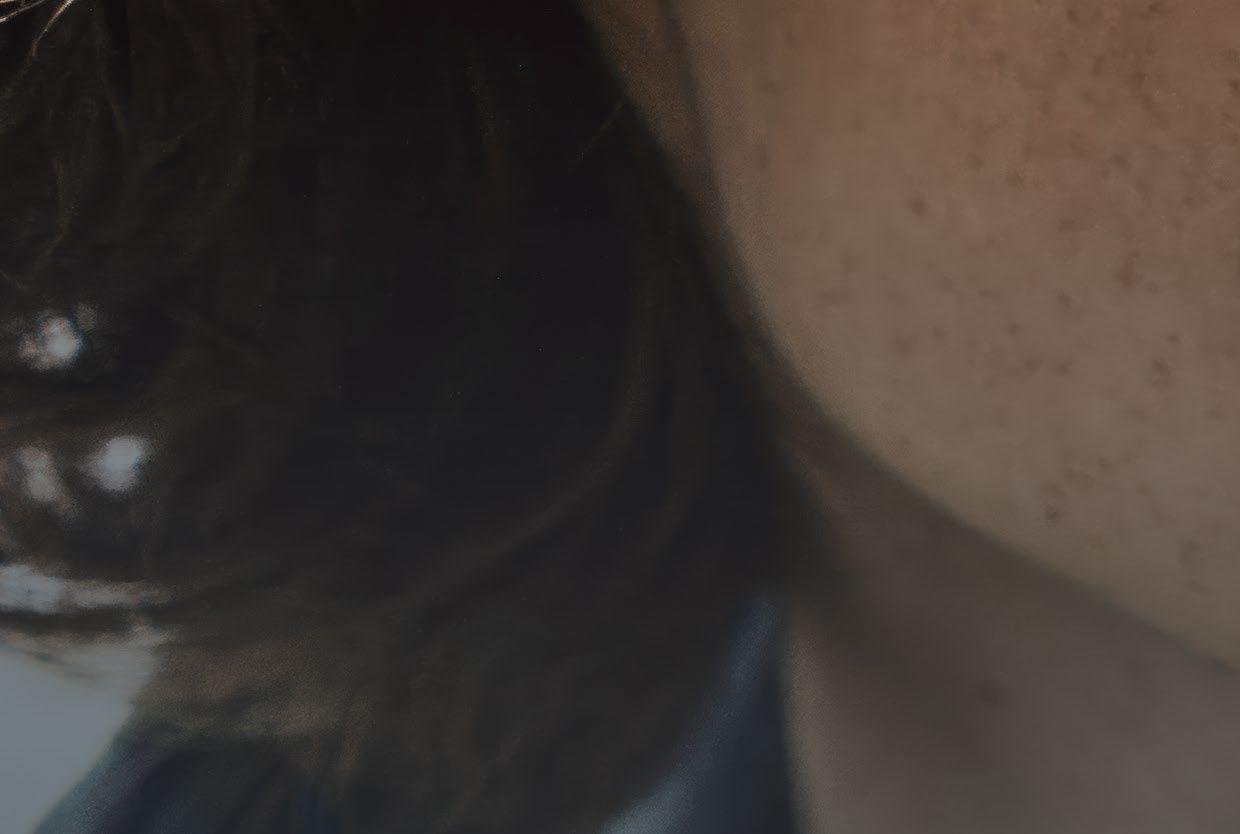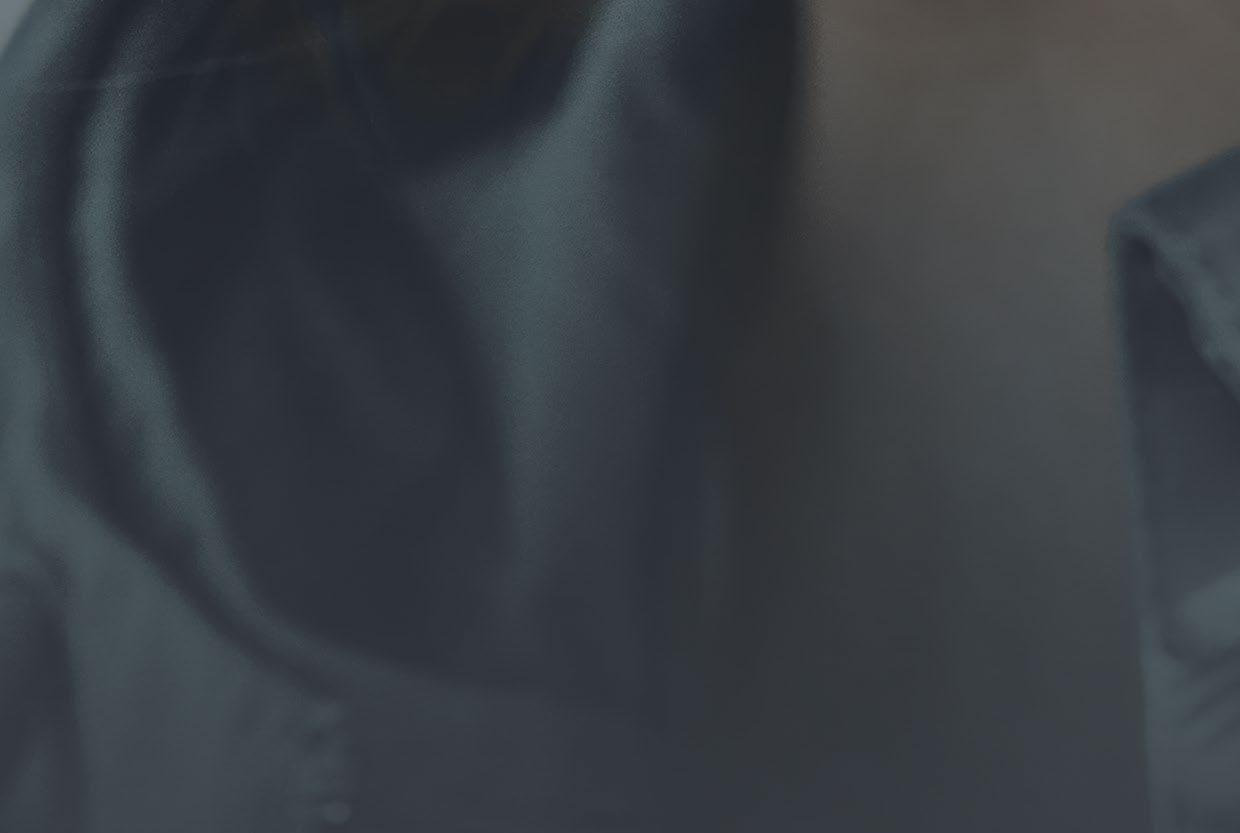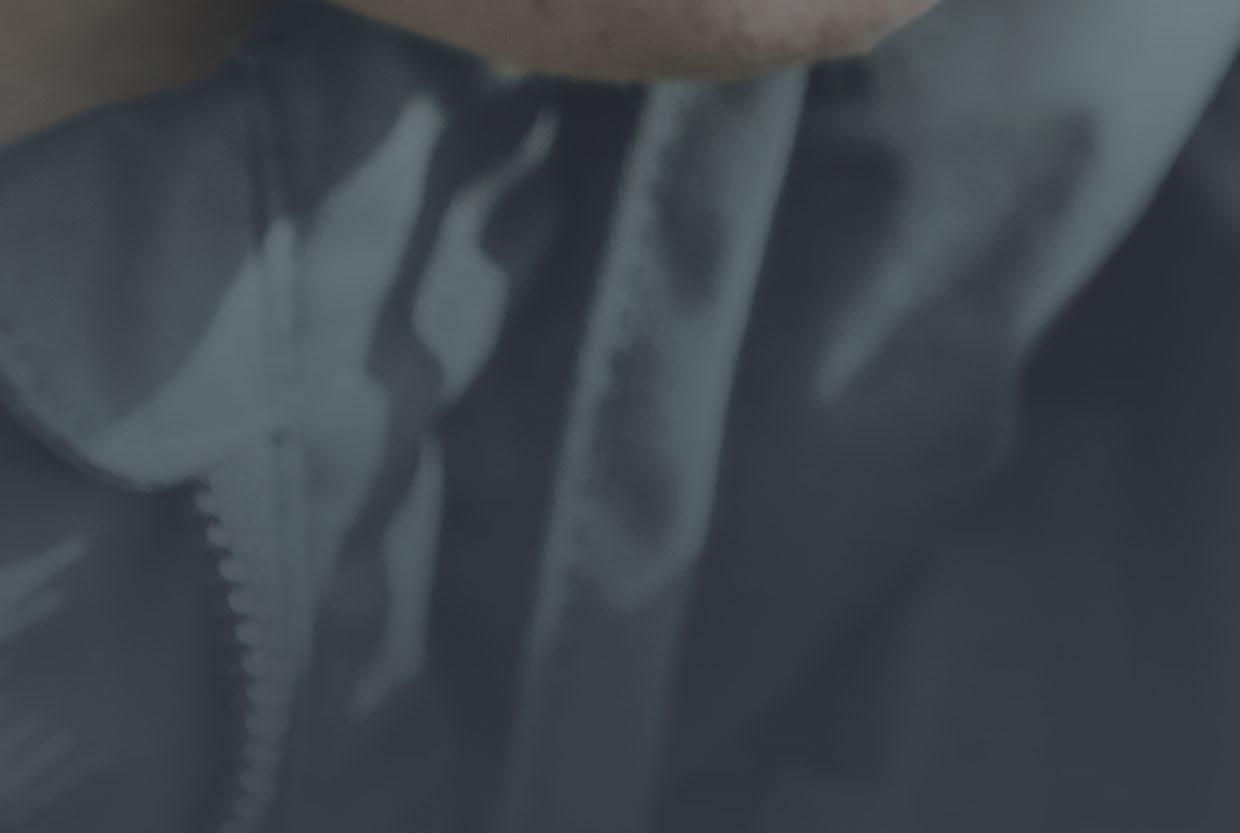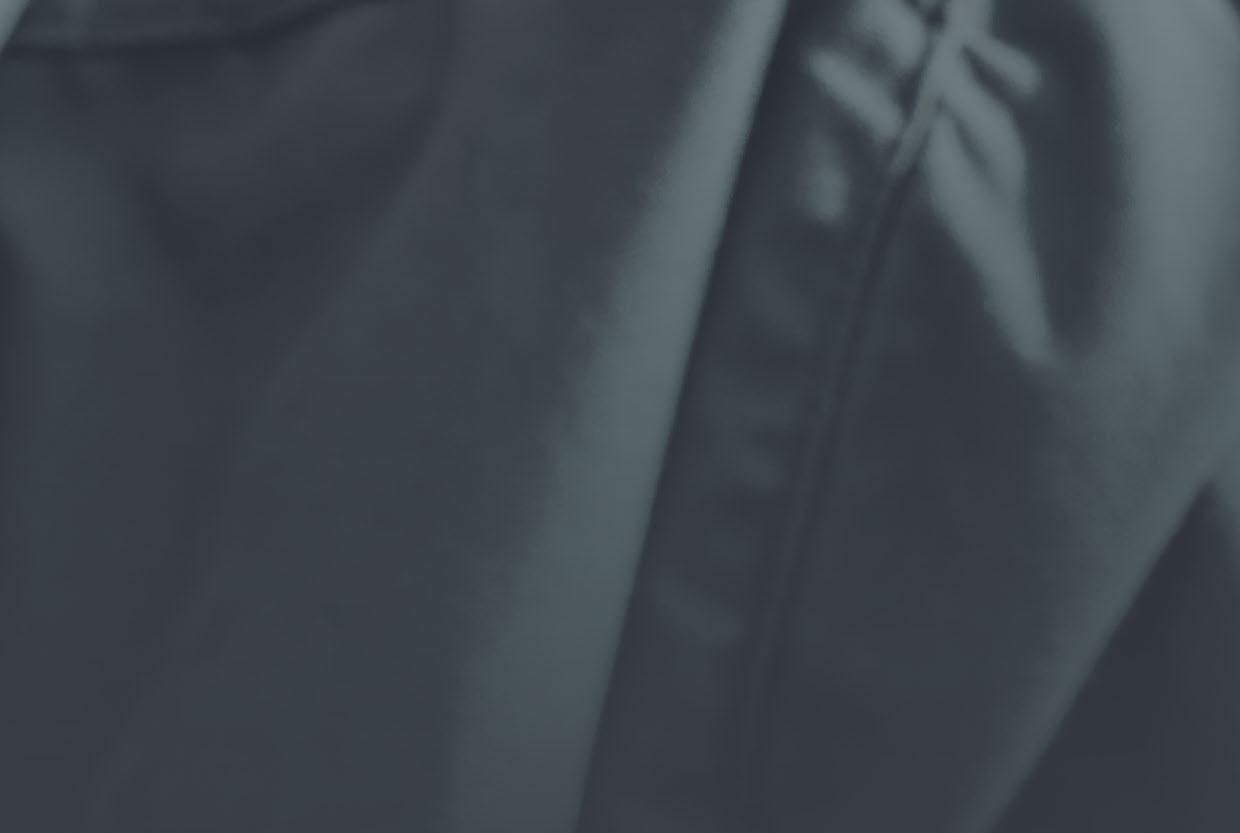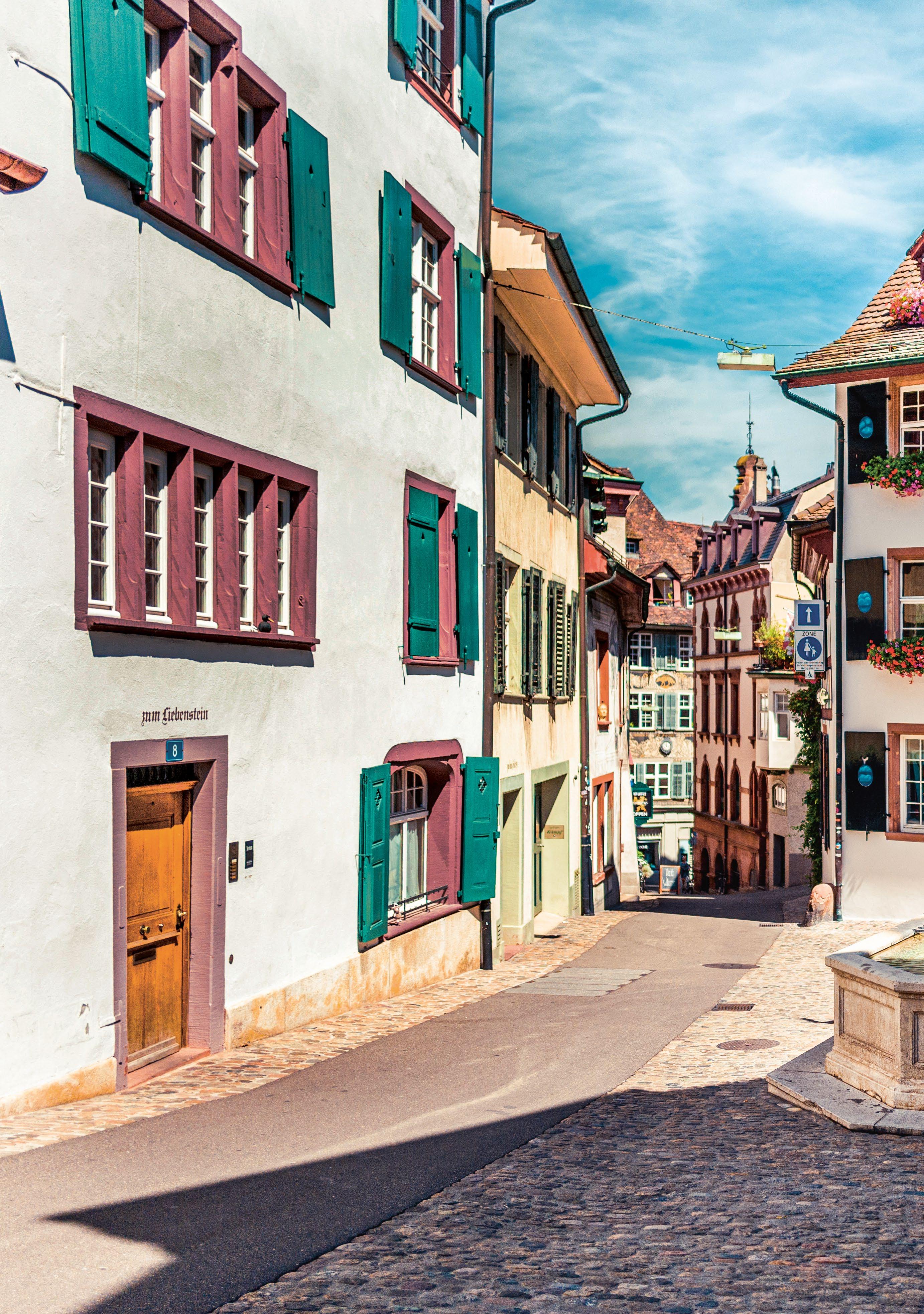

BASEL MOMENTS
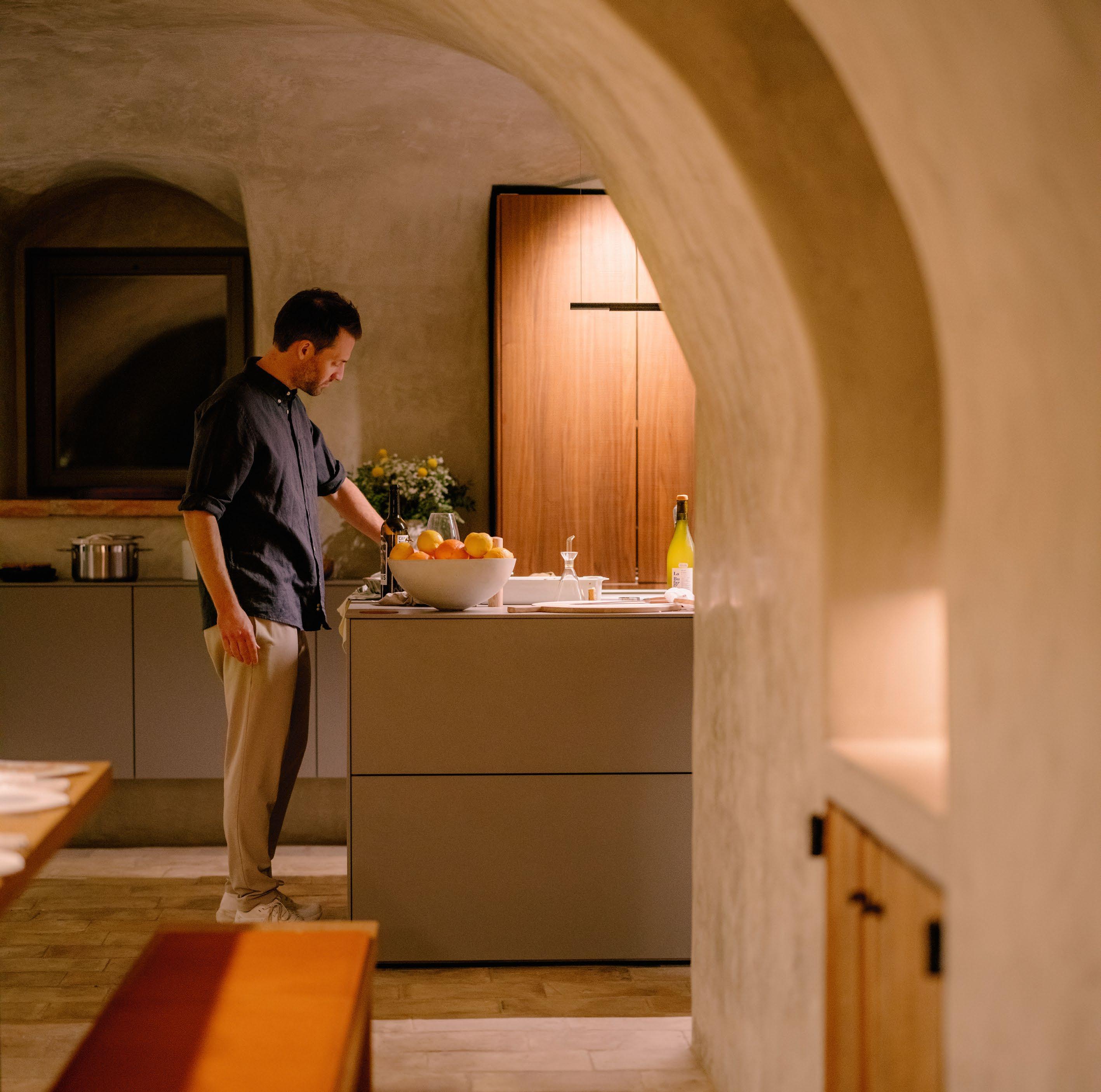
bulthaup kümmert sich um die Details, damit das Umfeld stimmig ist. Wir gestalten das Umfeld für Ihre besonderen Momente.
A04 AG, Margarethenstrasse 63, 4053 Basel Tel. +41 61 331 04 04, bulthaup@A04.ch, basel.bulthaup.com
EDITORIAL
Ein tausend Jahre altes Münster von dessen Türmen aus du bis in den Jura und zum Schwarzwald blicken kannst, mittelalterliche Gassen, grosse Architektur, die älteste Universität der Schweiz, eine pulsierende Kunst- und Kulturszene, hippe Bars und Sternerestaurants und ein Fluss, an und in dem sich im Sommer das ganze Leben abspielt. Das ist Basel, wie es im Reiseführer steht.
Natürlich möchten wir mit diesem Magazin genau diese Vielfalt, die Offenheit und Schönheit der Stadt unterstreichen. Aber wir möchten noch mehr. Geschichten erzählen, die so keine KI generieren kann, Menschen zu Wort kommen lassen, weil sie etwas zu sagen haben, nicht weil sie jemand sind. Hintergründe skizzieren und Orte zeigen, die vielleicht nicht zu den Top Ten-Sehenswürdigkeiten der Stadt gehören, aber dennoch sehenswert, voller Leben und Tradition sind.
Wir tauchen mit dir ein in unser Basel, ermuntern dich, um die Ecke zu schauen und auch mal nach oben, auf unbeschriebenen Pfaden zu gehen und mit den Leuten in Kontakt zu treten. So wirst du die kunterbunte Fülle erleben, die wir an Basel lieben: Grenzenlosigkeit und Innovation, Freude und Genuss, Tradition und Moderne – Leichtigkeit bei gleichzeitiger Tiefe. Übrigens: Das Münster zu besteigen ist zwar ein Alltime-Klassiker – und dennoch immer wieder imposant!
#LoveYourCity
A
PEEK AROUND THE CORNER.
A thousand-year-old cathedral, the view from its spires extending over the Jura mountains in France and the Black Forest in Germany, medieval alleys, imposing architecture, the oldest university in Switzerland, a vibrant art world and cultural scene, hip bars, and restaurants with Michelin stars, and then the river where everything unfolds in summertime. That is Basel, as described by the travel guides.
Of course it is this diversity, openness, and the beauty of the city that we want to highlight with this magazine. But we also want to do more than that. We want to tell stories that no form of AI would be capable of generating, of letting people have their say, because they have a story to tell, not because they are someone important. We want to fill in the background and show you places that may not be one of the city’s top ten attractions, but are worth seeing nonetheless, being as they are, full of life and tradition.
We are going to immerse ourselves and you in our city, Basel, encouraging you to take a peek around the corner and sometimes upwards as well, to follow paths untrodden and to get in touch with the people. This is how you will be able experience the colourful abundance which is what we love so much about Basel: limitlessness and innovation, joy and pleasure, tradition and modernity – nonchalance but also great depth. By the way: climbing to the top of the spires of the cathedral is a well-tried classic – but nonetheless always impressive!
#LoveYourCity
BLICK UM DIE ECKE.
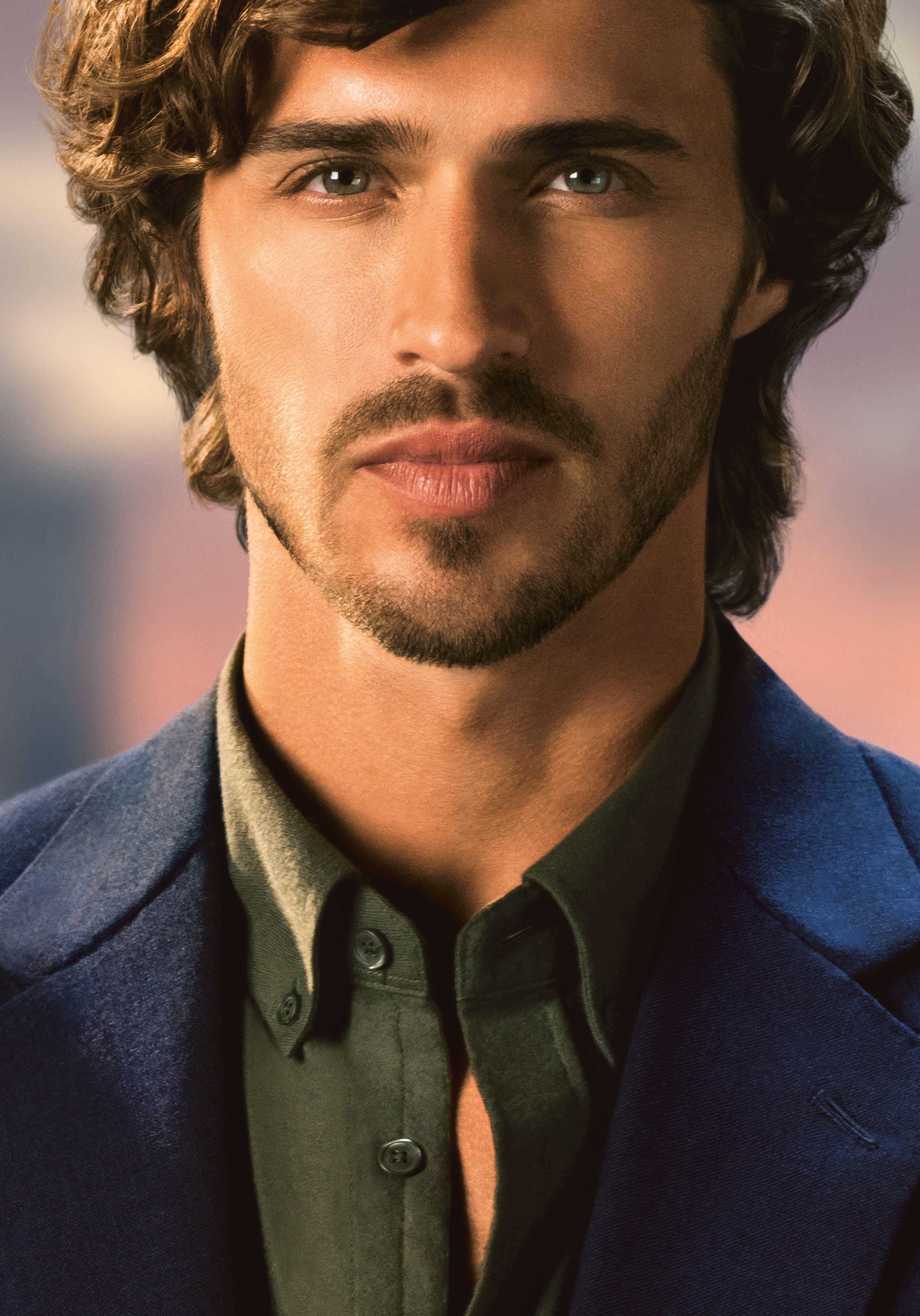


Ihr Bang & Olufsen Partner in Basel
Neu in der Basler Innenstadt – Sie finden uns ab sofort an der Falknerstrasse 9, 4001 Basel.
Wir freuen uns auf Ihren Besuch!
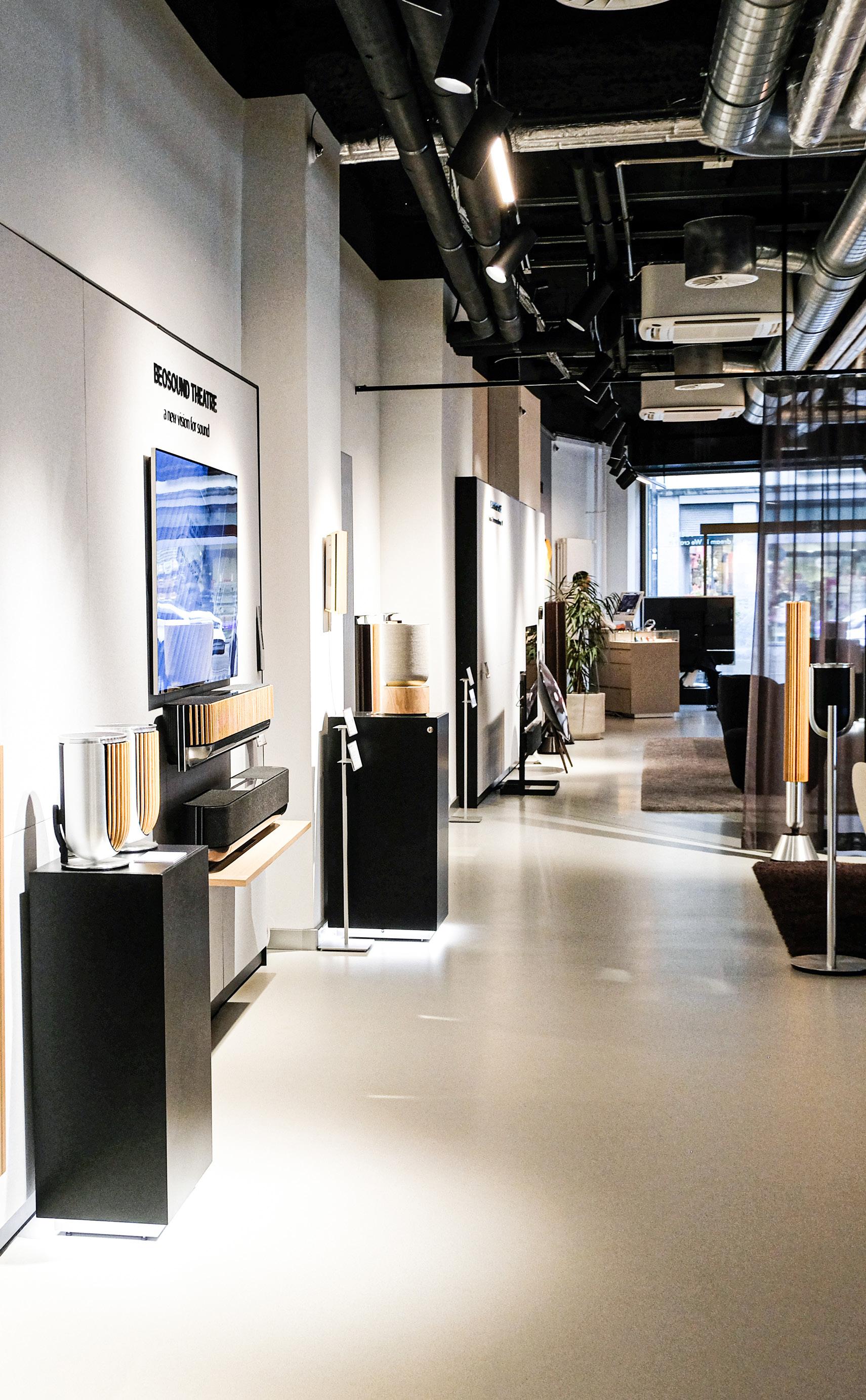

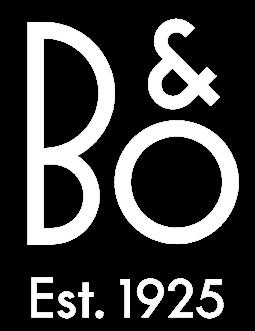
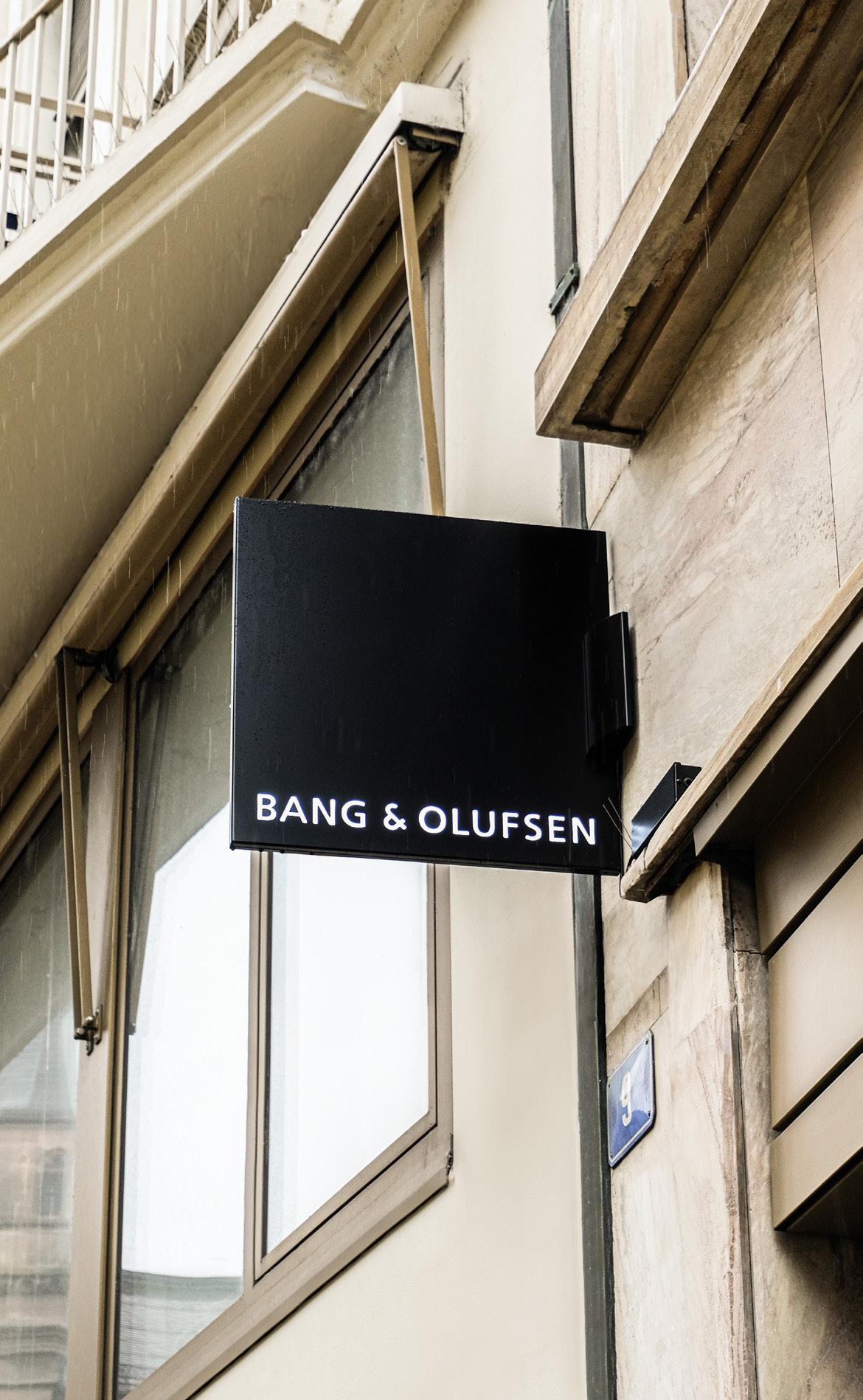
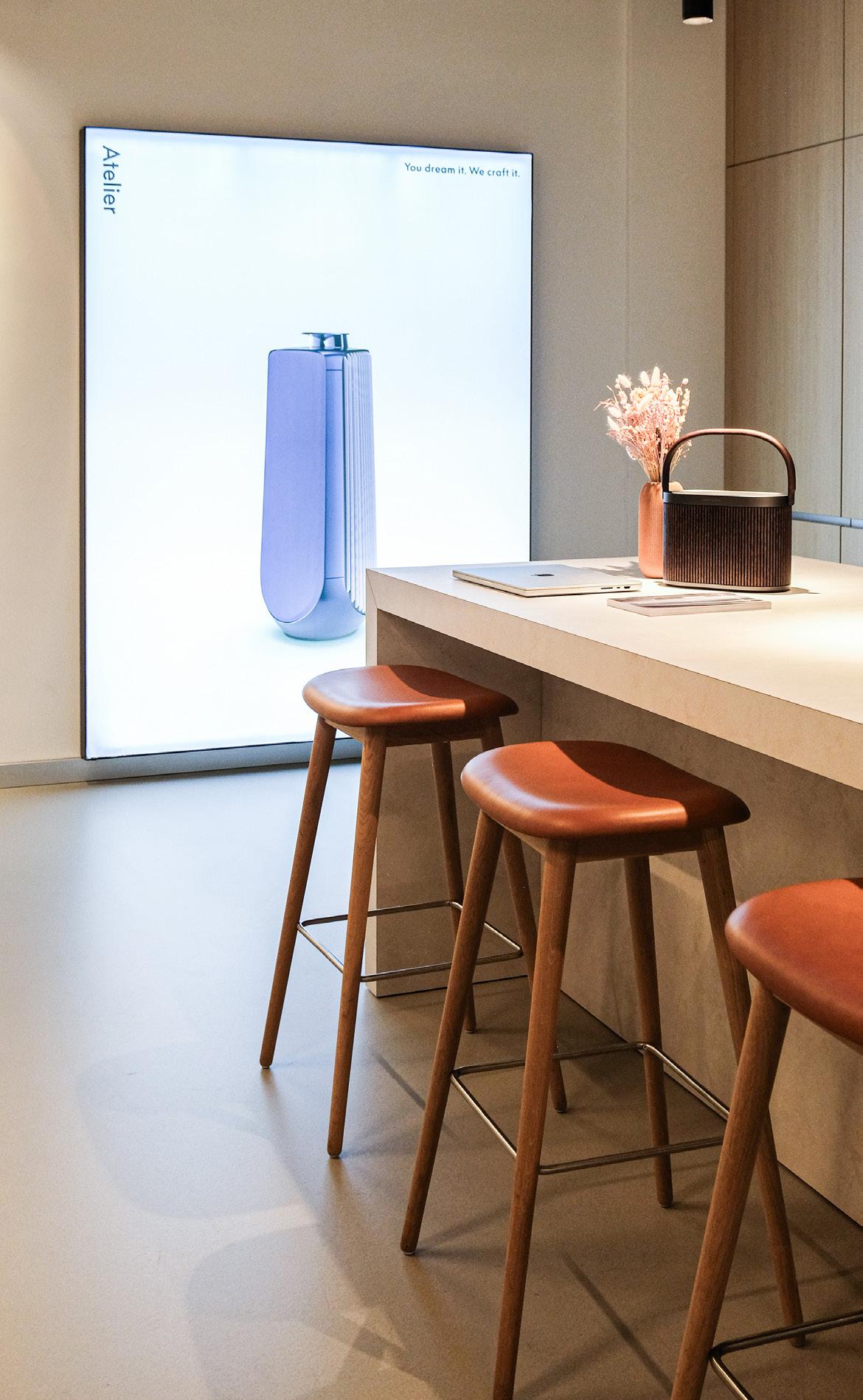

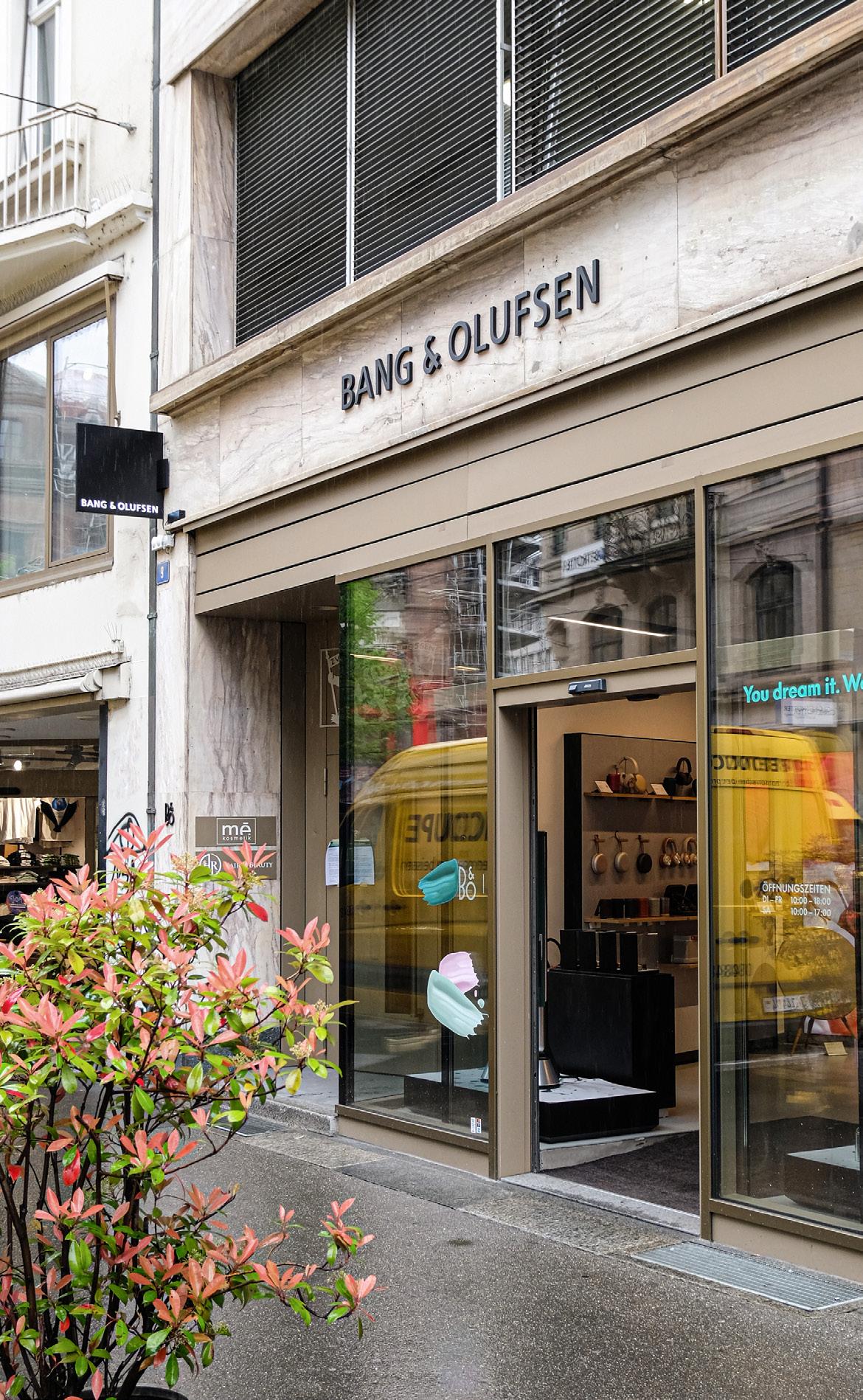

9
IM HERZEN EIN BEBBI, IM GEIST EIN ERFINDER
Roger Brennwald
22
ENTSPANNTE AUSZEIT
24 IM SCHATTEN DES KUNSTWERKS
Knoell Rahmen
36
SCH ÖNES GESCHENK!
Produkte für langanhaltende Freude
44 CHEERS, PROST & CIN CIN
Bars, die glücklich machen
54
SORGLOS NASCHEN ERWÜNSCHT
SHOPPEN MIT GUTEM GEWISSEN
18 IN BASEL GEBRAUT
Sojasauce von Ferment
16
31
WO DAS BROT IN RUHE REIFT
Bäckerei Kult
BASLER GESCHICHTE VERPACKT IN STRASSENNAMEN
47
DIENSTAGABENDS IM HULA CLUB
KREATIV BEFLÜGELT IM SCHÖNEN VEREINT 38 56
Zu Besuch bei Nouvel Été
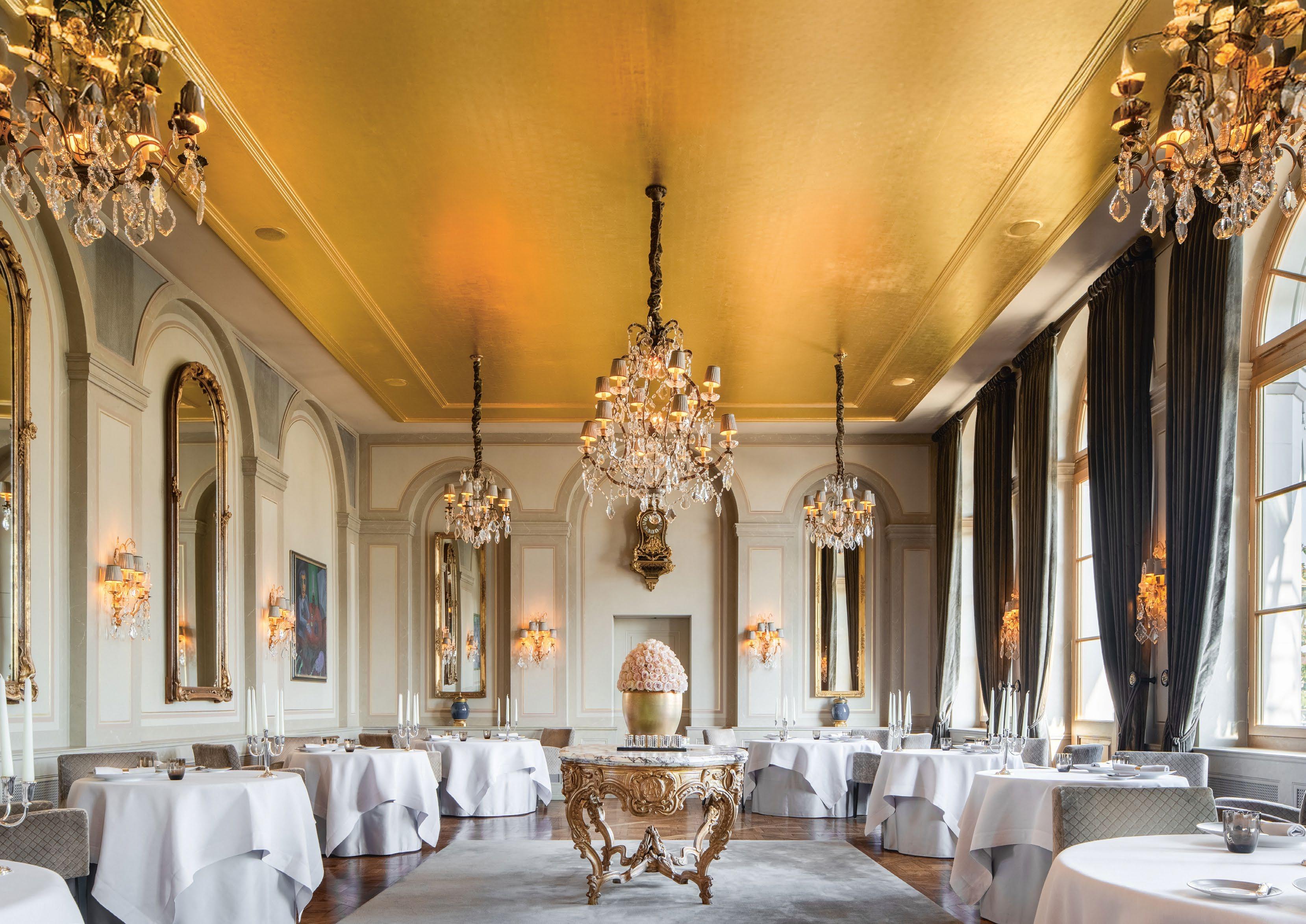
LE ROI GOURMET.
Le Roi Gourmet – unser kulinarisches Angebot für alle, die das Aussergewöhnliche lieben und einen heissbegehrten Platz bei Peter Knogl im Cheval Blanc ergattern möchten.
Weitere Informationen und Reservierungen:
T +41 61 260 51 25 reservation@lestroisrois.com
1 Übernachtung mit Rheinsicht inklusive Frühstück
— Champagneraperitif
— 6-Gang-Menü im Restaurant Cheval Blanc by Peter Knogl, exklusive Getränke (3 Michelin Sterne, 19 GaultMillau Punkte, Platz 1 der weltbesten Restaurants gemäss La Liste 2025)
— Ein Überraschungsgeschenk
— BaselCard (kostenlose Nutzung des ÖV in Basel, 50% auf Kultur- und Freizeitangebote
RIVER KING ROOM ab CHF 775 pro Person
IM GESPRÄCH MIT ROGER BRENNWALD
IM HERZEN EIN BEBBI, IM GEIST EIN ERFINDER
Es gibt viele Superlative für die Swiss Indoors, an deren Spitze ein aussergewöhnlicher Kopf steht: Roger Brennwald. Mit dem Biss eines Sportlers, dem Esprit eines Erfinders und dem Herzen eines Bebbis hat er das ATP-Turnier in den vergangenen 55 Jahren zum sportlichen und gesellschaftlichen Höhepunkt des Jahres geformt, das Menschen über die Grenzen hinweg bewegt.

Dass es sich im Alter auszahlt, wenn man ein Leben lang in Bewegung bleibt, dafür ist Roger Brennwald ein blühendes Beispiel. Aufrecht und dynamisch betritt der Mann, der Ende der 1960er-Jahre mit Anfang 20 das heute drittgrösste Tennis-Hallenturnier der Welt ins Leben rief, sein Büro im Headquarter der Swiss Indoors in Allschwil. 79 Jahre alt ist er und kann mit Menschen der Generation X oder Y locker mithalten. Über sein Alter macht er sich kaum Gedanken. «Sonst glaubt es mir mein Hirn am Ende noch», schmunzelt er. Die Arbeit hält ihn jung und gesund. Angesichts seines Scharfsinns und seines analytischen Blicks wäre es eine Verschwendung von Ressourcen, wenn er seinen über 50 Jahre angesammelten Erfahrungsschatz nicht weiterhin in die Swiss Indoors einbringen würde.
Was ist dieser Brennwald für ein Typ, dass er als Jungspund auf die wahnwitzige Idee kam, eine Tennishalle zu kaufen? Wie schaffte er es, aus einem Plausch-Turnier einen hochdotierten Anlass zu machen, der seit einem halben Jahrhundert die Nummer-Eins-Tennisspieler der Welt anzieht? Was bedeuten ihm diese Swiss Indoors persönlich? All das versuchen wir im Gespräch herauszufinden. Eine Spurensuche, die uns Roger Brennwald nicht immer leicht macht. Tausende von Anekdoten hat er auf Lager, zudem zahlreiche Leitsätze, die ihn und seine Karriere geprägt haben. Es gilt, leise Zwischentöne zu spüren, um den Menschen dahinter zu begreifen. Brennwald ist skeptisch. Zu oft wurde er in seinem Leben falsch zitiert, fühlte sich missverstanden, zu oberflächlich abgehandelt. Kaum einer, sagt er, habe es je auf den Punkt gebracht, welche Werte ihm wichtig sind. «Loyalität und Integrität innerhalb eines geschlossenen Teamworks, das nicht auf Leistung und Anstrengung beschränkt ist. Miteinander und nicht gegeneinander heisst die Devise», so Brennwald. Für ihn heisst Leadership aber auch, Verantwortung zu tragen und den Dingen nicht freien Lauf zu lassen. Er ist keiner, der sich verbiegt und den anderen nach dem Mund redet. Swiss Indoors, das ist Roger Brennwald. Dieses Vermächtnis trägt er behutsam auf Händen. Zu Recht.
Text: Janine Wagner / Bilder: Swiss Indoors Basel
Roger Brennwald überreicht Guillermo Vilas nach dem Finalerfolg über John McEnroe den Siegerpokal (1978).
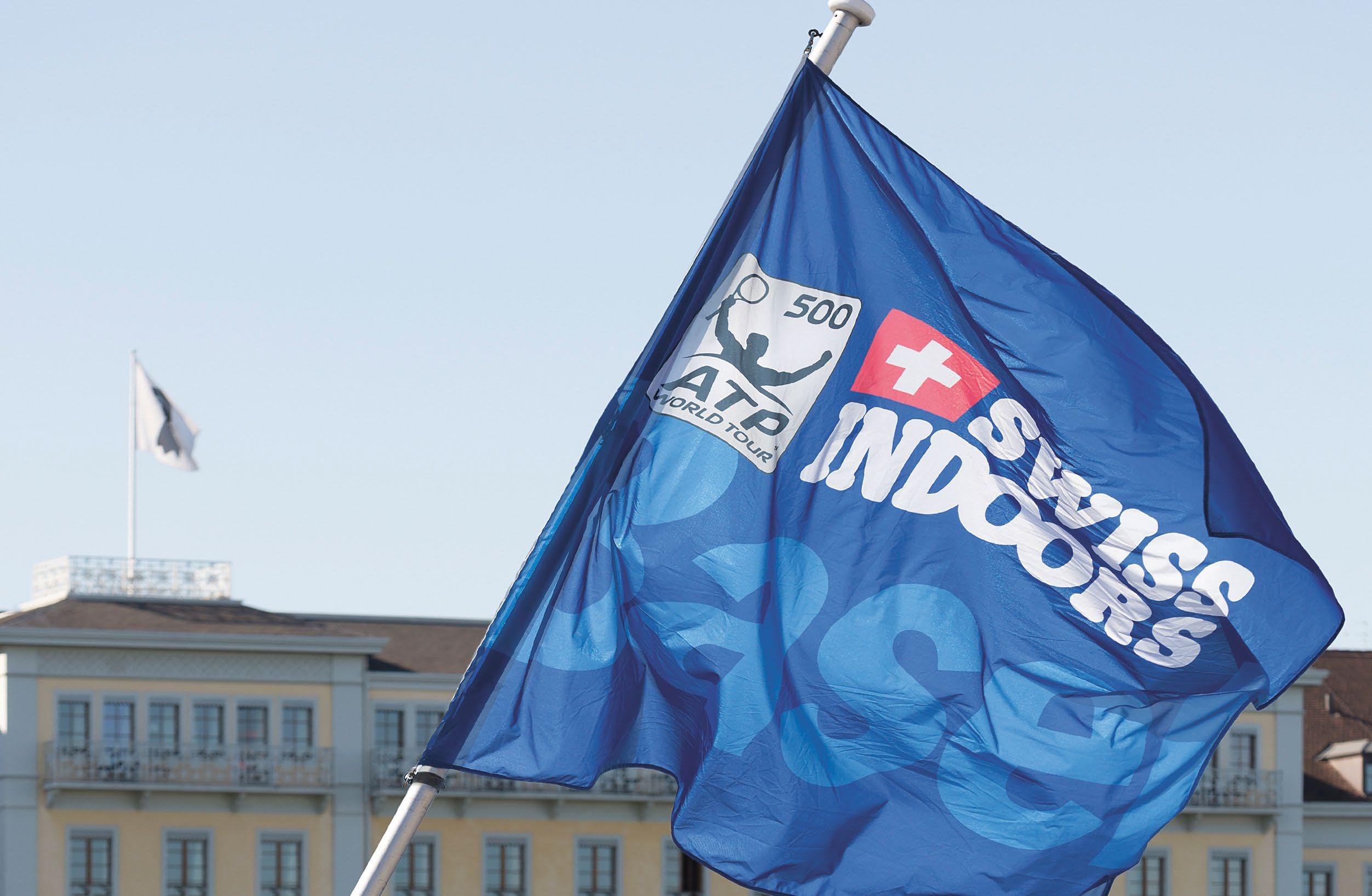
Das perfekte Sportlerleben
Roger Brennwald ist ein Sportler durch und durch und das seit immer. «Mir wurde ein gewisses Talent für Sport in die Wiege gelegt», meint er bescheiden. «Als 12-jähriger Bub verbrachte ich mehr Zeit auf dem Fussballplatz als hinter den Hausaufgaben.» Der vier Jahre ältere Karli Odermatt wollte ihn zum FC Concordia holen, doch Vater Brennwald sprach ein Machtwort. «Das waren die 1950er-Jahre. Fussballspielen gehörte sich damals nicht», so Roger Brennwald, der sich fortan auf Leichtathletik und Handball konzentrierte. Kugelstossen, Speer, Weitsprung oder Laufdisziplin – überall feierte er Erfolge. Zudem spielte er bereits mit 16 Jahren in der Nationalliga A des RTV Basel, wenig später in der Handball-Nationalmannschaft. Tennis spielte er nur am Rande. «Ein ernstzunehmender Tennisspieler war ich nie.» Beruflich absolvierte Brennwald die kantonale Handelsschule, liess sich zum Devisenhändler ausbilden. 19 Jahre lang arbeitete er bei der BIZ, der Bank für Internationalen Zahlungsausgleich. «Zu jener Zeit erfuhr ich parallel zur Organisation der Swiss Indoors die beste Lebensschule, die man sich vorstellen kann.»
Von der irrwitzigen Idee zum Geschäftsmodell Auf dem einzigen verfügbaren Indoor Tenniscourt der Region, in der Messe Basel, wurde Roger Brennwald eines Tages mit desolaten Zuständen konfrontiert. «Wir spielten bei Dämmerlicht und minus zwei Grad mit Handschuhen auf Beton. Mitten im Feld GulliDeckel, von denen der Ball in alle Richtungen sprang; schlicht unzumutbare Verhältnisse.» Doch wie das Leben so spielt; in der Rekrutenschule in Thun traf Brennwald auf einen passionierten Tennisspieler, der ihn auf die Idee brachte, der Hallenmisere ein Ende zu bereiten und eine Tennishalle anzuschaffen. Wie sich später herausstellte, ein Schlüsselereignis für sein ganzes späteres Leben.
«Als mein Vater von der Idee erfuhr, schüttelte er nur den Kopf.» Roger Brennwald lacht. Das Vermieten von Hallenplätzen an Tennisspieler schien Vater Brennwald ein dubioses Geschäftsmodell. «Er riet mir, auf das riskante Vorhaben zu verzichten. Aber mein Bauchgefühl sagte etwas anderes.» Roger Brennwald fand einen Fabrikanten von Traglufthallen in Schweden. Weil seine Ersparnisse für deren Kauf nicht ausreichten, handelte er bei einer Bank einen Kredit über 40'000 Franken aus. Im Jahre 1969 montierte er die erste Ballonhalle der Schweiz auf dem Areal des Tennisclub Coop in Muttenz. Innerhalb zweier Monate wurde der Kredit zurückbezahlt. Roger Brennwald kann nämlich nicht nur mit Bällen umgehen, sondern auch mit Zahlen.
Am Ende der ersten Tennis-Wintersaison zündete der 23-jährige Brennwald die Turnierrakete und schickte sie auf Umlaufbahn. Er organisierte ein Turnier für alle, die in seiner Halle trainiert hatten. Mit dabei waren die besten Tennisspieler der Schweiz, alle aus Basel, unter ihnen Matthias Werren, Martin Froesch, Ernst Schori und Heinz Grimm. Den rund 50 Zuschauerinnen und Zuschauern, die am Rande der Ballonhalle Platz fanden und aufpassen mussten, nicht von einem querfliegenden Tennisball getroffen zu werden, wurde bereits im allerersten Brennwald-Turnier Tennis der nationalen Elite geboten. Damaliges Budget: 1000 Franken. Der Siegerpreis in Form einer Armbanduhr wurde von einem Onkel gesponsert, dem die Uhrenfabrik Zodiac in Le Locle gehörte.
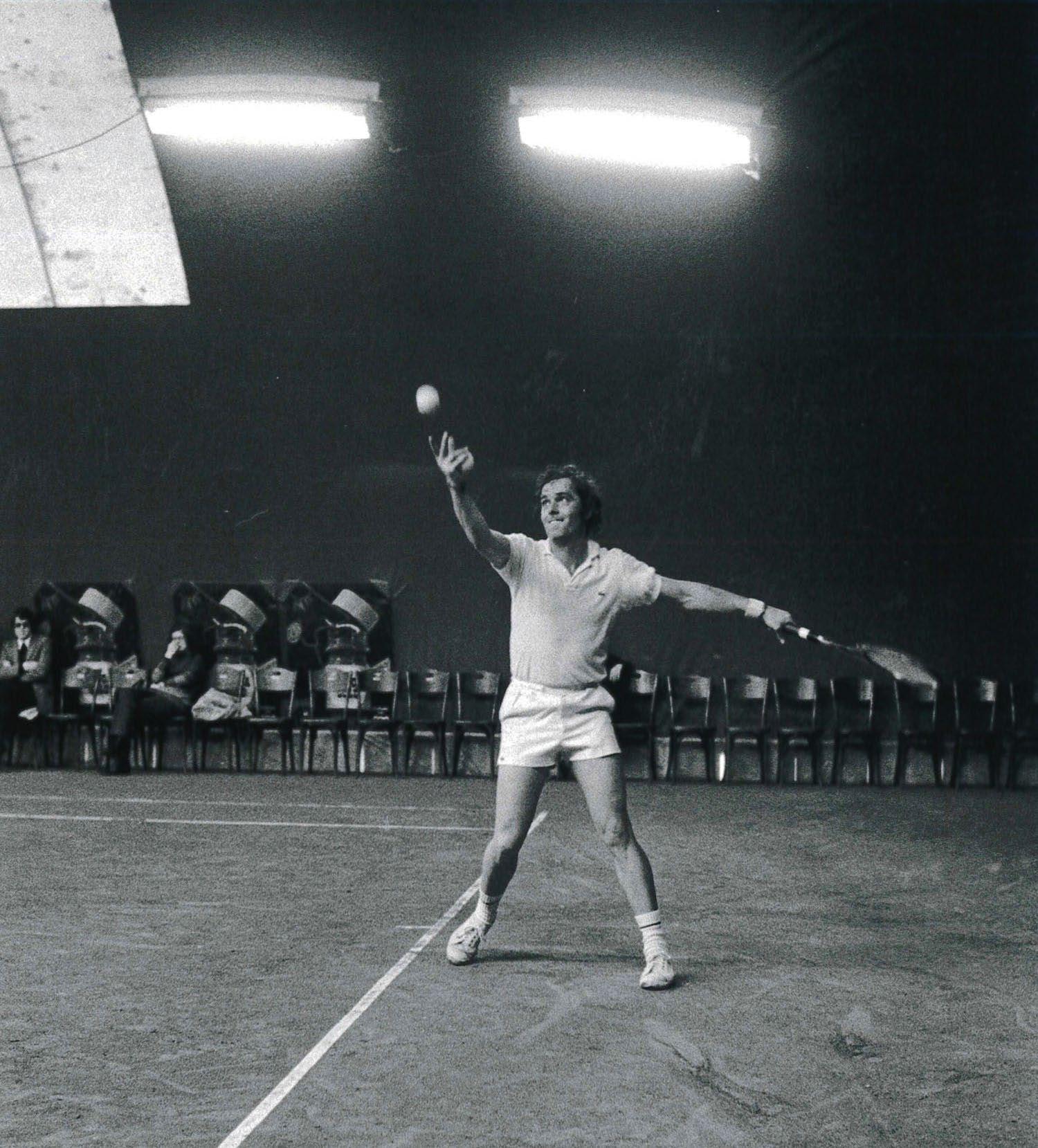
Basel –The Name of the Game.
Bescheidener Anfang 1969 in der Ballonhalle mit Matthias Werren.

Indoors und Basel gehören zusammen – Center Court-Atmosphäre, wie sie nur Basel kennt.
Pioniergeist, kluge Entscheidungen und ein wenig Glück Rückblickend sind wohl auch glückliche Fügungen verantwortlich dafür, dass die Swiss Indoors bis heute die Massen begeistern. Der Schlüssel zum Erfolg jedoch liegt in Roger Brennwald selbst. Er ist ein Pionier und Visionär mit unerschütterlicher Leidenschaft, mit feinem Gespür für Chancen und Entwicklungen im Schweizer Sport und der Begabung, im richtigen Moment am richtigen Ort zu sein. Anders ist es nicht zu erklären, dass er 1974 beherzt in die Kabine des mehrfachen Wimbledon-Siegers Björn Borg in Roland Garros in Paris spazierte und ihn auf das Turnier in Basel ansprach. Borg band seine Schuhe und fragte kühl: «Wo liegt denn Basel?» Diese Begegnung blieb beiden in den Köpfen hängen – ein weiteres Schlüsselerlebnis in der Historie der Swiss Indoors. Borg, der Rockstar unter den Sportlern, kam 1975 erstmals für ein Showturnier nach Basel. Die Besucherzahlen explodierten.
Mit glühenden Augen berichtet Roger Brennwald vom sagenhaften Endspiel 1980 zwischen Borg und Lendl, an dem der unbekannte 19-jährige Lendl den fünffachen Wimbledon-Sieger Borg in einem legendären Finale schlug … «In der Swiss-Indoors-Geschichte sind dermassen viele verrückte Dinge passiert, dass man kaum einen Satz zu Ende führen kann, ohne gleich mit einer weiteren Anekdote zu beginnen.» Ein Buch müsste es geben über Roger Brennwald und seine Erlebnisse in der Tenniswelt, die sich durch die Kommerzialisierung im Laufe der Jahre spektakulär veränderte. Eines, in dem er auch seine wie Leuchtfeuer im Gespräch aufflammenden Leitsätze erläutern könnte: A deal is a deal! Alles ist schwierig, bevor es einfach wird! Sei immer zu einem Gespräch bereit, der andere könnte ja recht haben! Wer keine Freude hat an den Menschen, an dem haben die Menschen auch keine Freude!

Bindung zwischen Björn Borg und Roger Brennwald.
Enge
Swiss
Mehr als ein Tennisturnier
Es ist ein Ding der Unmöglichkeit, den Menschen Roger Brennwald in ein paar hundert Zeichen zu fassen. Gerät er ins Erzählen, sprudeln wundersame Geschichten längst vergangener Tage aus ihm heraus. Dem Perfektionismus geschuldet verzweifelt er latent darüber, dass diese zahlreichen besonderen Begebenheiten auch in diesem Text wieder keinen Platz finden werden, ja, keinen Platz finden können – wie auch, es sind einfach zu viele. Mit über 2000 Tennisspielern hatte er es zu tun, darunter Namen wie Jimmy Connors, John McEnroe, Andre Agassi, Ivan Lendl, Pete Sampras, Boris Becker, Roger Federer, Rafael Nadal oder Novak Djokovic. Mit jedem einzelnen Spieler verbinden ihn Erinnerungen. Doch der Platz ist knapp und verlangt nach letzten Highlights. Besonders am Herzen liegt Brennwald die Jugendförderung – am Sitz der Swiss Indoors befindet sich das von ihm erstellte Sportcenter Paradies, in deren Academy wöchentlich bis zu 400 Kinder und Jugendliche geschult werden – auch das aktuelle Schweizer Jungtalent Henry Bernet begann seine Karriere hier und es ist hinlänglich bekannt, dass der junge Roger Federer einst Balljunge bei den Swiss Indoors war.
Sein Schlussplädoyer widmet Roger Brennwald der Stadt Basel, seiner Heimat. «Hier bin ich geboren, aufgewachsen, zur Schule gegangen, hier bin ich tief verwurzelt», erklärt er. Und mit ihm sind es die Swiss Indoors, die seit 1975 in der St. Jakobshalle stattfinden. Dass die Swiss Indoors mehr sind als ein Tennisturnier, betont Brennwald mehrfach und mit Nachdruck. «Die Swiss Indoors sind ein Happening, in deren Zentrum das Zusammenführen von Menschen steht. Hier fiebern, feiern, lachen und weinen Jung und Alt gemeinsam. Nicht selten entstehen dabei Freundschaften und sogar Partnerschaften fürs ganze Leben.» Roger Brennwald, der Pionier, schuf dieses Turnier aus einem unermüdlichen Drang heraus, Neues zu schaffen, Grenzen zu verschieben und aus kleinen Anfängen Grosses entstehen zu lassen. Seit 55 Jahren ist er der Mann hinter den Swiss Indoors, der mit Struktur, Durchhaltevermögen, Verständnis und Geduld für unvergessliche Sportereignisse sorgt. «Mir konnte im Leben nichts Besseres passieren! Dafür bin ich allen, die mich auf der langen Wegstrecke unterstützt und begleitet haben, unendlich dankbar», beendet er seine zweistündige, flammende Rede in seinem Büro und lächelt spitzbübisch. «Hoffentlich habe ich Sie mit meinen Erzählungen nicht erschöpft.»
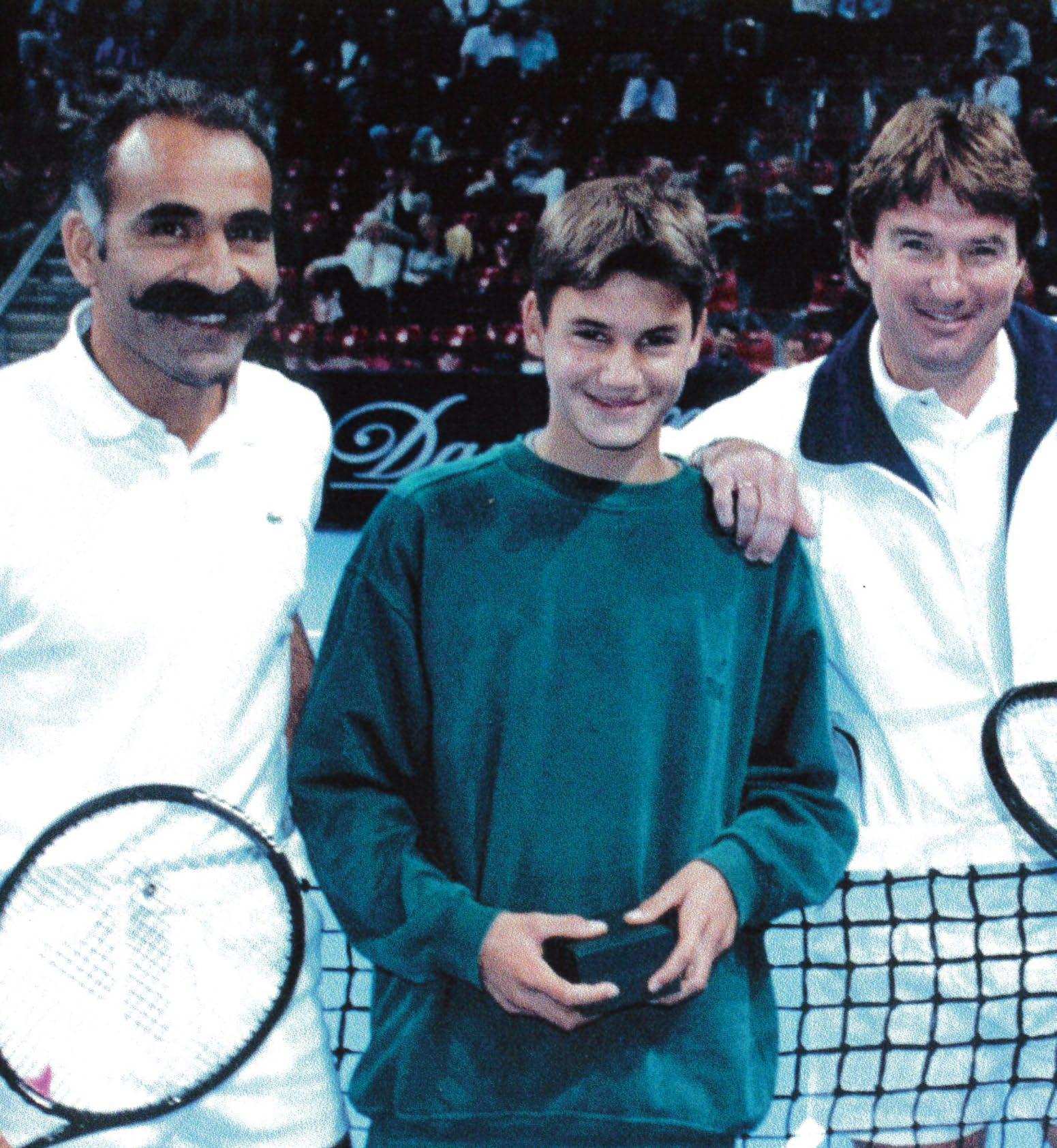
SWISS INDOORS BASEL IN KÜRZE
- 1970 ins Leben gerufen vom Basler Roger Brennwald
- Drittgrösstes Hallentennisturnier der Welt
- Gehört zur Formel ATP Tour 500
- Grösster alljährlich wiederkehrender Sportevent der Schweiz
- Budget: CHF 18,5 Mio.
- Zieht jährlich rund 60'000 Menschen an
- Total 3500 TV-Stunden in 150 Ländern der Welt
- 17 Jahre lang war Oettinger Davidoff Titelsponsor des Turniers
- Am Eröffnungstag, dem «Super Monday», sorgten Weltstars wie Montserrat Caballé, Paul Anka, Udo Jürgens oder Anastacia für magische Momente.
- Bis auf Yanick Sinner spielten alle Nummer 1 Spieler der Welt in Basel.
- Für seine Verdienste wurde Brennwald mit zahlreichen Auszeichnungen geehrt – darunter mit dem «Lifetime Award». swissindoorsbasel.ch

Ein Bild für die Ewigkeit: Ballboy Roger Federer flankiert von Mansour Bahrami und Jimmy Connors (1995).
Pete Sampras, 286 Wochen die Nummer 1 des Welttennis und stolzer Sieger an den Swiss Indoors 1996.


LAD FROM BASEL, IN SPIRIT AN INNOVATOR
There are plenty of superlatives that apply to the Swiss Indoors, headed as it is by an extraordinary man: Roger Brennwald. Over the last 55 years, with the determination of a sportsman, the spirit of an innovator, and the heart of a local lad from Basel, he has turned the ATP tournament into the sporting and social highlight of the year, one that radiates far beyond the Swiss borders.
Roger Brennwald is a flourishing demonstration of the truth of the maxim: remaining active throughout your life pays off in old age. This man who, at the end of the 1960’s, while still in his early twenties, founded what is now the world’s third largest indoor tennis tournament, is unbowed and dynamic as he walks into his office at the headquarters of the Swiss Indoors in Allschwil. He is 79 years old but has no problem keeping up with members of generation X and Y. He wastes no time thinking about his age. “Otherwise, my brain would end up believing me.” he grins. His work keeps him young and healthy. With his acumen and analytical vision, it would be a real waste of resources if he ceased to bring his wealth of experience, accumulated over 50 years, to the Swiss Indoors.
One day, Roger Brennwald was confronted with the absolutely desolate state of the only indoor tennis court in the entire region, in the exhibition halls in Basel. “We were playing in the gloom, wearing gloves, the temperature minus two degrees Celsius, the floor of concrete, and in the middle of the court there were manhole covers which made the ball shoot off in every direction if it landed on them; the conditions were completely inacceptable.” AT HEART A LOCAL
What kind of man is this Brennwald, who came up with the crazy idea of buying an indoor tennis centre when he was still such a youngster? And how did he then manage to transform a friendly tournament into a well-endowed Formula 500 event, part of the global ATP Tour, which has been attracting the world’s number-one tennis players for half a century now? What does the Swiss Indoors mean to him personally? This is what we want to find out in this interview: to track down his trail; but Roger Brennwald does not always make it easy for us.
He has thousands of anecdotes in store, as well as a whole list of guiding principles that have formed him and his career. But to get a sense of the man behind it all, you have to listen out for the subtle nuances while he talks. Brennwald is sceptical. He has been misquoted too often in his life, felt misunderstood, and been treated too superficially. Next to no one has ever put their finger on the values that are truly important to him, he says. “Loyalty and integrity; working in a united team, its goals not limited to just performance and effort. The motto is working with each other and not against each other.” says Brennwald. But for him, leadership also means taking responsibility, not just letting things take their course. He is not someone who bends over backwards to tell other people what they want to hear. Swiss Indoors is Roger Brennwald. And he cherishes his legacy with devotion. Rightly so.
The perfect sports life
Roger Brennwald is a sportsman through and through, and always had been. “I was born with a bit of a talent for sport;” he says modestly. “As a 12-year-old boy, I spent more time hanging out at the football field than doing my homework.” Karli Odermatt, who was four years older than him, wanted him to come and join the FC Concordia team, but Brennwald’s father put his foot down. “That was the 1950’s. Playing football was not considered respectable in those days.” Roger Brennwald explains, so he immediately turned his attention to track and field athletics and handball. Shot put; javelin; long jump; track athletics – he was successful at all of them. At 16 he was already competing with Basel’s National A-League handball team, the RTV Basel, and a little later he was recruited to the Swiss national handball team. Tennis was something he played on the side. “I was never a serious contender in tennis.” In terms of his career, Brennwald graduated from the Cantonal Business School and trained as a foreign exchange trader. For 19 years he worked at the BIS, the Bank for International Settlements. “So, at that time, I was experiencing the best schooling in real life imaginable, parallel to organising the Swiss Indoors.”
From the absurd idea through to the business model
Photo gallery in Roger Brennwald's office.

But then, as happens in life sometimes: while serving his stint at the military training school in Thun, Brennwald became acquainted with an ardent tennis player, who was also of the opinion that the miserable state of the indoor tennis facilities had to come to an end and that they should acquire an indoor tennis hall. This was to be a critical moment that determined the rest of his life, as later became clear.
“When my father heard about this plan, he just shook his head.” Roger Brennwald laughs. Brennwald’s father considered renting out indoor courts to tennis players a dubious business model. “He advised me to abandon such a risky venture. But my gut feeling was telling me otherwise.” Roger Brennwald found an airdrome manufacturer in Sweden. Because the money he had saved up did not cover the entire cost, he took out a loan of 40,000 Swiss francs from a bank. In 1969 he set up the first airdrome hall in Switzerland, in the grounds of the Co-op Tennis Club in Muttenz. He had already paid the loan back within two months. Roger Brennwald is not just good at ballgames, he’s handy with numbers too.
At the end of the first winter-tennis season, the 23-year-old Brennwald decided to launch his tournament idea and send it skyrocketing into orbit. He organised a tournament for everyone who had trained at his tennis hall. This included some of the best tennis players in Switzerland, all of them from Basel, including Matthias Werren, Martin Froesch, Ernst Schori and Heinz Grimm. The 50 or so spectators who were scattered around the edge of the airdrome hall and who had to avoid being hit by one of the tennis balls flying around the courts, were treated to tennis played by the national elite at Brennwald’s first ever tournament. The budget at the time: 1,000 Swiss francs. The prize for the winner came in the form of a wristwatch donated by his uncle who owned the Zodiac watch factory in Le Locle.

Yannick Noah defeats Ronald Agenor in the first all-dark-skinned final in world tennis (1987).
Magic moments with world stars on Super Monday.
A pioneering spirit, wise decisions, and a bit of luck
Looking back, it has to be admitted that some lucky coincidences also contributed to the fact that the Swiss Indoors is still thrilling crowds of onlookers today. But the key to his success is Roger Brennwald himself. He is a pioneer and a visionary with an unwavering fervour, a fine instinct for opportunities and developments in Swiss sport, and an uncanny knack of being in the right place at the right moment. How else to explain the fact that, in 1974, he boldly wandered into Björn Borg’s dressing room at the Roland Garros French Open tournament in Paris, when Borg had already won Wimbledon several times, and chatted to him about the tournament in Basel. Borg was tying his shoe laces and dryly asked: “And where is Basel?” This encounter stuck in both their memories – and it was another turning point in the history of the Swiss Indoors. In 1975, Borg, the rock star of the sports world, came to Basel for the first time, for an exhibition match. The number of spectators exploded.

His eyes glowing, Roger Brennwald recounts the legendary 1980 final between Borg and Lendl, during which the complete unknown, Lendl, just 19years-old, beat the five-time Wimbledon champion Borg … “So many crazy things have happened at the Swiss Indoors over the years, that you can hardly finish talking about one of them, without immediately launching into the next anecdote.” There should really be a book written about Roger Brennwald and all his experiences in the world of tennis, which has transformed so spectacularly over the years due to commercialisation. A book in which he could explain the guiding principles that flare up like beacons in the conversation: “A deal is a deal! Everything is difficult, till it suddenly becomes easier! You should always be ready to discuss things, because the other person mightbe right! If you don’t enjoy people’s company, people won’t enjoy your company either!”
More than just a tennis tournament
It is impossible to capture the man, Roger Brennwald, in a few hundred words. When he starts recounting, wondrous tales of days gone by simply bubble out of him. He is such a perfectionist that he can’t help but despair that not all these many special happenings will find space in this article – but how could they? There are simply too many of them. He has had dealings with more than 2,000 tennis players, including all the great names such as Jimmy Connors, John McEnroe, Andre Agassi, Ivan Lendl, Pete Sampras, Boris Becker, Roger Federer, Rafael Nadal, and Novak Djokovic. His memories connect him to each and every one of them. But the amount of space we have is limited and calls for highlights. One issue especially close to Brennwald’s heart is the promotion of young talent – the Paradies sport centre he constructed on the grounds of the Swiss Indoors headquarters is home to the academy where up to 400 children and young people are trained every week – the young Swiss talent at the moment, Henry Bernet, also began his career here and it is general knowledge that the young Roger Federer was once a ball boy at the Swiss Indoors.
Roger Brennwald dedicates the end of the interview to the city of Basel, his home town. “It was here that I was born, grew up, went to school; I am deeply rooted here.” he explains. And with him, the Swiss Indoors, which has been taking place at the St. Jakobshalle since 1975. Brennwald vehemently emphasizes, more than once, that the Swiss Indoors is more than just a tennis tournament. “The Swiss Indoors is a happening, where the focus is on bringing people together.” Young and old reach fever pitch here, they celebrate, laugh and cry together. And it is not uncommon for friendships and even lifelong partnerships to develop in the process. Roger Brennwald, the pioneer, initiated this tournament out of an indefatigable urge to create something new, to push the boundaries, and to allow great things to develop from small beginnings. He has been the man behind the Swiss Indoors for 55 years now, he has arranged unforgettable sporting events with structure, perseverance, intuition, and patience. “Nothing better could have happened to me in this life! And I am infinitely grateful to all the people who have supported and accompanied me on this long stretch of the road.” is how he concludes the fiery, twohour-long talk in his office and then grins mischievously. “I hope I haven’t exhausted you with all my stories.”
Rafael Nadal, four times in Basel, loses historic final against Roger Federer in 2015.
ÖKOLOGISCH & FAIR SHOPPEN
MIT GUTEM GEWISSEN
Aus ökologischer Sicht dürfte es beim Kleiderkauf eigentlich nur noch radikalen Verzicht geben.
Wer sich hin und wieder eine modische Freude ohne schlechtes Gewissen machen will, findet in folgenden Stores ausgewählte Secondhand-Stücke und stylische Fair Fashion.
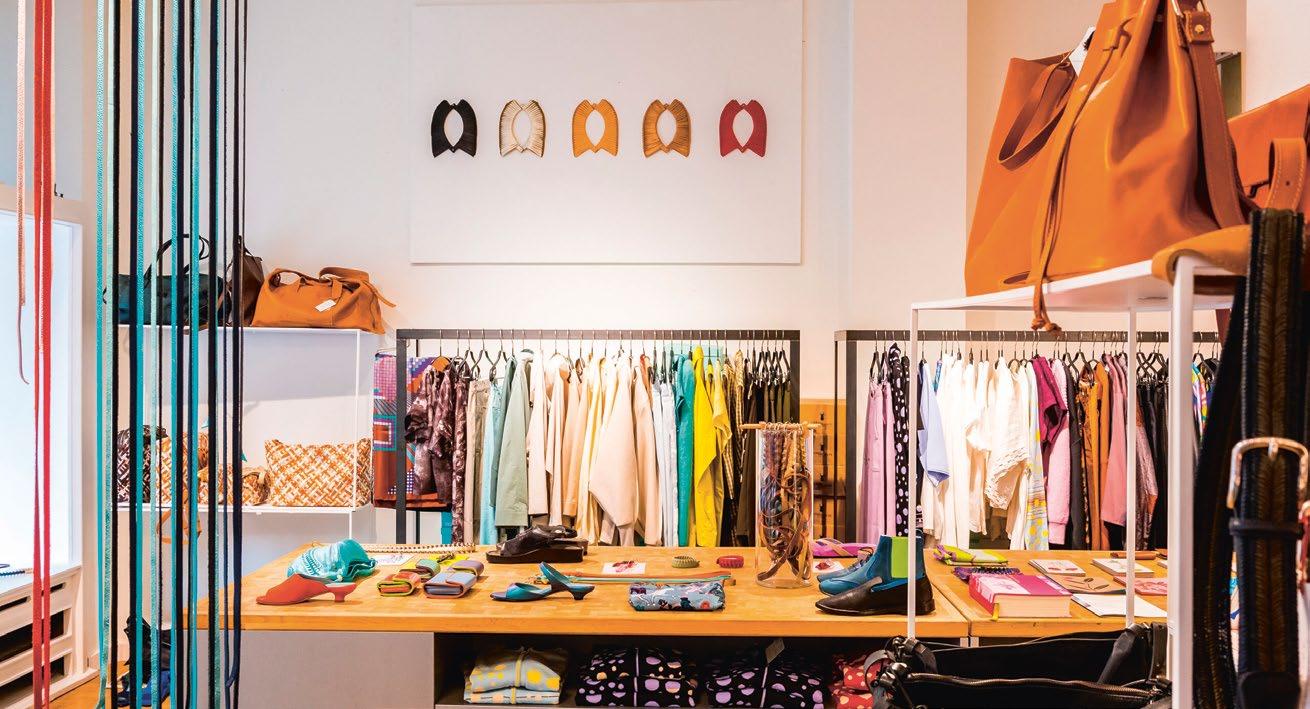
Kasernenstrasse 34 – frankiefrankie.ch
Acne Studios, Dries van Noten oder Isabel Marant – hier findest du eine gut kuratierte Auswahl an perfekt erhaltenen Secondhand-Stücken grosser Marken. Du suchst ein spezielles Teilchen? Frag unbedingt nach – im Untergeschoss gibt es einen riesigen Fundus an Kleidern, die auf der Ausstellungsfläche keinen Platz finden. Die Inhaberin kennt jedoch jedes einzelne Stück …
Acne Studios, Dries van Noten and Isabel Marant – you will find a beautifully arranged selection of second-hand pieces by major brands, in perfect condition, here. You are looking for a special specific? Don’t be too shy to ask – there is a huge stock of clothes in the basement for which there is too little space on the shop floor. But the owner is familiar with every single piece …

Lothringerstrasse 23 – marinsel.ch
Bei Marinsel findest du Labels aus aller Welt, die Wert legen auf faire Produktionsbedingungen und umweltfreundliche Materialien. In Ecuador handgestrickte Pullover, in Deutschland gestickte Kinder-Aufnäher, in Kolumbien gehäkelte Tote-Bags, in Portugal hergestellte Recycling-Jeans – verantwortungsvoll produzierte, langlebige Produkte für die ganze Familie.
At Marinsel you will find labels from all over the world that emphasize the importance of fair manufacturing conditions and environmentally friendly materials. Hand-knitted sweaters from Ecuador, patches for children’s clothes embroidered in Germany, tote bags crocheted in Columbia, jeans from recycled materials made in Portugal –responsibly produced, long-lasting products for the entire family.
Schneidergasse 27 – blanchestudioshop.ch
Wer nichts «von der Stange» möchte, ist hier goldrichtig: Fast alle Stücke bei Blanche kommen von Schweizer Designerinnen und Designern und werden in Kleinstmengen produziert. Die beiden Inhaberinnen entwerfen zudem eigene Taschen, Accessoires und Lederschmuck und produzieren in der Manufaktur im Obergeschoss. Auch die Reparatur von Lederwaren bietet Blanche an.
If you not interested in buying mass-produced clothing then you’ve landed at the perfect place here: almost every piece at Blanche has come from Swiss designers and been manufactured in very limited quantities. The two proprietors also design their own bags, accessories and leather jewellery and then produce them in their manufactory on the upper floor. Blanche also offers a repair service for leather goods.
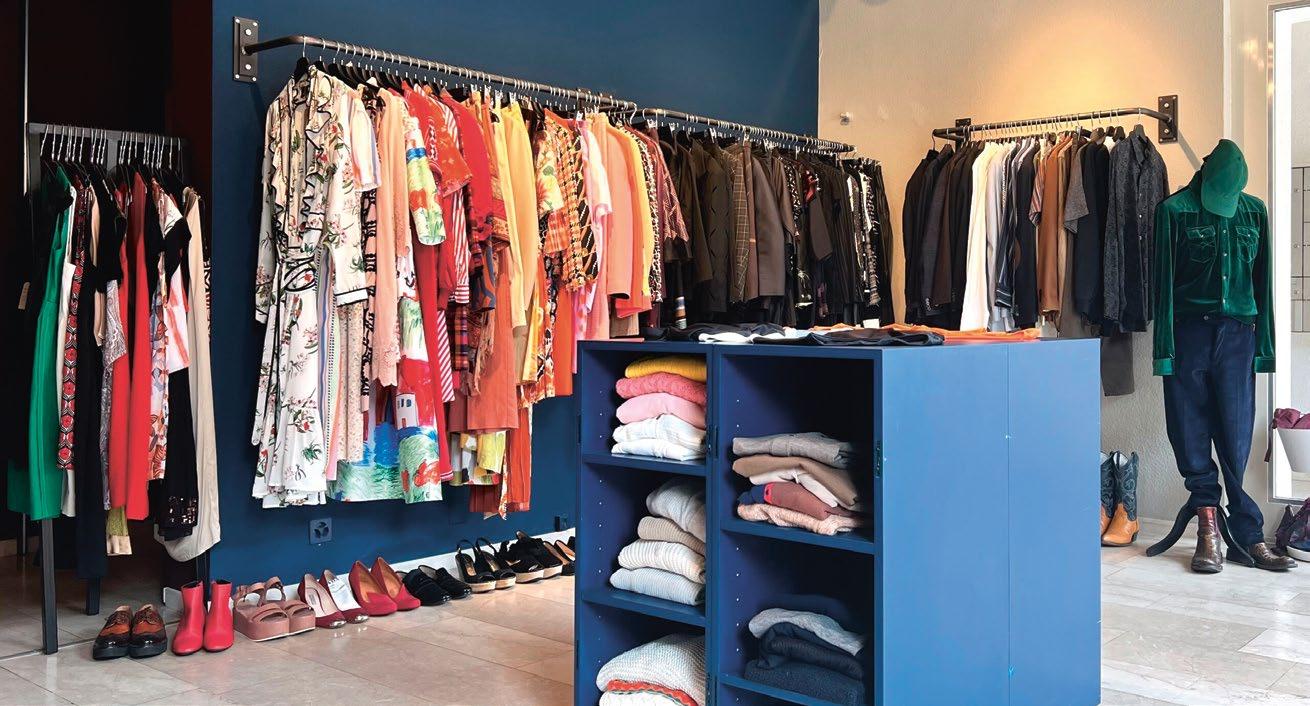
Elsässerstrasse 25 – instagram.com/apartment25__
Freshe Styles für stilbewusste Guys – und Girls: Bei Apartment25 bekommst du coole Vintage-Streetwear für jedes Budget, teilweise aus Sammlungen oder Lagerräumungen (ungetragen!) und immer wieder seltene Labels, die schwer zu finden sind. zudem gibts hier immer gute Musik und offene Menschen. Angesagte Sneaker, Designer-Tasche, Hoodie und Sonnenbrille; ein guter Look muss nicht teuer sein!
Fresh styles for fashion-conscious guys – and girls: at Apartment25 you will find cool vintage streetwear for every budget, sometimes from collections or warehouse clearances (never worn!) and every now and then rare brands that are hard to come by. In addition to all that, there is always good music in the background and open-minded people to be found here. Fashionable sneakers, designer bags, hoodies, and sunglasses; looking good doesn’t have to be expensive!

BLANCHE STUDIOSHOP
APARTMENT25
FRANKIE FRANKIE
MARINSEL
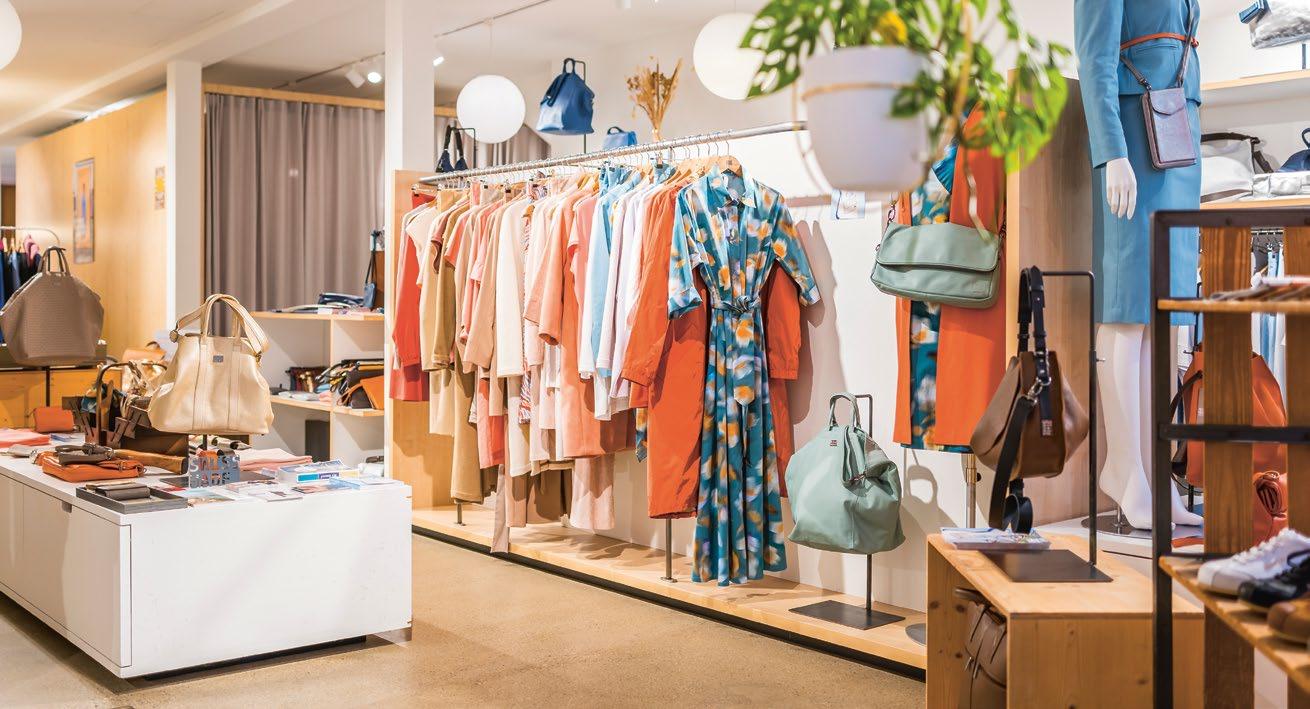
Blumengasse 3 – threeshop.ch
In diesem Vintage- und Secondhand-Bijou an der Schifflände findest du nicht nur hippe Einzelstücke von Balenciaga, Chloé, Maison Margiela oder Issey Miyake, sondern überdies zeitlose Kaschmir-Oberteile der Eigenmarke und nachhaltig-sinnvolle Produkte für den Alltag – natürliche Deos oder vegane Nagellacke zum Beispiel. Ohne traumhaftes Fundstück wirst du diesen Ort kaum verlassen.
In this jewel of a vintage and second-hand boutique tucked away near the Schifflände, you will find not just unique and trendy pieces by Balenciaga, Chloé, Maison Margiela, and Issey Miyake, but also the store’s in-house brand of timeless cashmere tops as well as useful, environmentally friendly everyday products – such as natural deodorants and vegan nail polish. It’s unlikely you’ll leave this place without some fabulous lucky find.

ISSUE
Grünpfahlgasse 8 – issue-design.ch
Ein Frauen-Modelabel, das seine Kleidungsstücke von der ersten Skizze bis zum letzten Saum in Basel produziert; das ist Issue. Jeweils zwei sorgfältig verarbeitete und liebevoll produzierte Kollektionen gibt es pro Jahr, alle in klaren Farben, mit hochwertigen Stoffen und schmeichelhaften Schnitten.
A fashion brand for women that produces its garments in Basel, from the first draft through to the last hem; that is Issue. They produce two collections a year, always carefully crafted and lovingly produced, in clear colours, high-quality fabrics and flattering cuts.

KLEINBASEL
Schneidergasse 24 – kleinbasel.net
In Basel designt und entwickelt, werden die Produkte von kleinbasel seit über 20 Jahren in kleinen Manufakturen in Italien, Deutschland und Kroatien produziert. Die herrlich weichen Ledertaschen gar in Chiasso in der Schweiz. Kurze Produktionswege, faire Löhne und sorgfältige Handarbeit sind hier das Credo. Für Taschen gibt es lebenslangen Reparatur-Service.
Conceived and designed in Basel, kleinbasel's items have been produced in small manufactories in Italy, Germany, and Croatia for more than 20 years now. And the delightfully soft leather bags are even manufactured in Switzerland, in Chiasso. Short delivery routes, fair wages and precise craftsmanship are the credo here. And the bags come with a lifetime repair service guarantee.
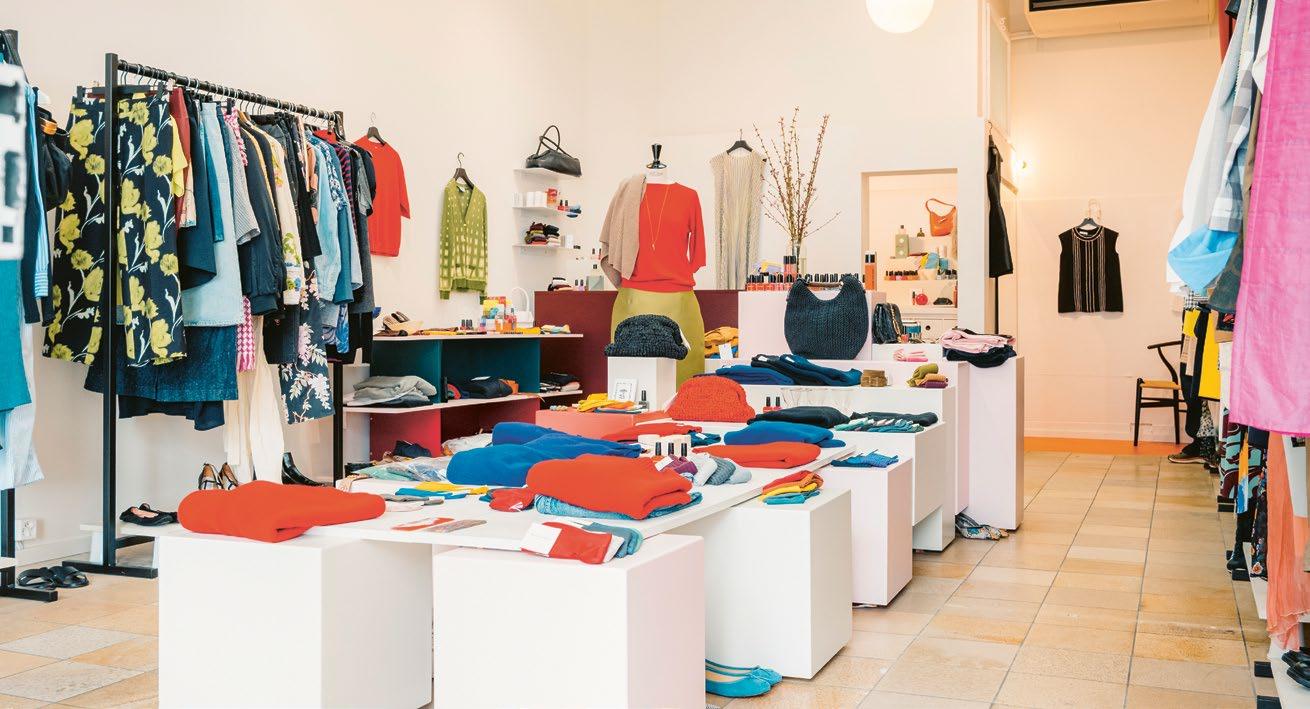
CLAUDIA GÜDEL
Schnabelgasse 4 – claudiagudel.ch
Klare Linien, schlichte Farben, robuste Stoffe; durch das zurückhaltende Design und die hochwertige Verarbeitung sind Claudia Güdels Stücke jahrelang treue Begleiter. Viele ihrer in Basel designten und in der Schweiz und im nahen Europa produzierten Modelle können zudem auf zwei Seiten getragen werden. Der Mix aus Style, Funktion, Qualität und Nachhaltigkeit zeigt: So geht Mode heute.
Clear lines, muted colours, robust fabrics; the understated designs and high-quality workmanship make Claudia Güdel’s pieces favoured companions for many years. Many of her pieces, designed in Basel and produced in Switzerland and neighbouring European countries can be worn in reverse as well. The mix of style, functionality, quality, and sustainability make one thing clear: that’s how fashion works these days.

DESIGNER SECOND HAND BOUTIQUE
Missionsstrasse 15 – designersecondhandbasel.ch
Über 30 Jahre alt ist die Designer Second Hand Boutique beim Spalentor bereits. Hier findest du Kleider, Schmuck, Taschen und Schuhe aus zweiter Hand von Dior, Prada, Balmain, Fendi oder Jimmy Choo. Auch Klassiker wie die Birkin Bag von Hermès oder ein klassisches Gucci-Bouclé-Jäcklein bekommst du hier mit etwas Glück zum Schnäppchenpreis – Investitionen fürs Leben!
The Designer Second Hand Boutique near the Spalentor has already been there for more than 30 years. What you will find here are pre-loved clothes, jewellery, bags and shoes by Dior, Prada, Balmain, Fendi and Jimmy Choo. If you are lucky you may even find design classics such as a Birkin bag by Hermès or a Gucci-Bouclé jacket at bargain prices – investments for life!
SOJASAUCE GEBRAUT IN BASEL
MIT PILZSPOREN ZUR PERFEKTEN WÜRZE
In Japan nennt man traditionell gebraute Sojasauce «Kioke-Shoyu». Sie braucht zur vollen Entfaltung des Aromas einen mehrjährigen Fermentationsprozess. Auch in Basel reifen aktuell über 2000 Liter Shoyu in sechzehn Bottichen. Täglich mit grosser Kelle gerührt von Caroline Kulangara, Inhaberin der Brauerei Ferment.
Text & Bilder: Janine Wagner
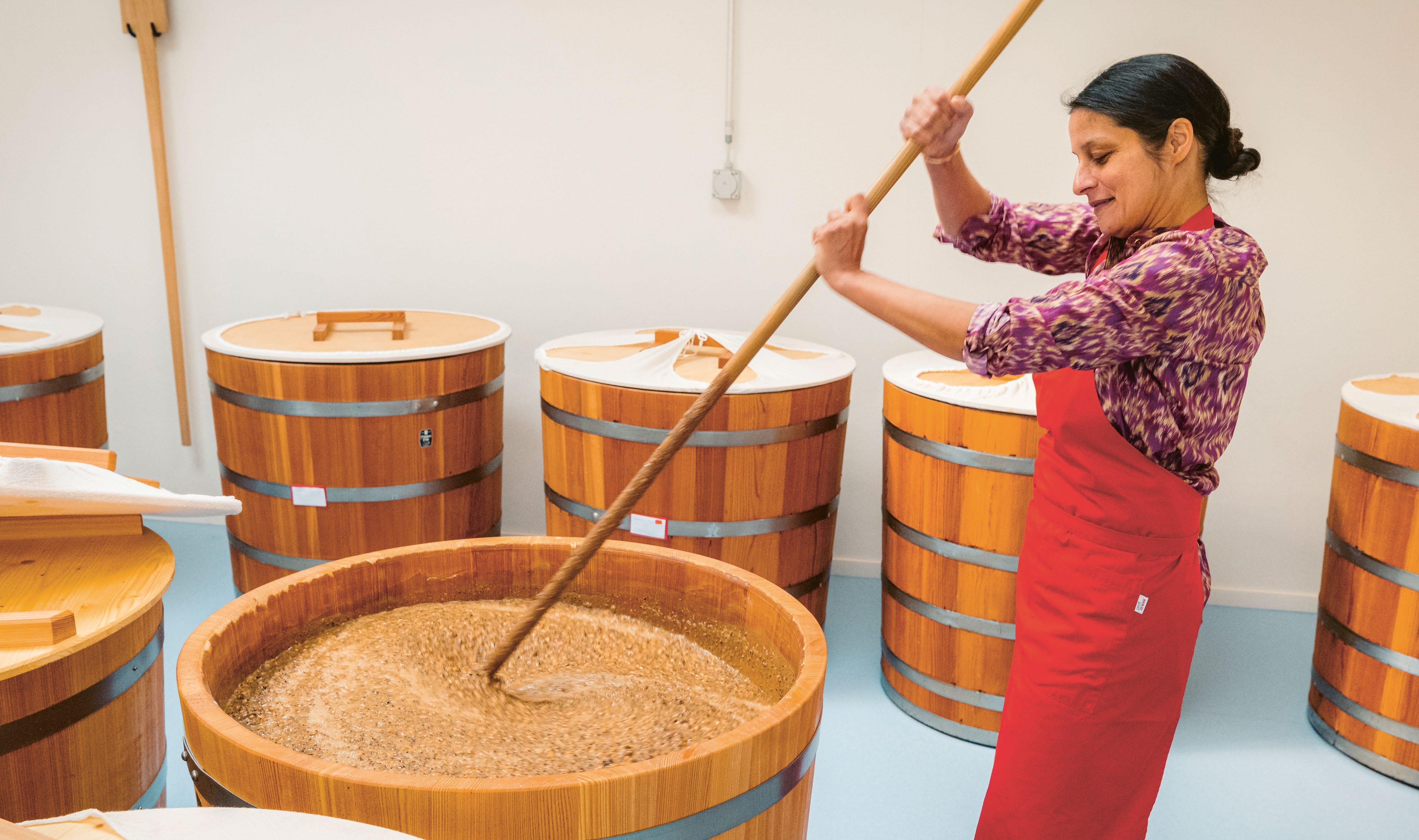
Bei Mikroorganismen denken wir schnell an Herpes und Schimmel, an Krankheit und Verderben. Doch längst nicht alle Kleinstlebewesen sind böse. Viele sind gar für unsere Ernährung unentbehrlich, werden zur Herstellung und Veredelung von Lebensmitteln eingesetzt und sind nicht selten für deren Aroma und Geschmack verantwortlich. So zum Beispiel bei Brot, Bier, Salami oder Käse.
Auch die Produktion von Sojasauce nach traditionellem japanischem Vorbild benötigt Mikroben. Für Caroline Kulangara war das mitunter die Motivation, sich in ihrer Küche an einer Shoyu, einer Sojasauce für den Eigenbedarf, zu versuchen. In mehreren kleinen Gärtöpfen pröbelte sie vor rund fünfzehn Jahren mit Schimmelpilzen. Vor mikroskopisch kleinen Organismen hat die Mikrobiologin keine Angst, schliesslich hat sie jahrelang im Tropeninstitut mit Mikroorganismen gearbeitet. Zudem motivierte sie ihr überdurchschnittlich hoher Sojasaucen-Verbrauch. «Ich liebe Sojasauce und brauche sie anstelle von Salz zu fast allen Gerichten», erzählt sie in ihrer Sojasaucen-Brauerei im Iselin-Quartier, die sie 2018 in Betrieb genommen hat. Die ersten Versuche in der Küche; sie sind längst passé.
Multikulti und komplexe Prozesse
«In Japan wird die Kunst des Sojasaucen-Brauens in der Familie weitergegeben», berichtet Caroline, während sie mir mit sanft klimpernden Armreifen die Gerätschaften zeigt, die sie zur Produktion ihrer Shoyu braucht. Der filigrane Schmuck, die bunt gemusterte Bluse, der Teint, die Augen – es ist offensichtlich: Carolines Vorfahren sind keine Japaner. «Mein Vater ist Inder, meine Mutter Deutsche», lacht sie. «Wenn immer ich sage ‘so macht man das in Japan», dann weiss ich das nur, weil ich es gelesen habe.» Caroline war noch nie in Japan, hat nie eine traditionelle Shoyu-Brauerei besucht. Dennoch ist sie Profi, wenns um dreistufige Fermentation geht.
Als würde sie vom letzten Urlaub erzählen, plaudert sie von Aminosäuren, Enzymen, Hydrolyse, Puffern oder Peptiden – mir wird ganz schwindlig und ehrlich gesagt bleibt mir der exakte Umwandlungs-Prozess ein Rätsel. Meine Sinne hingegen nehmen das Geschehen klar und deutlich wahr: Hebt man den Deckel von einem sich in den ersten Monaten der Reifung befindenden Lerchenholzbottich, ist die Maische – genannt Moromi – relativ dünnflüssig, hat eine hellbraune Farbe und riecht bei näherem Schnuppern mässig verheissungsvoll. Ganz anders der Bottich mit der Maische, die seit mehreren Jahren gärt: Hier ist bereits Wasser verdunstet, dadurch ist die Masse zähflüssiger, die Farbe hat sich in ein sattes Dunkelbraun verwandelt und ein herrlich intensiver, würzig-aromatischer Duft erfüllt den Raum.


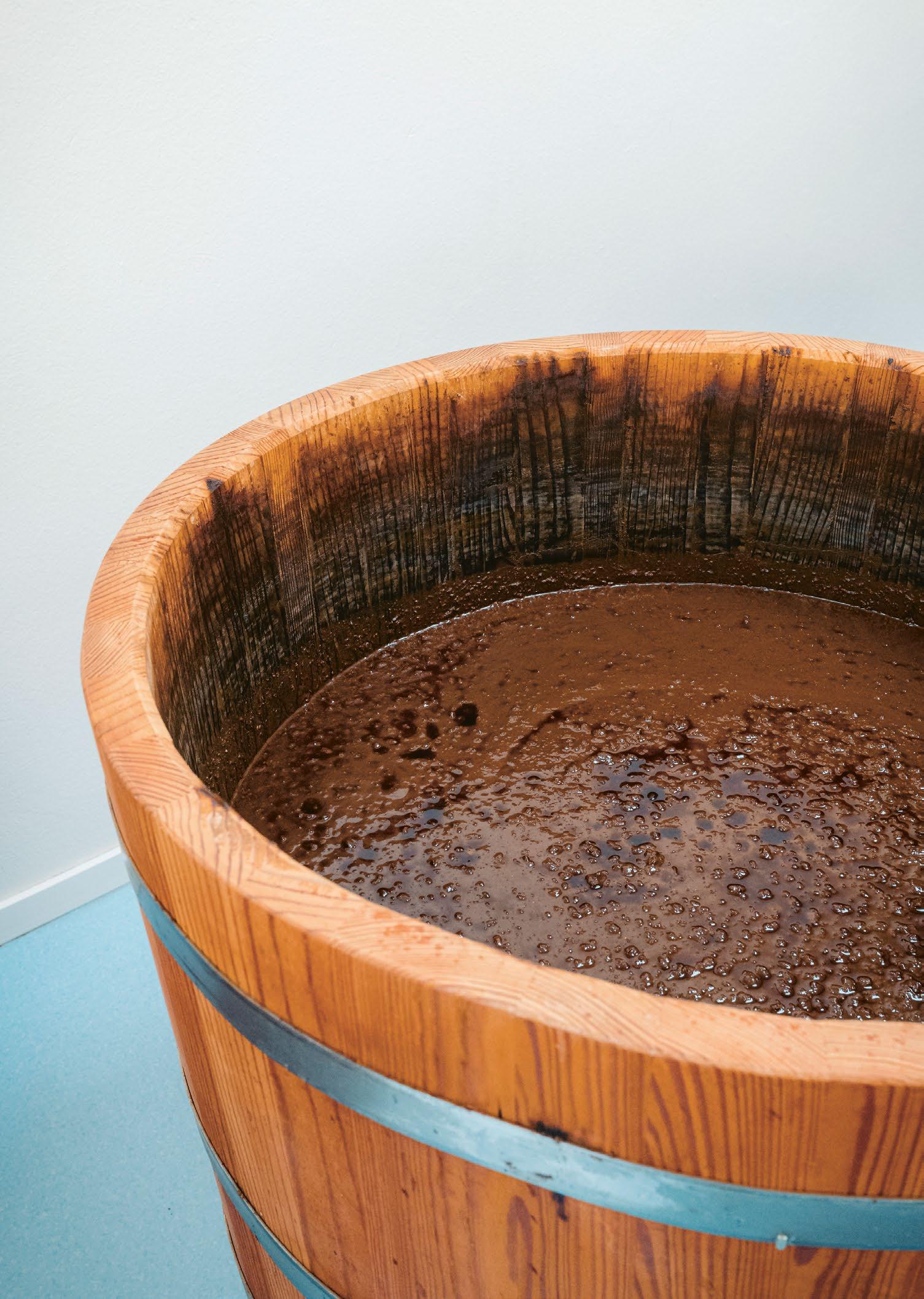
Ungewisser Start in die Selbstständigkeit
Nachdem Caroline im Sommer 2018 die ersten Bottiche mit werdender Sojasauce befüllt hatte, wusste sie ein ganzes Jahr lang nicht, ob am Ende tatsächlich ein geniessbares Lebensmittel dabei herauskommen würde. Ein Jahr dauert nämlich die Gärung der Sojasauce im Minimum. In Japan gibt es Saucen, die bis zu 20 Jahren im Holzfass lagern. Caroline mietete also die Räumlichkeiten ihrer Brauerei, liess die Holzbottiche anfertigen, kaufte die Gerätschaften und rührte am Ende täglich in der blubbernden, still vor sich hingärenden Maische, ohne sicher zu sein, dass der Prozess, der in Kleinstmenge in der Küche funktioniert hatte, auch auf Hunderte Liter hochgerechnet funktionieren würde. Er tat es. Nach einem Jahr erntete Caroline ihre erste Usukuchi Shoyu, die einjährige Sojasauce, die sich bis heute am meisten verkauft. Ein paar Jahre später kam die 24 Monate gereifte Koikuchi Shoyu hinzu. Ihr wird 2025 die fünf Jahre gereifte Koikuchi Shoyu folgen.
Bis heute rührt, presst, filtert, pasteurisiert, befüllt, etikettiert und verpackt Caroline jeden Liter Sojasauce von Hand. Ihren Job hat sie vor fünf Jahren gekündigt, um sich vollumfänglich ihrem kleinen Unternehmen zu widmen, der einzigen Sojasaucen-Brauerei der Schweiz. Neben Familie und Freunden beliefert Caroline heute zahlreiche Restaurants und Läden in Basel und der Umgebung mit ihrer biozertifizierten Sauce. Sämtliche Zutaten dafür kommen von hier. Das Salz aus Pratteln, das Wasser aus den Alpen, der Schweizer Weizen und die Schweizer Sojabohnen aus einer Mühle bei Bern. Nur die Pilzsporen, die sie für den Kōji, den ersten Teil der Fermentation, benötigt, muss sie in Japan bestellen.
«Bei meinem ersten Kōji zu Hause in der Küche habe ich alle zwei Stunden die Temperatur gemessen und die Werte in einer Tabelle notiert. Auch nachts.»
Frische Luft für den Kōji
«Der Kōji ist das Herzstück», erklärt Caroline. «Er ist für das Gelingen der Sauce verantwortlich.» Sie holt ein Blech aus einem grossen Edelstahlgerät, einem normalerweise in Bäckereien benutzten Gärunterbrecher. Auf dem Blech wächst das Pilzmyzel auf einem Mix aus Sojabohnen und geröstetem Weizen; der Kōji, ausgesprochen «Koschi». «Der Pilz braucht eine Anfangstemperatur von 30 Grad, damit er Myzelen bildet. In seiner exponentiellen Phase produziert er dann Wärme und muss gekühlt werden», erzählt Caroline, während sie den Bohnen-Weizen-Schimmelpilz-Mix mit einem Tortenheber belüftet. «Bei meinem ersten Kōji zu Hause in der Küche habe ich alle zwei Stunden die Temperatur gemessen und die Werte in einer Tabelle notiert. Auch nachts.» Caroline lacht. «Ich wollte unbedingt alles richtig machen. Und vom Labor war ich mir penibles Arbeiten gewohnt.»
Heute ist sie entspannter. «Sojasauce ist ein uraltes Lebensmittel und wurde bereits vor 3000 Jahren gebraut. Wäre der Brauprozess diffizil, wäre die Sauce längst verschwunden», ist sich Caroline sicher. «Auch biochemisch sieht man, wie robust die Fermentation ist: die Soja-Maische ist hoch salzig und hat durch die Milchsäurebakterien einen konstant tiefen pH-Wert. Dadurch können Hefen wachsen, die einen leichten Alkoholgehalt entstehen lassen. Viele Organismen können in diesem Milieu nicht wachsen.» Was für mich an ein Wunder grenzt, für Caroline ist es die logische Verkettung biochemischer Prozesse. Doch was am Ende zählt, der Geschmack, ist an Aroma und Würze tatsächlich kaum zu überbieten. Alles dank mikroskopisch kleinen Schimmelpilz-Sporen. Wunderbare Biochemie!
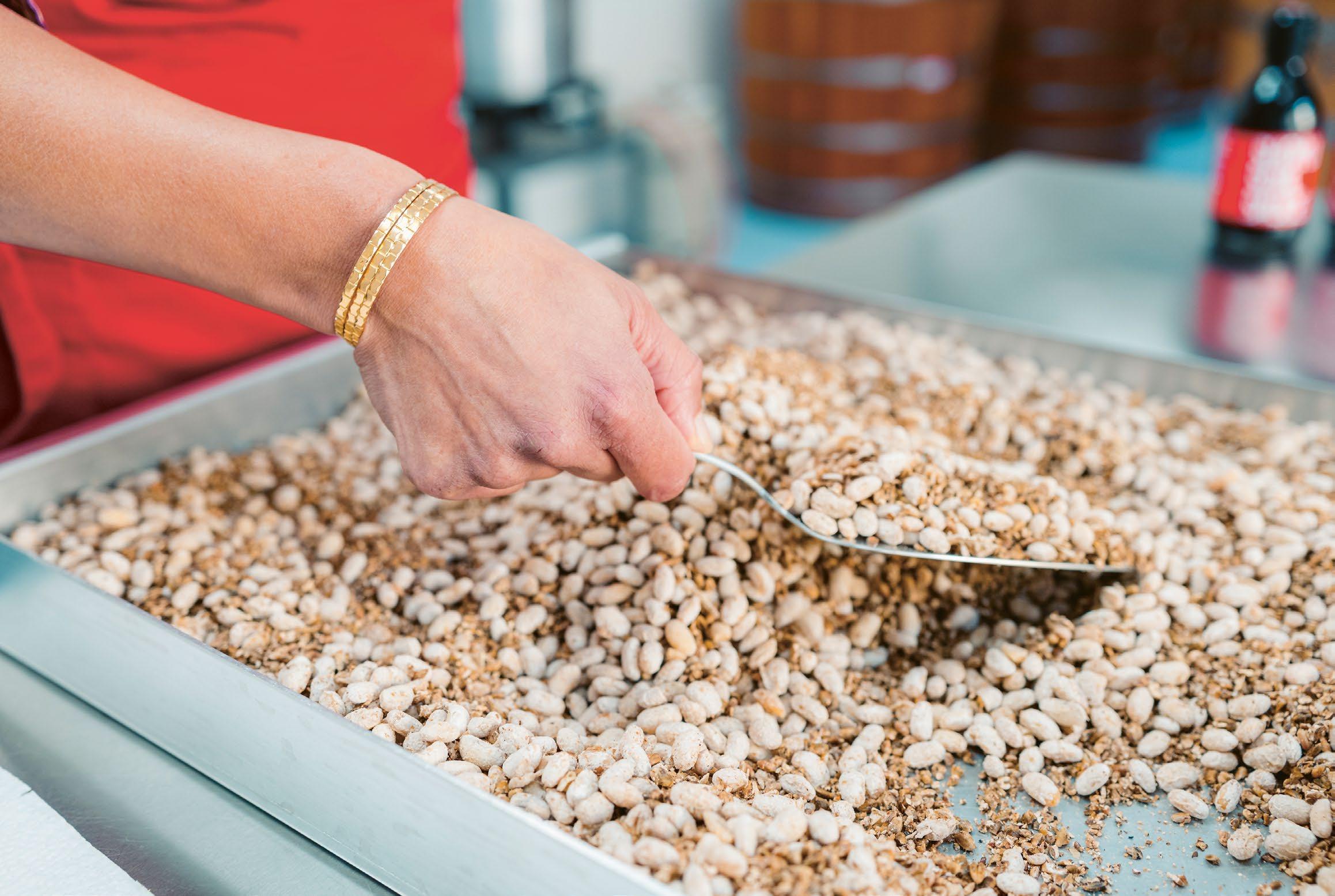

Caroline Kulangara
SOY SAUCE BREWED IN BASEL - THE PERFECT AROMA THANKS TO MUSHROOM SPORES
In Japan, traditionally brewed soya sauce is known as kioke shoyu. It entails a fermentation process lasting several years to develop its full aroma. In Basel too, more than 2,000 litres of shoyu are currently maturing in sixteen vats. Stirred with a large ladle every day by Caroline Kulangara, the owner of the Ferment Brewery.
When we think about microorganisms our minds quickly jump to herpes and mould, disease and decay. But not all microbes are malign. In fact, many of them are indispensable to our diets, are used in the production and refinement of foodstuffs, and are often responsible for their aromas and tastes. To name just a few examples, think of bread, beer, salami, and cheese.
The production of soy sauce in accordance with the traditional Japanese model also requires microbes. This was one of the reasons that motivated Caroline Kulangara to try her hand at making a shoyu soy sauce for her own use in her kitchen at home. Around fifteen years ago, she carried out some small experiments with mould fungi in a few fermentation crocks. As a microbiologist, she had no fear of microscopic organisms, she had been working with them for many years at the Swiss Tropical and Public Health Institute in Basel. Another motivation was her voracious consumption of soy sauce. “I love soy sauce and I use it instead of salt in almost every dish I prepare,” she is telling me all this in her soy sauce brewery in the Iselin district, which she opened in 2018. The early experiments in her kitchen are far in the past now.
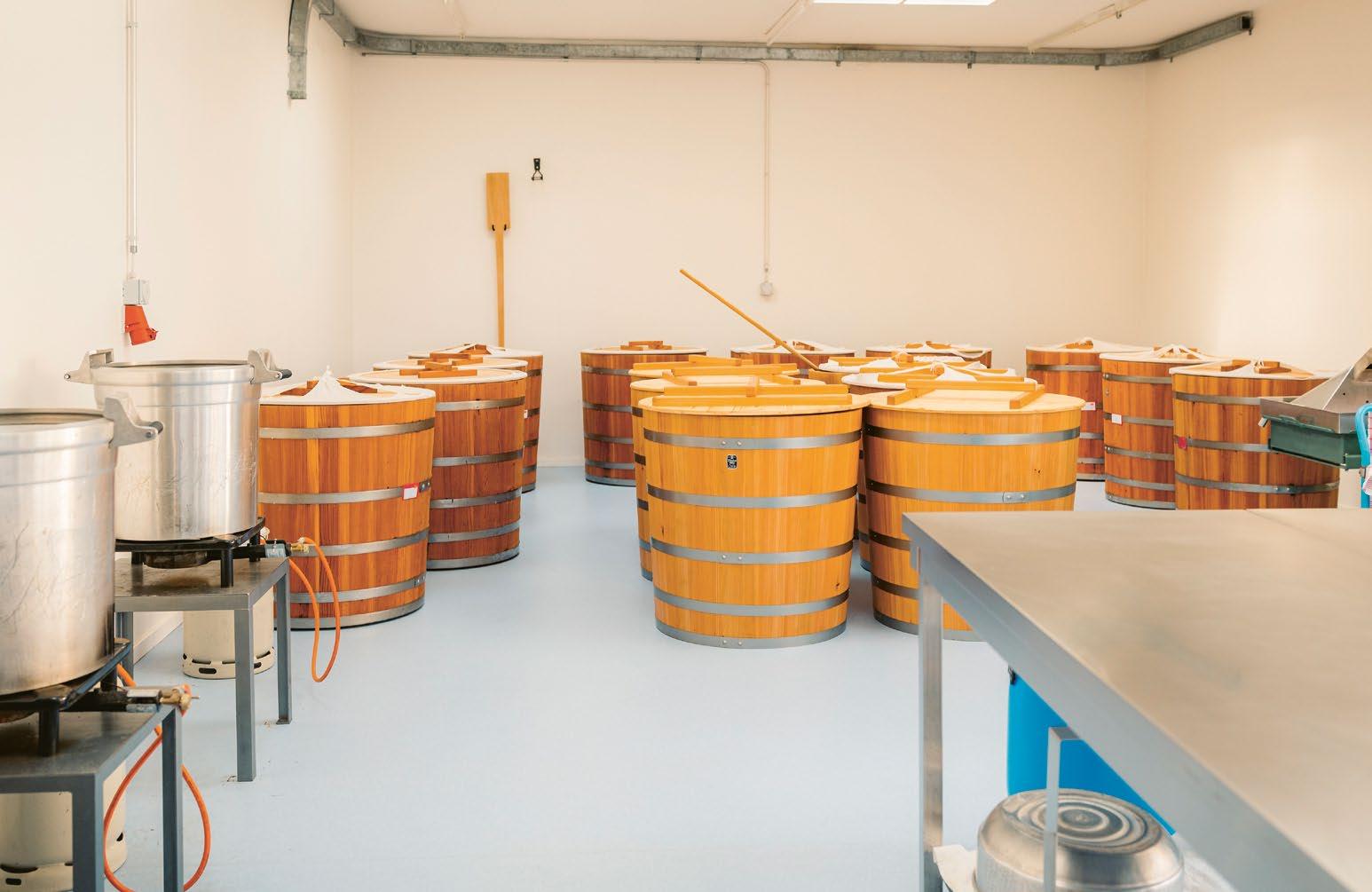
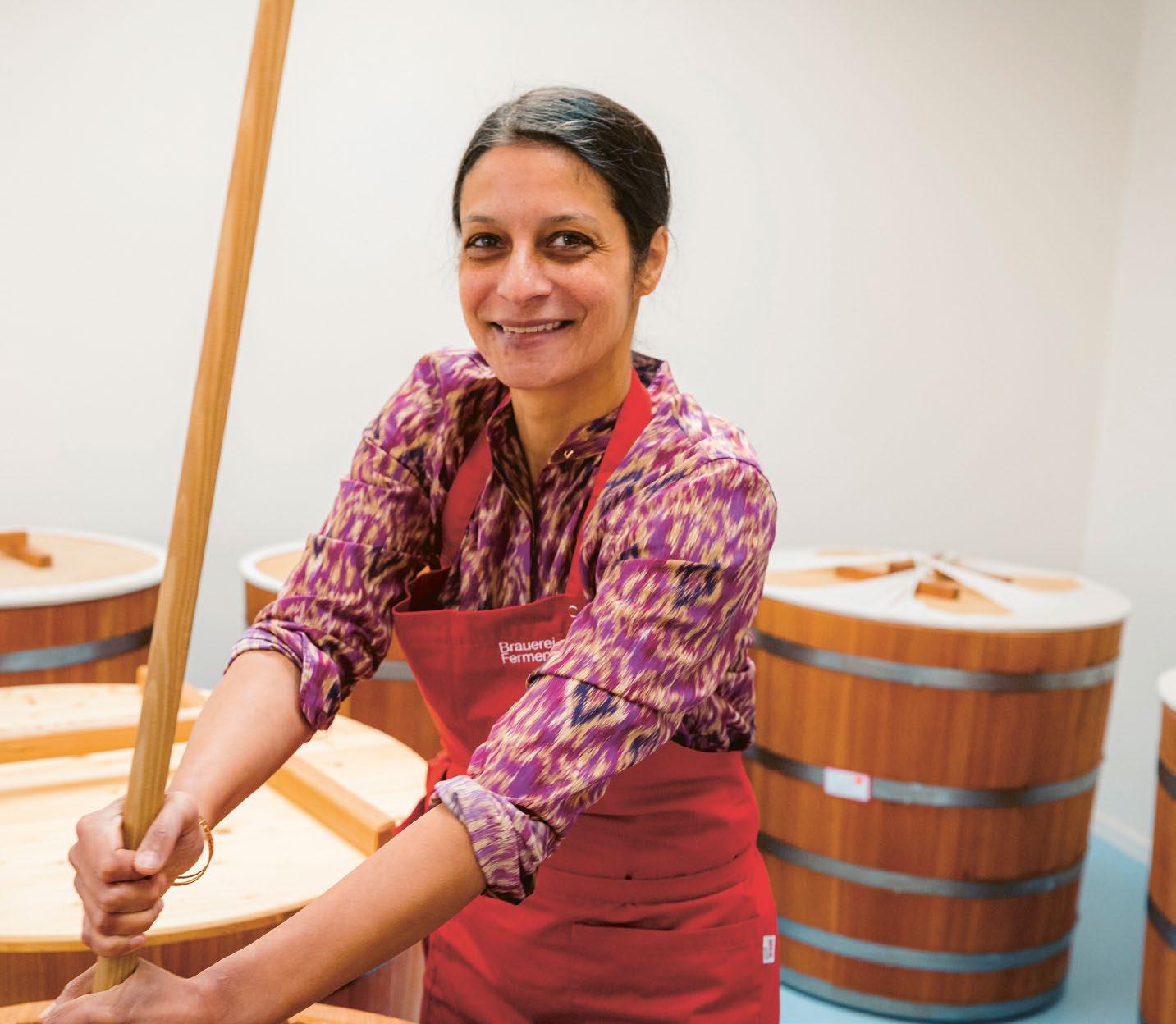
Multicultural and complex processes
“In Japan, the art of brewing soy sauce is passed down through the family.” Caroline tells me as she shows me the equipment she uses to make her shoyu, her bracelets jingling gently. Her filigree jewellery, the colourful patterned blouse, her complexion, and eyes – it seems pretty clear that Caroline’s ancestors were not Japanese. “My father is Indian, my mother is German,” she laughs. “Whenever I say, ‘that’s how they do it in Japan,’ I only know because I have read about it.” Caroline has never been to Japan; she has never visited a traditional shoyu brewery. Nevertheless, she is a professional when it comes to the three-stage fermentation process for soybeans.
She chats away about amino acids, enzymes, hydrolysis, buffers, and peptides as though she is describing her last holiday – my head is spinning and, to be honest, how precisely the transformation occurs is still a mystery to me. My senses, on the other hand, are taking in what is happening very clearly and distinctly: if you lift the lid of the larch wood vat that has only been maturing for a few months, the mash – called moromi – is relatively runny, light-brown in colour and when you smell it from up close, it is only moderately enticing. The vat with the mash that has been fermenting for several years is quite a different matter: by now the water has evaporated which means the mass is more viscous, the colour has turned a rich dark brown and the room becomes suffused with its spicy-aromatic notes.
A leap into the unknown, starting her own business
When Caroline had filled the first vats with her nascent soy sauce in the summer of 2018, she had no idea, for a whole year, whether the result at the end of it all would be a palatable foodstuff. A year is the absolute minimum for fermenting soy sauce. In Japan, some sauces are left to lie in wooden barrels for up to 20 years. Caroline rented the premises for her brewery, had the wooden vats made, bought the equipment, and then finally stirred the bubbling, quietly fermenting mash every day, with no certainty that the process which had worked well in small quantities in her kitchen, was also going to work when grossed up into hundreds of litres. But it did. After a year Caroline reaped her reward, her first usukuchi shoyu, soy sauce brewed for one year, which is still her best seller today. A few years later she added the koikuchi shoyu to her range; this is fermented for 24 months. In 2025, this year, it will be joined by the koikuchi shoyu matured for five years.
Even now Caroline still stirs, presses, filters, pasteurises, fills, labels, and packs every single litre of soy sauce by hand. She quit her previous job five years ago to dedicate herself completely to her small enterprise, the only soy sauce brewery in Switzerland. In addition to family and friends, Caroline now also supplies many restaurants and shops in Basel and the surrounding area with her certified-organic sauce. The ingredients are sourced in Switzerland. The salt is from Pratteln, the water from the alps, the wheat is Swiss and the Swiss soyabeans are sourced from a mill near Bern. The only thing she has to order from Japan are the mushroom spores she needs for the kōji, the first stage of the fermentation process.
Fresh air for the kōji
“The kōji is the key element;” explains Caroline. “It is what makes the sauce work.” She pulls a tray out of a large stainless-steel appliance, a machine usually used in bakeries, a fermentation interrupter. The fungus mycelia are growing on the tray, feeding on a mixture of soya beans and roasted wheat; this is the kōji, pronounced “koshi.” “The fungus requires an initial temperature of 30 degrees to form the mycelium. Then, in its exponential phase it produces heat and has to be cooled.” Caroline explains all this while she aerates the bean, wheat, and mould fungus mixture with a cake server. “When I produced my first kōji at home in the kitchen I measured the temperature every two hours and jotted down the measurements in a table. Even at night.” Caroline laughs. “I was really determined to get everything just right. And I was used to working meticulously from my job in the lab.”
These days she is more relaxed. “Soy sauce is an ancient foodstuff; it was already being brewed 3,000 years ago. If the fermentation process were that complex the sauce would have disappeared long ago.” Caroline is quite sure about that. “And even in biochemical terms, you can see how robust the fermentation process is: the soy mash is extremely salty and thanks to the lactic acid bacteria its pH value is consistently low. This allows yeasts to grow that produce a slightly alcoholic content. It is impossible for most organisms to thrive in such an environment.” What seems to me almost a miracle is for Caroline a logical chain of biochemical processes. But what counts in the end is the taste, which is almost unparalleled in terms of aroma and spiciness. All thanks to those microscopically tiny mould fungi spores. What wonderful biochemistry!
BEAUTY IN BASEL
ENTSPANNTE AUSZEIT
Sich mit Haut und Haar wohl fühlen – dazu braucht es hin und wieder etwas Hilfe von aussen: Sinnliche Düfte, reichhaltige Crèmes, ganzheitliche Pflege. Folgende Orte garantieren dir hochwertige Produkte, umfassende Beratung und entspannende Stunden.

BEAUTYLOUNGE
Grenzacherstrasse 4 / Bäumleingasse 22 – beautylounge.ch
Lust auf eine Pedicure im gemütlichen Massagestuhl? Auf ein erfrischendes Glow-Treatment oder eine wohltuende Rückenmassage? Die Räumlichkeiten der Beautylounge bieten eine entspannte Rückzugsmöglichkeit im turbulenten Alltag. Kosmetikerinnen verwöhnen dich von Kopf bis Fuss, sechs Tage die Woche.
Do you feel like having a pedicure while relaxing in a comfortable massage chair? Or enjoying a refreshing glow treatment or a soothing back massage? The facilities at the Beauty lounge offer a calm retreat from the turbulences of everyday life. The beauticians here will pamper you from head to foot, six days a week.
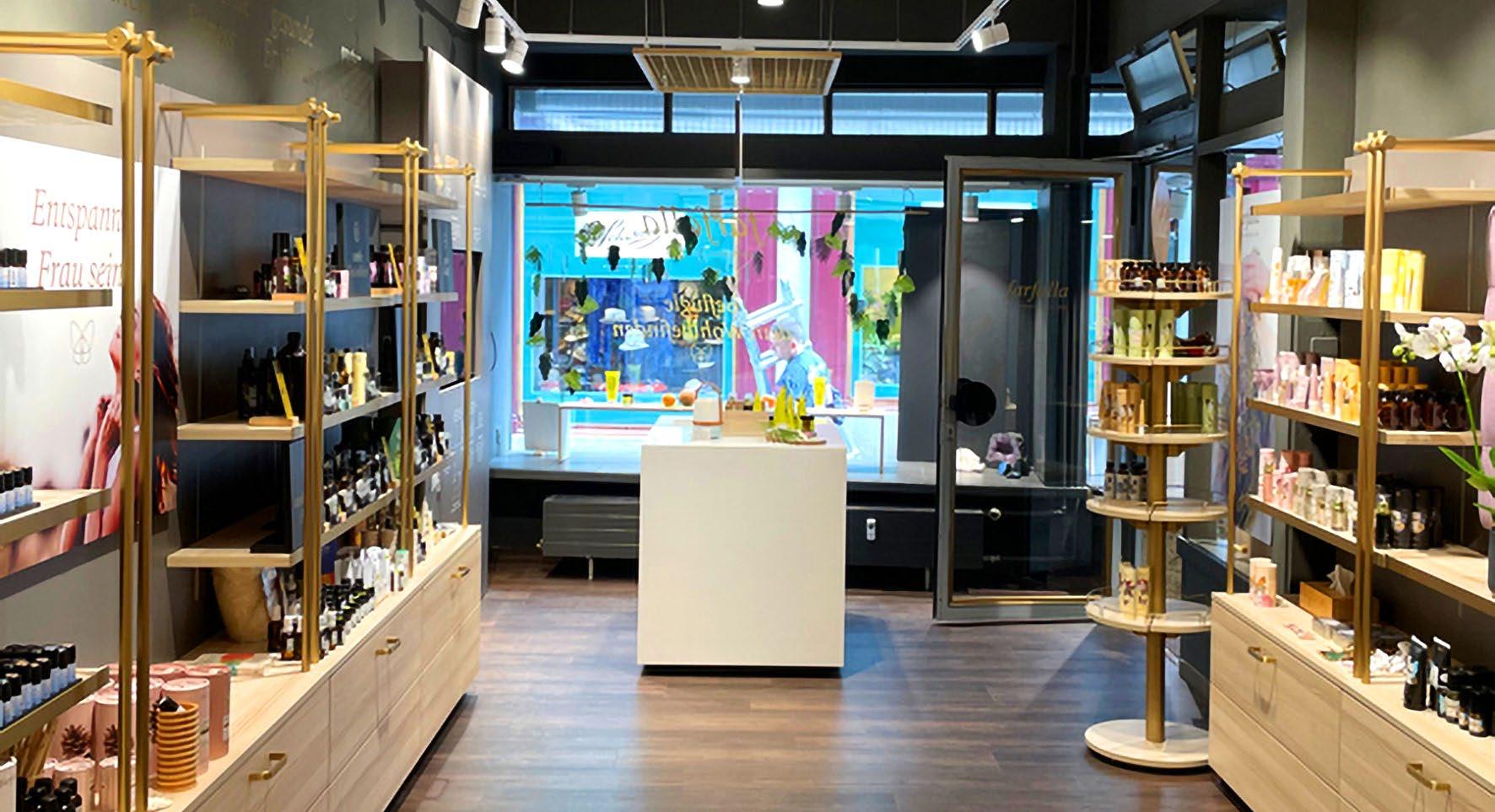
Bäumleingasse 14 – pure-ur.com
Eine neue Frisur, eine Gesichtsbehandlung, gepflegte Nägel, eine Massage oder ein professionelles Make-up: Hier bekommst du das Gesamtpaket. Gearbeitet wird mit Marken, die ethisch, natürlich und umweltbewusst sind. Lass dich von Kopf bis Fuss verwöhnen!
A new hairstyle, a facial, manicured nails, a massage or professional make-up: you can get the full works here. The brands used are ethical, natural, and environmentally friendly. Allow yourself to be pampered from head to foot!
Freie Strasse 97 – loccitane.ch
Kirschblüten, Verveine und Lavendel – ein Besuch bei L’Occitane gleicht einer olfaktorischen Reise in die Provence. Die Produkte auf Basis ätherischer Öle und natürlicher Inhaltsstoffe werden nach den Prinzipien der Phytotherapie und der Aromatherapie entwickelt und in Südfrankreich hergestellt.
Cherry blossoms, verbena, and lavender – a visit to L’Occitane is like an olfactory journey through Provence. The products, based on essential oils and natural ingredients, are developed according to the principles of phytotherapy and aromatherapy, and are manufactured in the south of France.
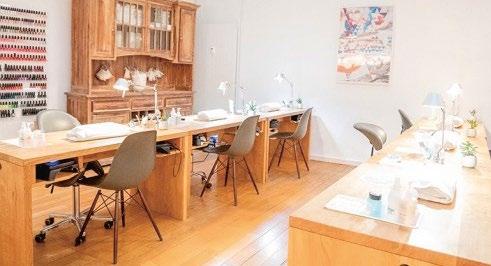
Spalenberg 26 – farfalla.ch
Aus Aromapflanzen gewonnene ätherische Öle stehen im Zentrum eines jeden Farfalla-Produktes. Deren Duftstoffe helfen dabei, sich natürlich schön und gesund zu fühlen. Ob Gesichtsöl, Duschgel, Körperlotion, Fussbalsam oder Raumduft –das Familienunternehmen produziert jedes Produkt in der Schweiz.
Essential oils extracted from aromatic plants are the core ingredient of every product at Farfalla. Their fragrances help you to feel naturally beautiful and healthy. Whether facial serums, shower gels, body lotions, foot balms or room scents – this family enterprise manufactures all its products in Switzerland.
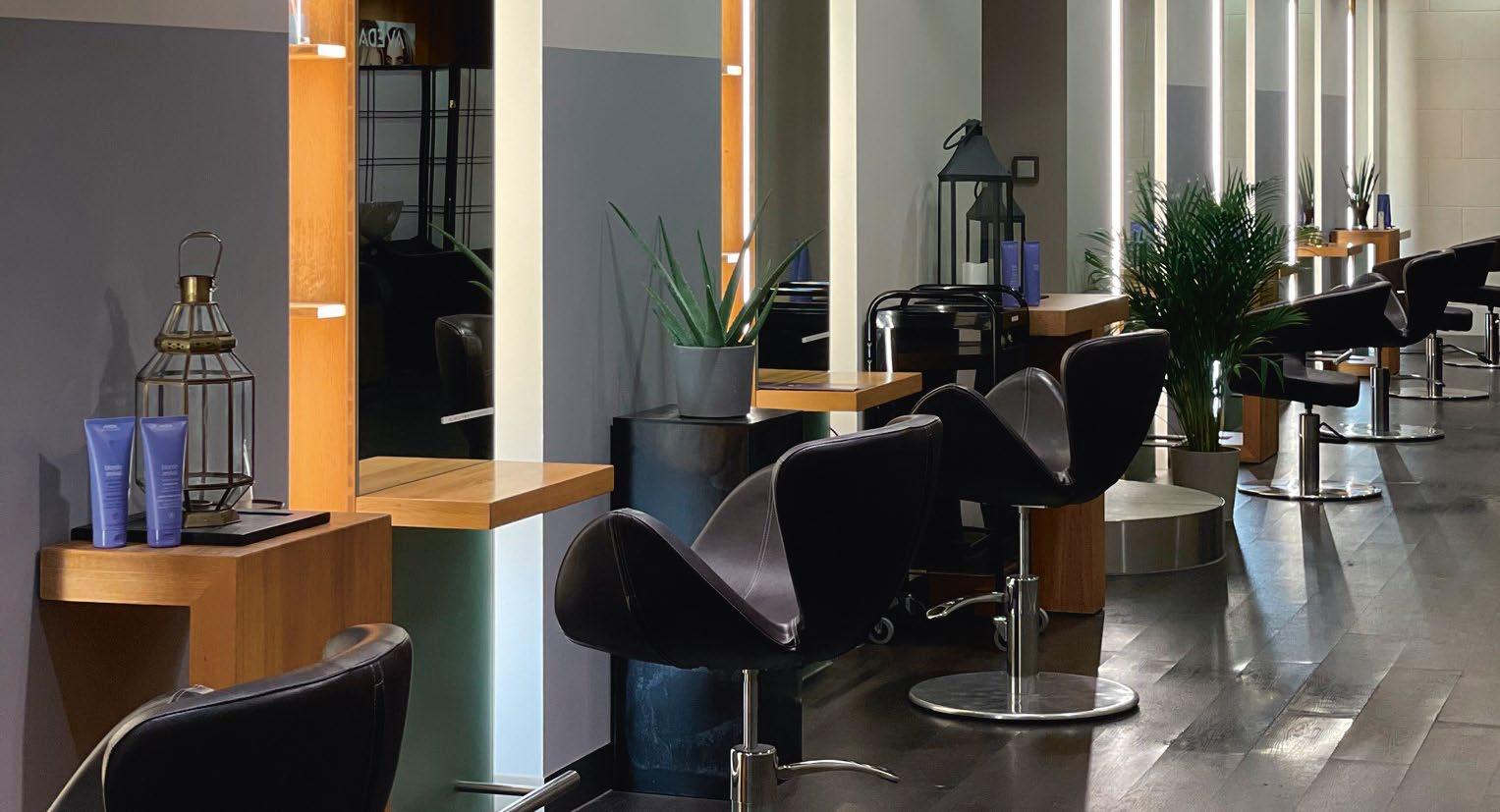
L’OCCITANE
FARFALLA
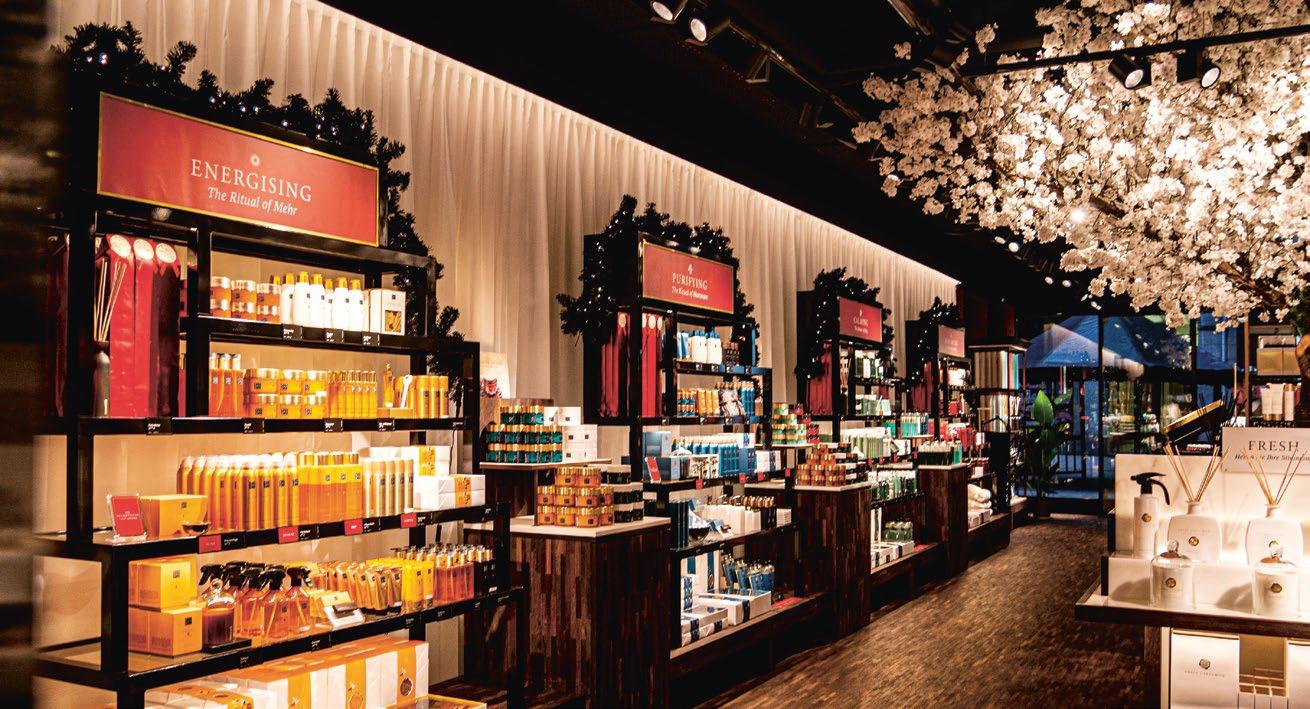
PARFÜMERIE HYAZINTH
Falknerstrasse 17 – hyazinth.ch
Seit 1921 findet man hier eine erlesene Auswahl an Düften und luxuriösen Pflegeprodukten von Marken wie La Mer, Sensai, Revitalash oder Sophie’s Garden. Hinzu kommen edle Düfte, Make-up, professionelle Kosmetikleistungen – und natürlich eine massgeschneiderte Pflegeberatung.
An exquisite selection of fragrances and luxurious skincare products has been on offer here since 1921; with brands such as La Mer, Sensai, Revitalash, and Sophie’s Garden. There are also fine fragrances, make-up, professional cosmetic services – and of course bespoke skincare advice.
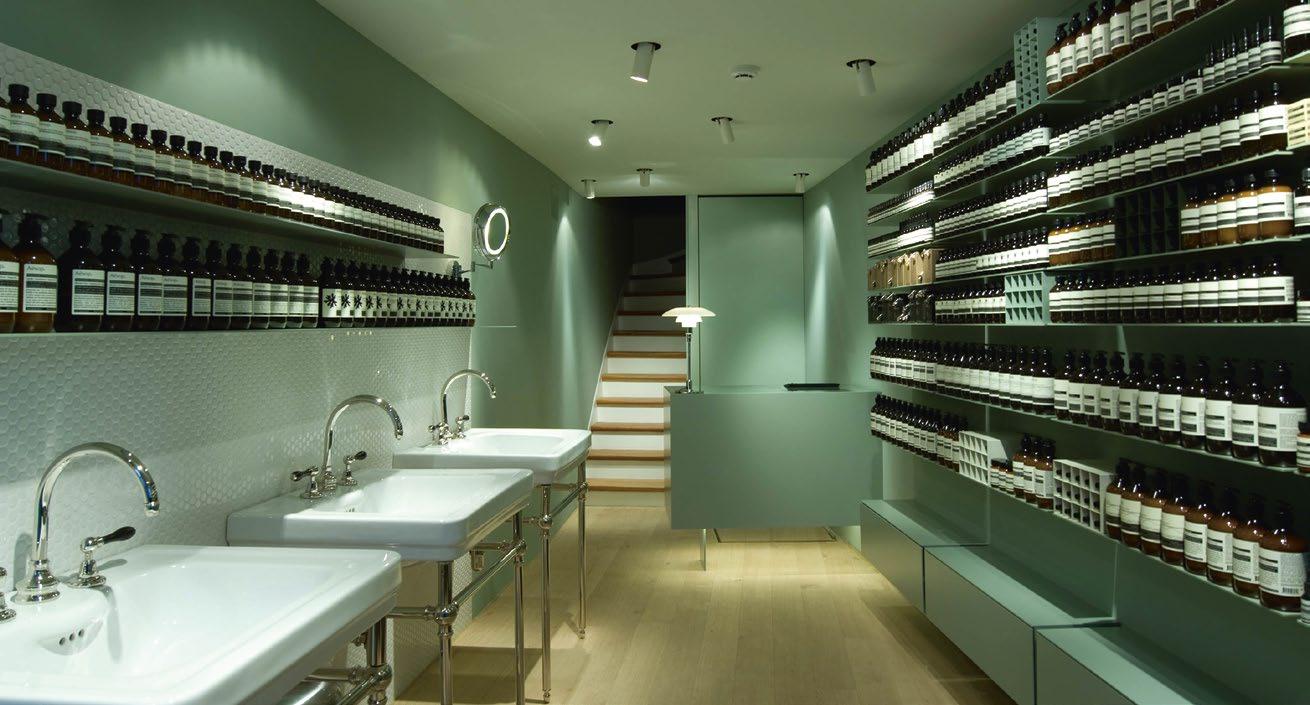
Freie Strasse 103 – cp-praxis.ch
Weniger Falten, straffere Wangen, ein feineres Hautbild oder dauerhafte Haarentfernung – in den stilvollen Räumen inmitten der Altstadt findest du einen Hauch von Luxus. Zum individuell auf deinen Hauttypen abgestimmten Verwöhnprogramm mit hochwertigen Schweizer Produkten gehört ein Glas Champagner oder ein Vitamin-Smoothie.
Wrinkle reduction, firmer cheeks, a finer complexion, or permanent hair removal – tucked away in these stylish rooms in the heart of the historical city centre, you will encounter a touch of luxury. The programme of pampering your skin with top-quality Swiss products, is individually tailored and includes a glass of champagne or a vitamin smoothie.
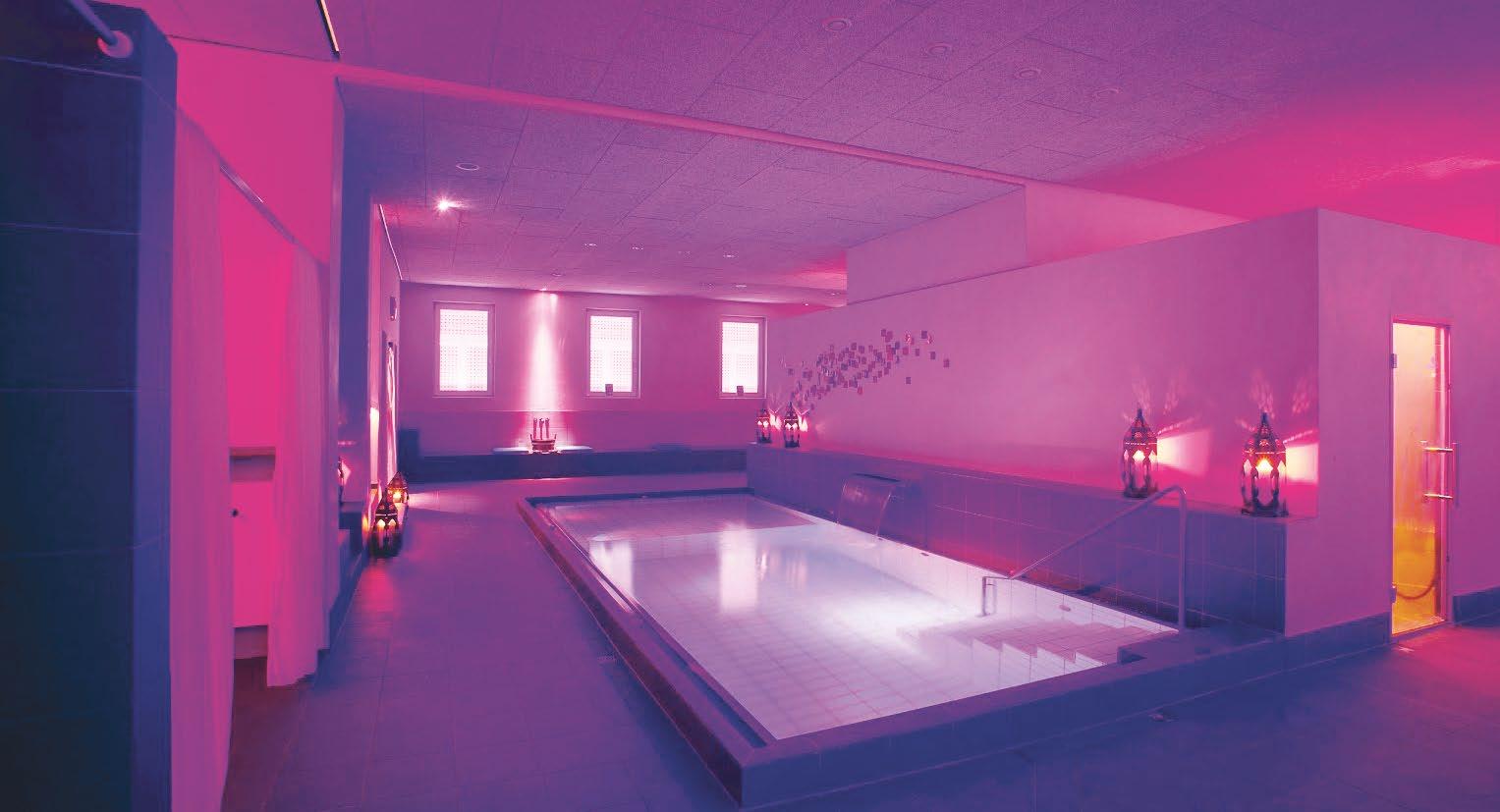
RITUALS
Freie Strasse 11 / Bahnhofspassage – rituals.com
Schon das Betreten dieses Stores wirkt entspannend und beruhigend; es riecht wohltuend nach Lotusblüten und Zedernholz. Von Seifen und Crèmes mit natürlichen Inhaltsstoffen bis hin zu Schaumbädern, Tee und Duftkerzen findet sich in dieser Oase der Ruhe alles, was die kleinen Momente schöner macht.
Just walking into this store already has a relaxing and calming effect; a pleasant scent of lotus blossom and cedarwood pervades the air. This oasis of peace offers soaps and creams made with natural ingredients through to bubble baths, teas, and scented candles; everything to make those special little moments even lovelier.
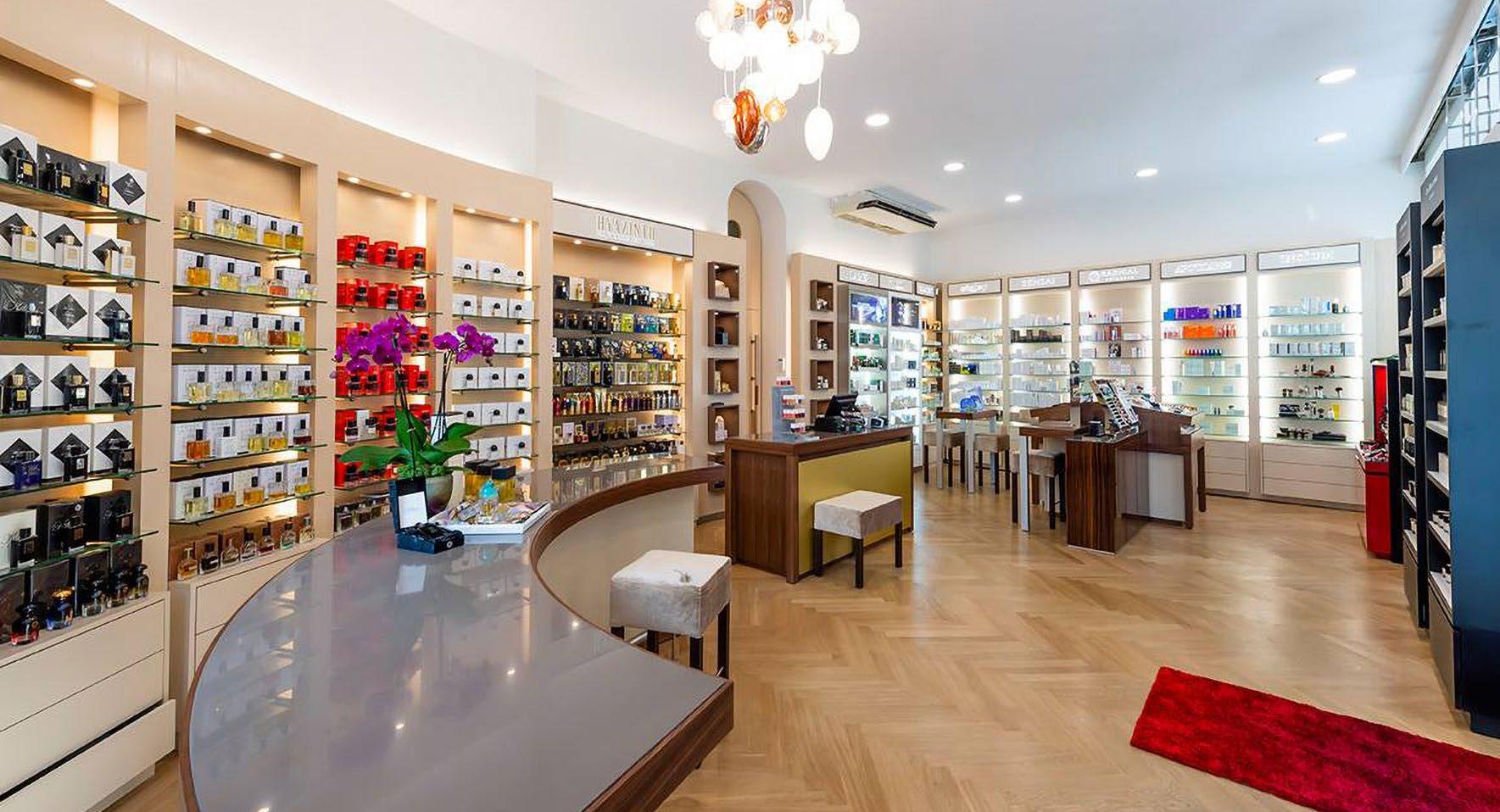
Spalenberg 24 – aesop.com
In diesem 700 Jahre alten Haus findest du das gesamte wohlduftende Sortiment von Aesop. Seit seiner Gründung 1987 hat das australische Unternehmen die Botanik in die Schönheitspflege zurückgebracht. Zitrusöle statt Parabene, Bienenwachs statt Silikone, Salbei statt Farbstoffe – weniger ist mehr, so das Credo, das sich auch im Interieur zeigt.
In this building, built 700 years ago, you will find the entire, delightfully fragrant range of Aesop products. Since it was founded in 1987, this Australian company has been reintroducing botanicals to beauty care. Citrus oils instead of parabens, beeswax rather than silicones, sage instead of colorants – less is more is the credo here, also reflected in the interior design.
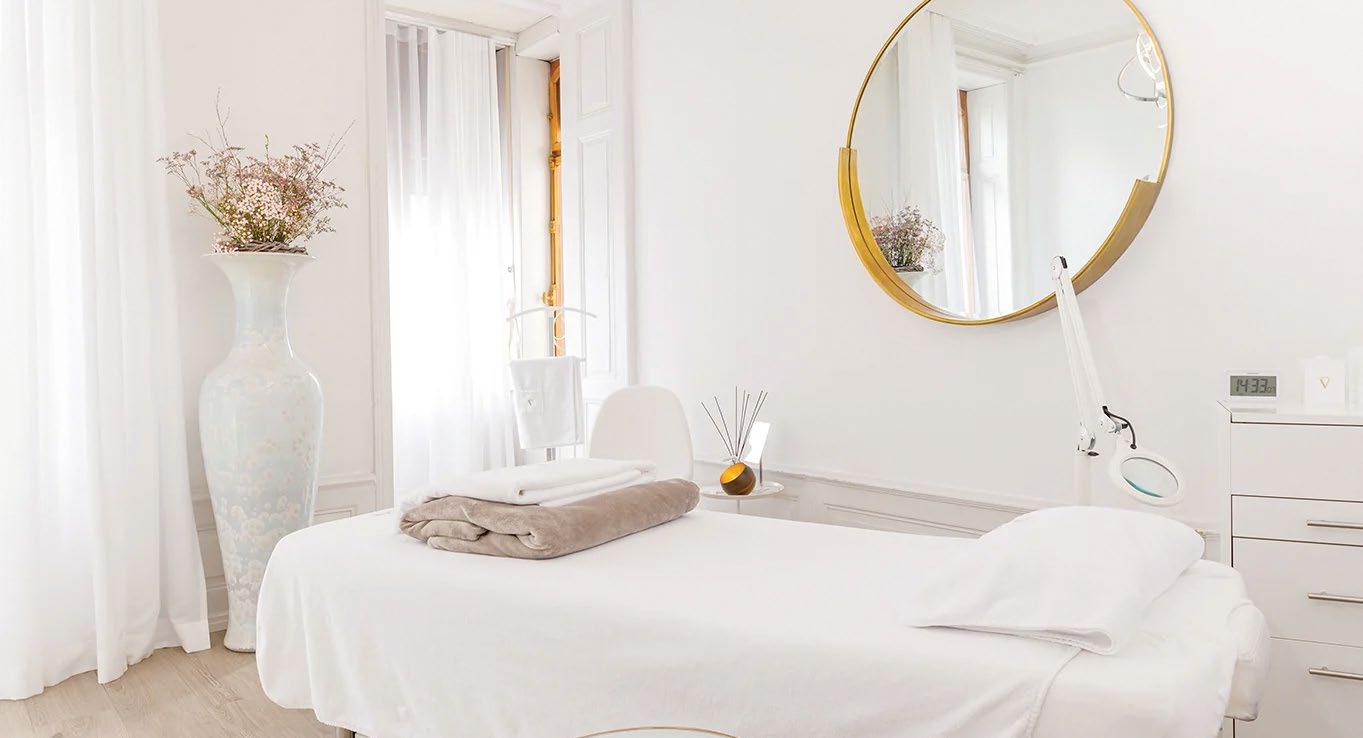
Vogesenplatz 1 – dampfbadbasel.ch
Ein Paradies der Stille und Entschleunigung liegt beim Bahnhof St. Johann; Dampfräume, Warmwasserbecken, Seifenschaum, beheizte Steinbänke … sounds like Hamam! Zudem gibts zum Beispiel Shiatsu-, Honig- oder Bambus-Massagen. Adieu ihr Nackenverspannungen, auf Nimmerwiedersehen Rückenweh!
A paradise of tranquillity and relaxation just next to the St. Johann train station; steam rooms, hot water pools, soapsuds, heated stone benches … sounds like hammam! And then there are the shiatsu, honey, and bamboo massages, to mention just a few of the treatments available. So long neck tension, good riddance backache!
AESOP DAMPFBAD
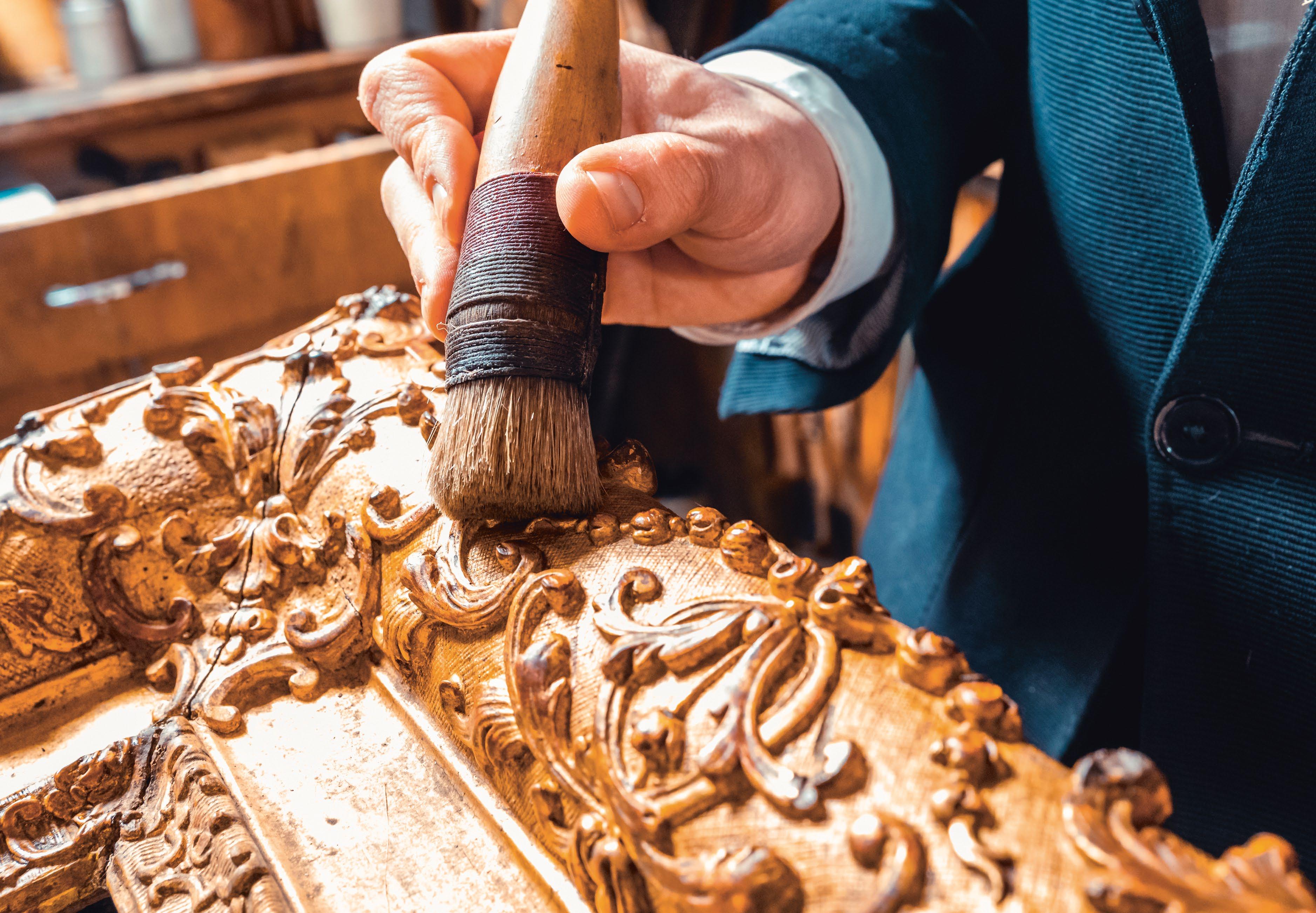
KNOELL RAHMEN
IM SCHATTEN DES KUNSTWERKS
Von der National Gallery London bis zur Fondation Beyeler – am Basler Familienunternehmen Knoell Rahmen kommen die bedeutendsten Museen und Galerien nicht vorbei. Das von Robert Knöll in vierter Generation geführte Geschäft beheimatet das weltweit grösste Archiv an historischen Bilderrahmen.
Das Archiv von Knoell Rahmen im geschichtsträchtigen Basler Erasmushaus an der Bäumleingasse könnte aus einem Abenteuerfilm stammen. Das Kellergewölbe ist dunkel und etwas unheimlich, überall stehen wertvolle, historische Artefakte rum und die Zeit scheint im letzten Jahrhundert stehen geblieben zu sein. Tatsächlich kann das Basler Unternehmen schon auf vier Generationen Familiengeschichte zurückblicken und hat sich über all die Zeit einen Namen im Sammeln, Restaurieren, Vermitteln und Verkaufen von historischen Bilderrahmen von der Renaissance bis zur Moderne gemacht.
Text & Bilder: Nicola Mathis
An den Grenzen der Wahrnehmung
Robert Knöll leitet heute das Unternehmen, das sein Vater
Thomas Knöll in den 1980er-Jahren gegründet hatte, welches wiederum auf dem Vergolder-Handwerk seines Vaters und Grossvaters aufbaut. «Im Gegensatz zu den drei vorangegangenen Generationen habe ich zunächst einen akademischen Weg eingeschlagen. Ich habe Kunstgeschichte und Philosophie studiert und bin dann in den Betrieb meines Vaters reingerutscht», erzählt Robert, während er durch die Werkstatt und das wertvolle Archiv streift, in dem gerade mal vier Personen Aufträge aus der ganzen Welt bearbeiten. «Ich merkte ziemlich schnell, was das für eine unglaublich wertvolle und seltene Nische ist, in der wir uns hier bewegen. Die überdies so fragil ist, dass man sich schon ordentlich anstrengen muss, dies für kommende Generationen zu bewahren. Vor 20 Jahren gab es noch eine ganze Handvoll vergleichbarer Experten antiker Rahmen in Paris, London und Berlin. Doch unser Beruf wird inzwischen stetig seltener.»
Dabei erzählt jeder einzelne bei Knoell archivierte Bilderrahmen eine eigene Geschichte. «Ich sehe mich in der Verantwortung, diese Geschichte zu bewahren, damit sie auch für die kommenden Generationen erhalten bleibt», sagt Robert, zieht einen Bilderrahmen aus dem Regal und mustert diesen mit geschultem Blick. Mit Geschichte meint er auch das handwerkliche Wissen über die Bilderrahmen, welches sich das Familienunternehmen über vier Generationen hinweg angeeignet hat und das nicht verloren gehen darf. «Wie sieht ein Stück Nussbaumholz etwa aus, das 400 Jahre alt ist? Wie sieht etwas aus, das nur 100 Jahre gealtert ist? Dieses Wissen ist für unsere kleine Branche unheimlich wertvoll und führt dazu, dass wir heute DIE Anlaufstelle für die bedeutendsten Museen und Sammler der Welt sind, wenn es um historische Bilderrahmen geht.»
«Im Moment des Ausrahmens siehst du das Werk, so wie es entstanden ist – so wie es die Künstlerin oder der Künstler erschaffen hat.»
Robert Knöll
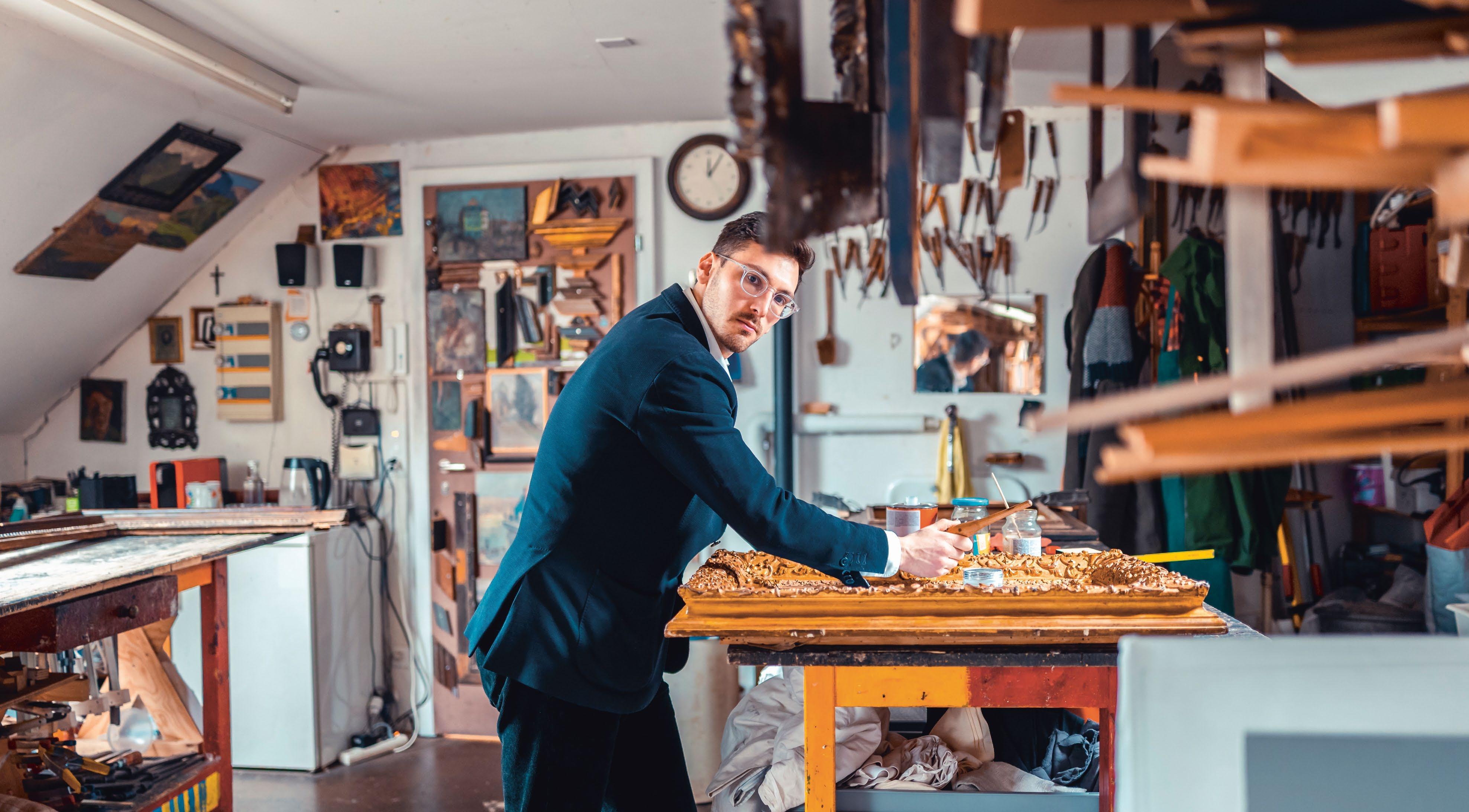
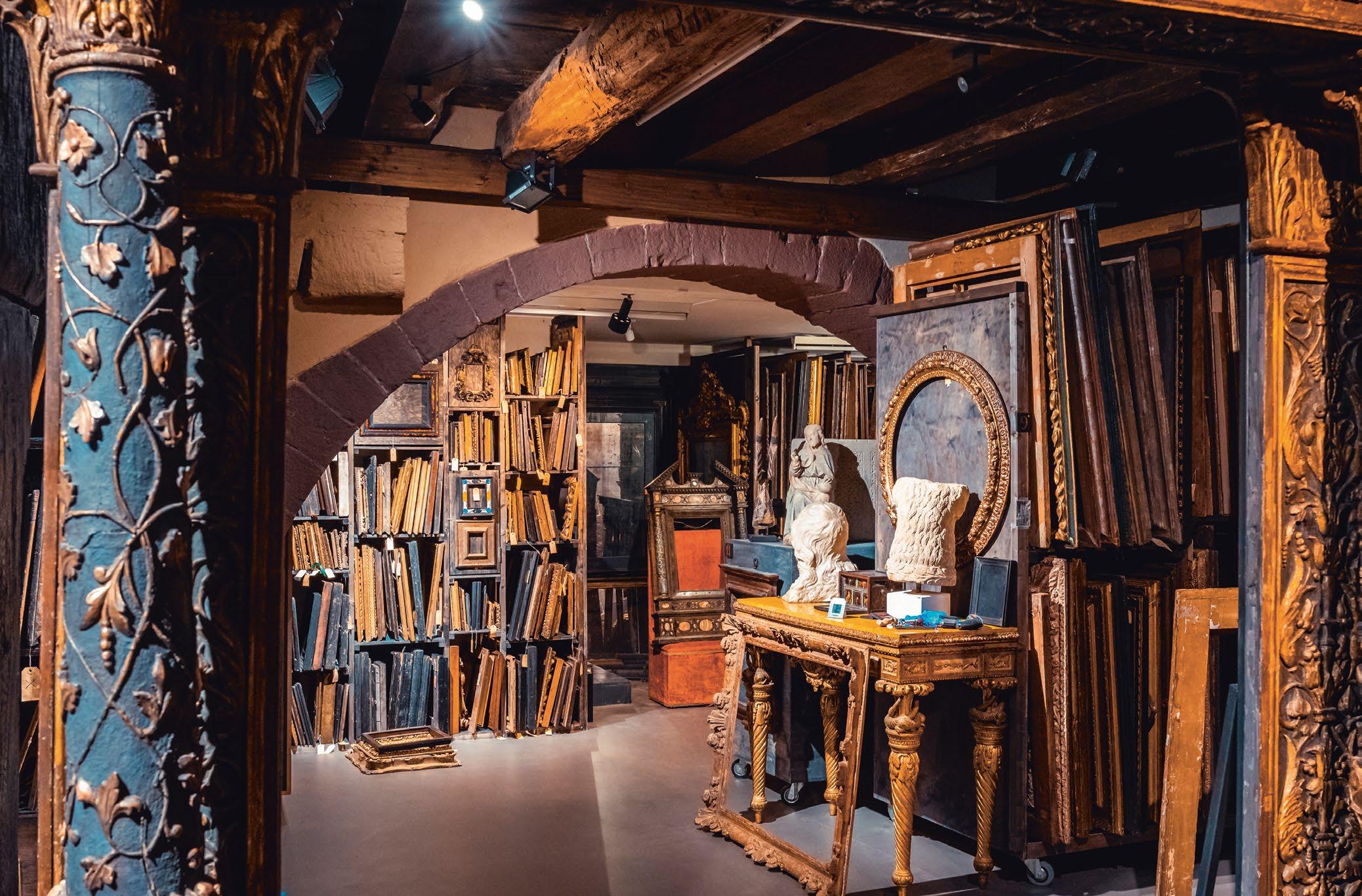
Die Suche nach dem perfekten Bilderrahmen Plant ein Museum eine neue Ausstellung, zeigt es die Kunstwerke grundsätzlich immer im dazugehörigen Bilderrahmen. Ob es sich hierbei allerdings um den Originalrahmen handelt, welchen die Künstlerin oder der Künstler zur damaligen Zeit für das Werk ausgesucht hat, weiss das Museum in vielen Fällen nicht. Hin und wieder kommt es dann vor, dass sich ein Museum auf die Suche nach einem neuen Bilderrahmen macht. Wünscht sich die National Gallery London, die Pinakotheken in München, die Fondation Beyeler in Riehen oder das Kunstmuseum Basel beispielsweise einen wertvollen, venezianischen Renaissancerahmen für ein bedeutendes Kunstwerk, welches das Museum restauriert und demnächst in neuem Licht präsentiert, kommt Knoell Rahmen ins Spiel. Dessen Archiv an rund 5000 Bilderrahmen reicht bis ins 15. Jahrhundert zurück. Der Prozess von der Kontaktaufnahme bis zur Wahl des finalen Rahmens dauert nicht selten mehrere Monate. Bei der Suche nach dem perfekten Bilderrahmen spielen nämlich nicht nur die gewünschte Kunstepoche und das Aussehen eine Rolle, es sind insbesondere spezifische Abklärungen, die getroffen werden müssen: Abklärungen zu den klimatischen Bedingungen, denen das Werk sowie auch der neue Rahmen im Museum ausgesetzt ist, Abklärungen zur erforderten Ausgestaltung des Innenlebens des Rahmens oder wie viel vom Bild durch den Rahmen womöglich verdeckt werden darf. «Dieser langwierige Prozess macht deutlich, welch hohe Bedeutung der Rahmung zuteilwird», betont Robert mit ansteckender Faszination: «Der Rahmen steht zwar nie selbst im Rampenlicht, doch hat er die Kraft, unsere Wahrnehmung eines Kunstwerks in eine bestimmte Richtung zu lenken.»
Ein intimer Moment
Die diskrete Arbeit mit den grossen Museen und Galerien der Welt geht mit einem ganz besonderen Privileg einher, welches Robert stets von Neuem erfüllt: So nah am Kunstwerk wie sonst keiner zu sein. Bei der Wahl eines Rahmens bekommt Robert das Kunstwerk in ungerahmtem, quasi nacktem Zustand zu sehen. Ein Monet, ein Picasso, ein Munch, ein Hodler oder ein Giacometti ohne Rahmen? Ein ungewöhnlicher, ja fast schon intimer Anblick. «Im Moment des Ausrahmens siehst du das Werk so, wie es entstanden ist – so wie es die Künstlerin oder der Künstler erschaffen hat.» Dieses Berufsprivileg schafft es, seine Leidenschaft für die Kunst und sein Familienerbe immer wieder von Neuem zu entfachen. Eine fragile Nische im Kunstmarkt, welche zwar im Schatten der Kunstwerke steht, diese jedoch massgeblich beeinflusst.
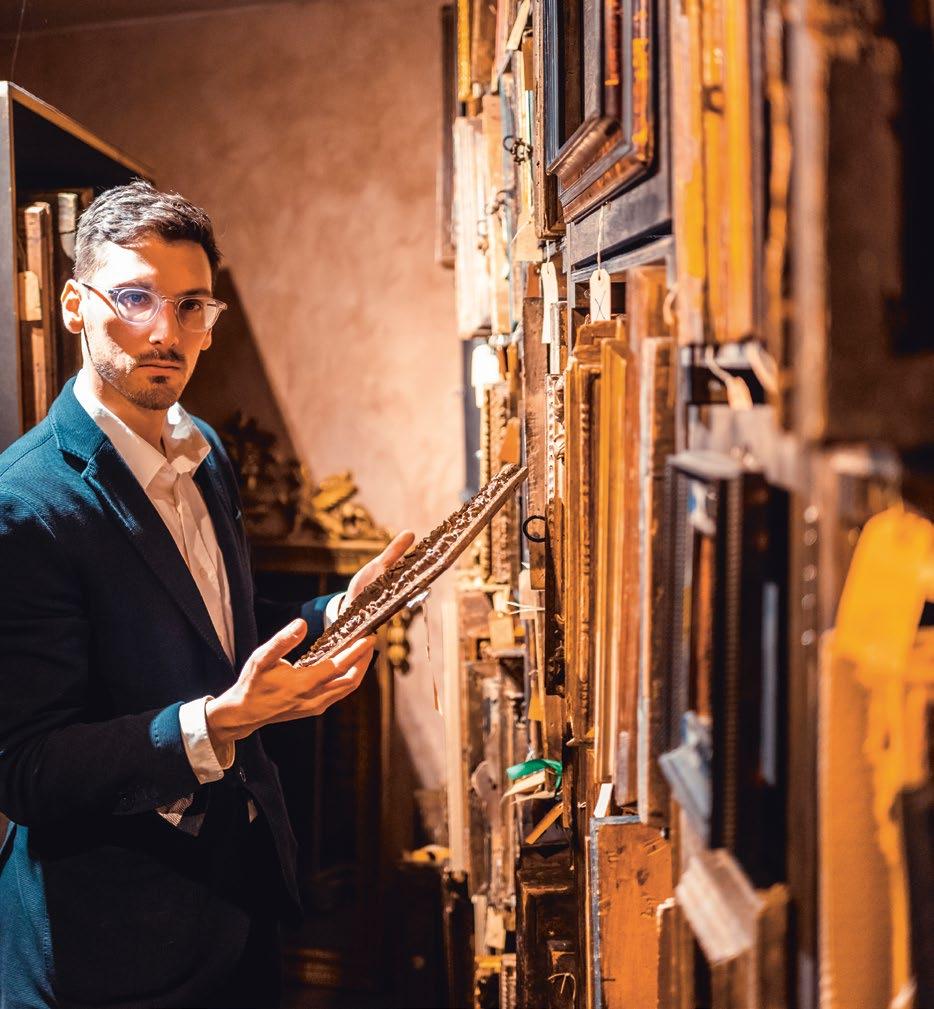

Bäumleingasse 18, im Erasmushaus – knoellrahmen.ch
KNOELL RAHMEN

Ein breites Kunstspektrum
Die Kulturstiftung Basel H. Geiger I KBH.G organisiert seit 2020 jährlich drei eigens konzipierte und kuratierte Ausstellungen zu unterschiedlichen kulturellen Themen. Das Spektrum reicht von zeitgenössischer Kunst aus der Karibik oder dem arabischen Raum über Fotografien, eine immersive Auseinandersetzung mit dem Thema Longevity bis zur Suche einer Künstlerin nach ihrer Heimat. Die Ausstellungen sowie alle begleitenden Veranstaltungen sind nach dem Willen der Stifterin Sibylle Piermattei-Geiger kostenlos, ebenso die zur jeweiligen Thematik verfasste Publikation. Die KBH.G ist täglich, ausser Dienstag, von 11 bis 18 Uhr geöffnet. Infos unter kbhg.ch
A Broad Spectrum of Art
Since 2020, the Kulturstiftung Basel H. Geiger | KBH.G has been organizing three specially conceived and curated exhibitions each year on a range of cultural themes. The spectrum spans contemporary art from the Caribbean and the Arab world, photography, an immersive exploration on the topic of longevity, and an artist�s search for her home (�Heimat�). In accordance with the wishes of founder Sibylle Piermattei-Geiger, all exhibitions, accompanying events, and publications produced for each exhibition are free of charge. The KBH.G is open daily, except Tuesdays, from 11 am to 6 pm. Further information: kbhg.ch Kulturstiftung Basel H. Geiger Spitalstrasse 18, Basel kbhg.ch
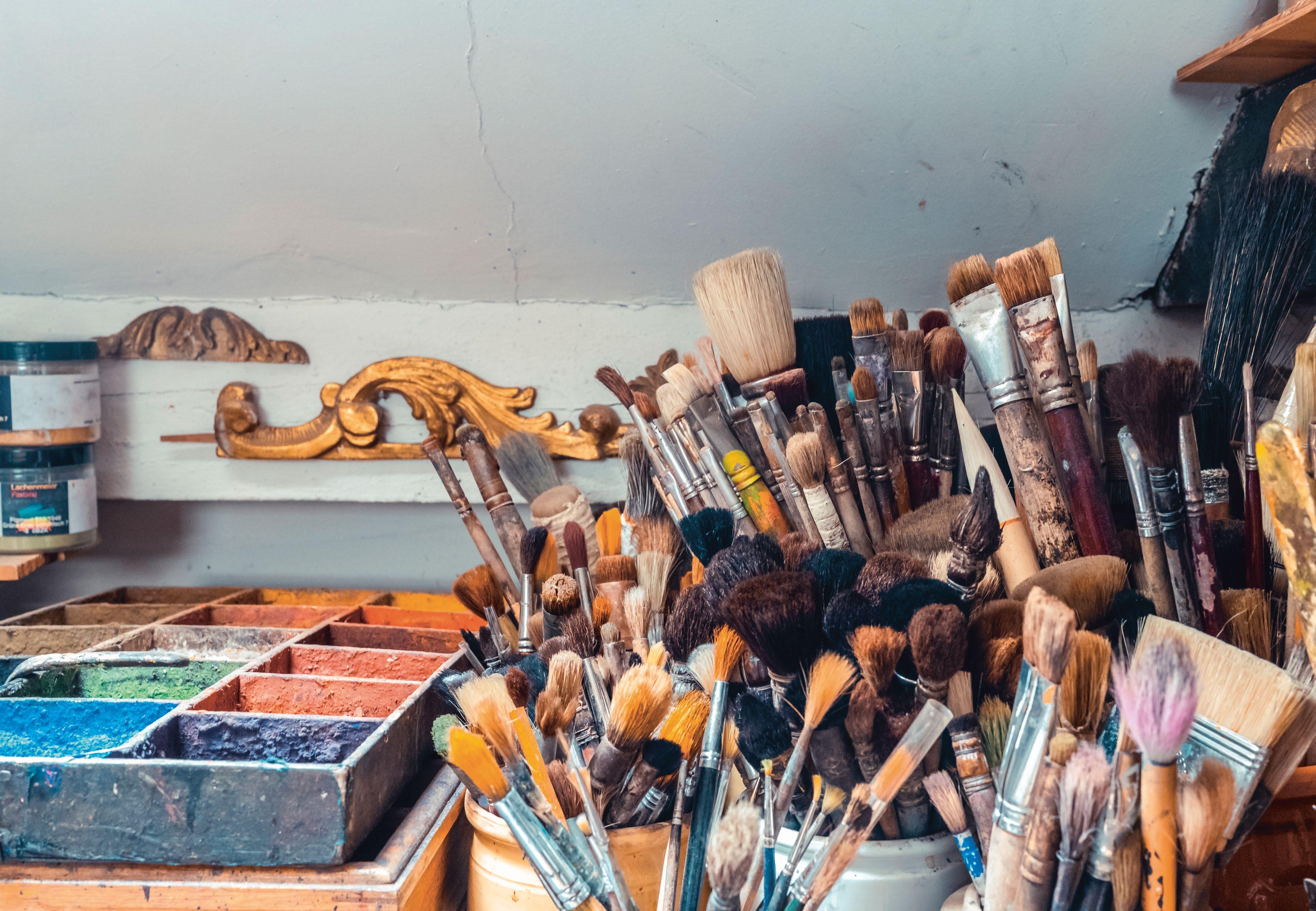
OVERSHADOWED BY THE WORKS OF ART
From the National Gallery in London to the Fondation Beyeler – major museums and galleries cannot do without Knoell Frames, a family business based in Basel. Robert Knöll represents the fourth generation of the family to be running this business, home to the world’s largest archive of historical picture frames.
The archival storeroom of Knoell Frames, in the historic Erasmus House located in the Bäumleingasse, could have come straight out of a historical swashbuckler film. The vaulted cellar is dimly lit and a little eery, precious historical artefacts are everywhere and it feels as though time stood still a century ago. In fact, it is indeed so, that this Basel establishment can look back on four generations of family history, during which time it has made a name for itself in the business of collecting, restoring, procuring, and selling historical picture frames from the Renaissance through to the Modern.
Framing the visual field
Robert Knöll now runs the business founded by his father, Thomas Knöll, in the 1980s, which in its turn was founded on the gilding trade built up by his father and grandfather. “Unlike the three generations that preceded me, I initially chose an academic path. I first studied art history and philosophy but eventually slipped into my father’s business,” Robert tells me as he wanders through the workshop and the treasured stores, in which a mere four people work on assignments from all over the world. “I realised pretty quickly what an exceptionally precious and rare niche it is that we find ourselves in here. Furthermore, it is so fragile that it requires a great deal of effort to keep it alive it for future generations. Twenty years ago, there were still a handful of similar experts specialising in antique frames in Paris, London, and Berlin. But in the meantime, our profession has become ever rarer.”
Every single frame stored in Knoell’s storerooms has a story to tell. “I feel a genuine responsibility for preserving this history so that it is still here for future generations,” says Robert, as he pulls one of the frames from its shelf and examines it with an expert eye. By history, he also means the skilled craftsmanship and expertise on picture frames which the family business has built up over four generations, and which should be preserved at all costs. “What does a piece of walnut wood look like when it is 400 years old? What does something look like if it has only aged for 100 years? This kind of knowledge is incredibly important for our tiny field and it means that we are now the place to go to for the most important museums and collectors in the world, when it comes to historical picture frames.”
The search for a perfect frame
When a museum is planning a new exhibition, it generally displays the artwork in the frame belonging to it. However, in many cases the museum doesn’t know whether this is really the original frame the artist selected for the work at the time it was created. So every now and then it will come about that a museum
will set out on a search for a new frame. If, for example, the National Gallery in London, the Pinakotheken in Munich, the Fondation Beyeler in Riehen or the Kunstmuseum Basel are looking for a precious Venetian Renaissance frame for an important artwork that the museum has restored and now wants to present in a new light, then Knoell Frames are brought into play. Their archive of around 5,000 frames dates back as far as the 15th century A.D. The time the process takes from the initial contact through to the definitive choice of frame is often several months. When searching for the perfect frame, it is not just the desired period of art nor the frame’s appearance that influence the choice, other specific evaluations are also required: for example, an evaluation of the climatic conditions the work and its new frame will be exposed to in the museum; clarification of what is expected in terms of how the inner side of the frame is structured; or how much of the painting may be concealed by the frame. “This protracted process illustrates just how important the framing actually is,” Robert stresses with infectious fascination. “Although the frame itself is never the centre of attention, it has the power to guide our perception of an artwork in a specific direction.”
“When you remove the frame, the work looks like it did when it was first completed – just as the artist created it.”
Robert Knöll
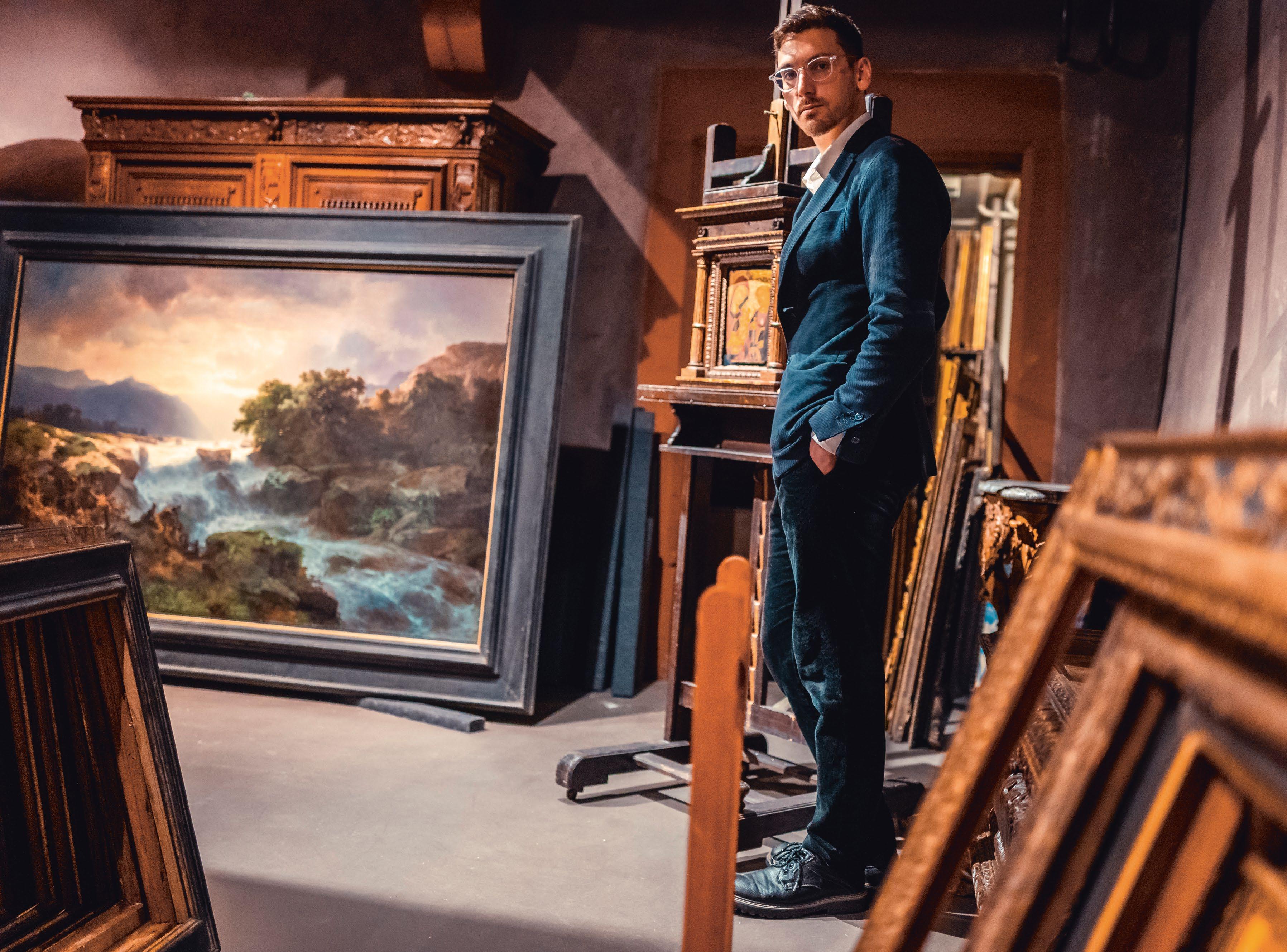
An intimate perspective
His discreet work with some of the world’s most important museums and galleries brings a very special privilege with it, one that gives Robert enormous satisfaction each time: it brings him closer to the work of art than anyone else. When a new frame is being chosen, Robert gets the chance to see the work in its unframed, bare state, so to speak. A Monet, a Picasso, a Munch, a Hodler or a Giacometti unframed? An unusual, almost intimate spectacle.
“When you remove the frame, the work looks like it did when it was first completed – just as the artist created it.” This prerogative of his craft rekindles his passion for art and his family’s heritage time and again. A fragile niche in the art market, overshadowed by the works of art themselves, and which yet has a mighty influence over them.

GRAND CASINO BASEL


BLICK IN DIE BACKSTUBE DER BÄCKEREI KULT
WO
DAS BROT IN RUHE REIFT
Die Bäckerei Kult ist am Voltaplatz angekommen. Der neue Standort spiegelt die Leidenschaft fürs Handwerk – während am Kleinbasler Geburtsort bald gefeiert wird.
Wie schreibt man über eine Bäckerei, deren Name längst Kultstatus hat – deren Inhaberinnen und Inhaber aber keinen Personenkult wünschen? Man versucht, sich über die Betriebskultur anzunähern.
Das geht bei der Bäckerei Kult sogar ausnehmend gut. Sie ist eine der jüngsten, zugleich aber erfolgreichsten Bäckereien von Basel.
In kurzer Zeit expandierte das 2016 an der Riehentorstrasse gegründete Unternehmen: Ein Jahr später folgte der zweite Standort im St. Johann, der sich seit Ende 2024 – heller und grösser – am Voltaplatz befindet.
Dort setzt sich nun Lukas Schertenleib zum Gespräch, gross, freundlich und aufmerksam. Er ist der amtsjüngste Mitinhaber der Bäckerei Kult, die alle noch unter 40 Jahre alt sind. Schertenleib – oder sprechen wir besser von Lukas, denn Vornamen gehören hier zur Kultur – gibt gerne Auskunft, fürs Bild wird er später aber vor allem auf die Backstube verweisen. Ein Einzelporträt wäre nicht opportun.
Die Backstube ist nicht nur das betriebliche – und am Voltaplatz absichtlich gläserne – Herz des Unternehmens, sie bildet auch die Identität des Hauses ab. Oder wie es Lukas formuliert: «Wir sind hier alle Teil vom Ganzen.» Das ist nicht einfach Employer-Branding-Sprech, wie er heute gerne auch in Grossunternehmen angerührt wird, um semantische Wir-Gefühle zu schüren. In der Bäckerei ist der gesprochene Satz das Resultat einer gewachsenen Betriebskultur und nicht erst der Wunsch nach einer solchen.
Aber beginnen wir dort, wo die besten Geschichten beginnen: Beim Essen beziehungsweise beim Brot. Das hat die Bäckerei Kult, als sie den Betrieb in der ältesten existierenden Backstube der Nordwestschweiz aufnahm, nicht per se neu erfunden. Aber das Gründungsteam hat es zum Ursprung zurückgeführt und von dort aus weiterentwickelt. Die Zutaten sind regional, das Vorgehen ist traditionell und sorgsam. Allein der Teig ist ein langsamer Prozess: Ist er zubereitet, ruht er erst mal. Erst dann wird gebacken.
Diese umständliche Art klingt fast etwas kontraproduktiv in einer auf Wachstum fokussierten Wirtschaft, ist aber in der Tat wesentlicher Bestandteil des Erfolgs. Expansion per se ist auch nicht im Sinn der Bäckerei. «Wir wachsen organisch», sagt Lukas. Oder anders gesagt: Man bäckt, was gebraucht wird, ohne den Markt anzuheizen. Der Kundschaft gefällts: Den allergrössten Teil des Umsatzes macht die Bäckerei im Ladengeschäft. Lieferungen an Hotels und Lokale machen einen deutlich kleineren Teil aus.
Text & Bilder: Andreas Schwald
Eine Quartierbäckerei von Stadtformat Entsprechend zielt die Bäckerei Kult nicht auf ein ausgedehntes Filialnetz ab; auch das wäre aufgeblasen. Es gilt: Der Teig muss ruhen, bis er gut ist. Dasselbe gilt für die Betriebsentwicklung. So sei es auch möglich gewesen, die aktuelle Pop-Up-Bäckerei auf dem Bruderholz zu eröffnen, wie Lukas sagt: Die Gelegenheit bot sich, man war parat und konnte die Chance nutzen. Eine Zwangsexpansion wird daraus aber nicht gemacht.
Denn die Bäckerei Kult ist eher eine klassische Basler Quartierbäckerei, einfach von Stadtformat, als dass sie eine Grossbäckerei wäre, die ein breites Netz zu beliefern hat. Das Kult-Team hat den sprichwörtlichen «Sweet Spot» erreicht, wo es sich auf handwerklich hohem Niveau produzieren und gleichzeitig als KMU mit rund 50 Mitarbeitenden funktionieren lässt.
Ein Beispiel? Das neue Vollkornbrot, das gerade entwickelt wird. «Jedes Jahr nehmen wir uns vor, eine Brotsorte zu überarbeiten», sagt Lukas. «Aktuell ist es das Vollkornbrot: Unser Sauerteig-Experte Sebastian hat an der Rezeptur getüftelt und verbessert, jetzt haben wir ein fluffiges, aber festes Brot, das nun noch finalisiert wird.» Er zeigt auf einen verpackten Laib hinter der Theke: «Das ist es.» Mitarbeitende werden gebeten, davon zu kosten und ihr Feedback an Sebastian zu geben. Mit deren Rückmeldungen wird er das Brot finalisieren. Im Mai soll es so weit sein.
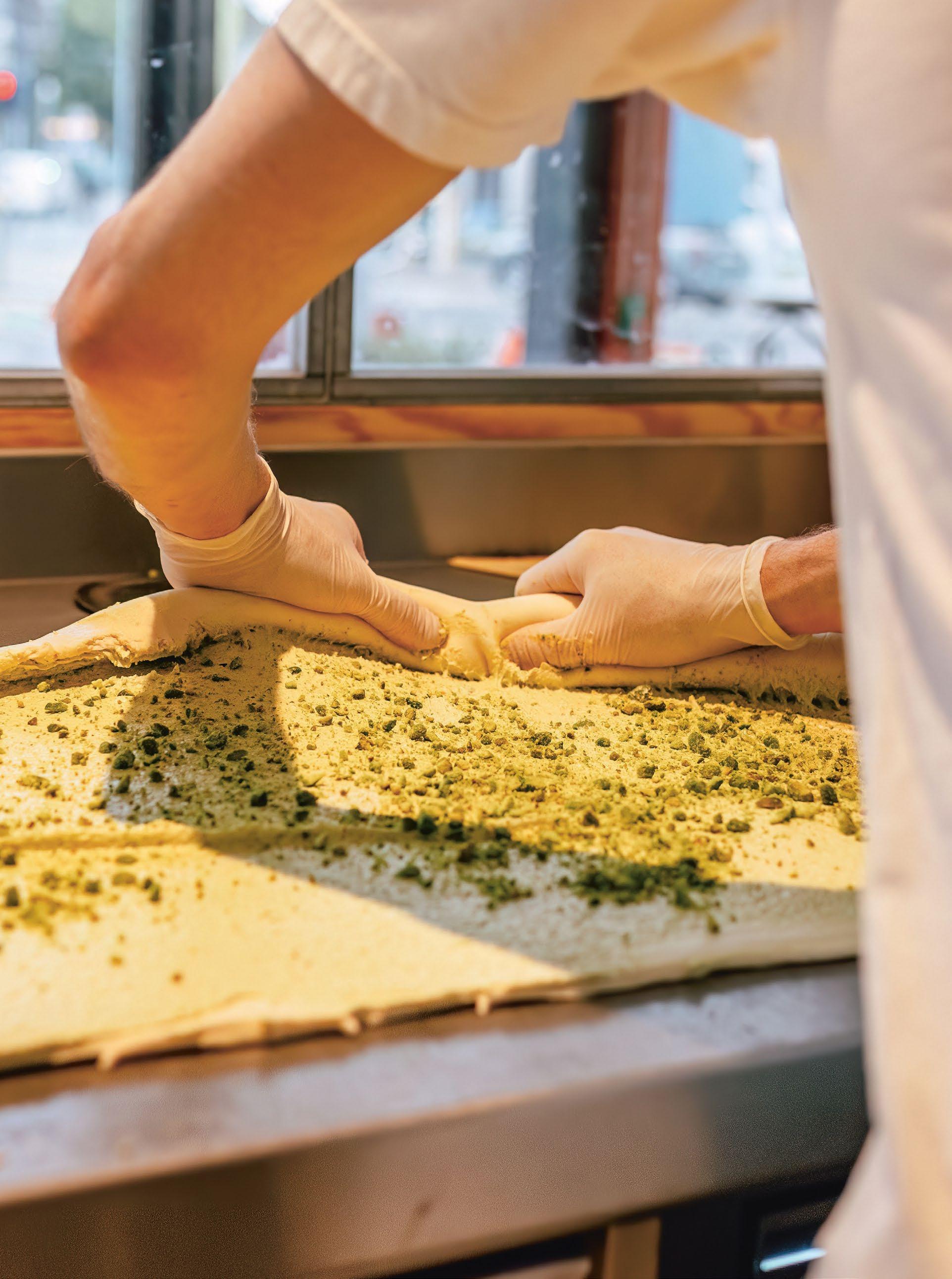
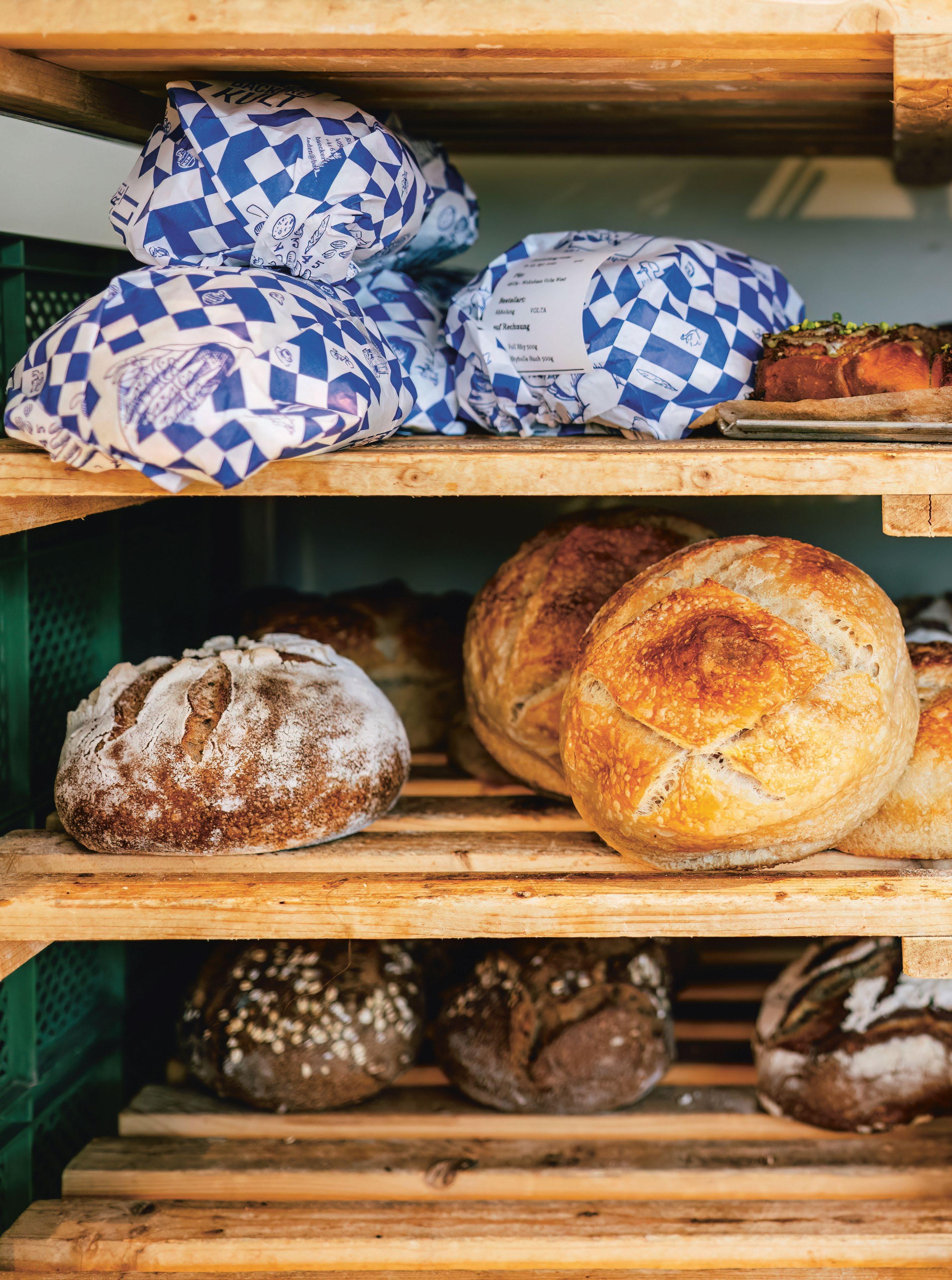
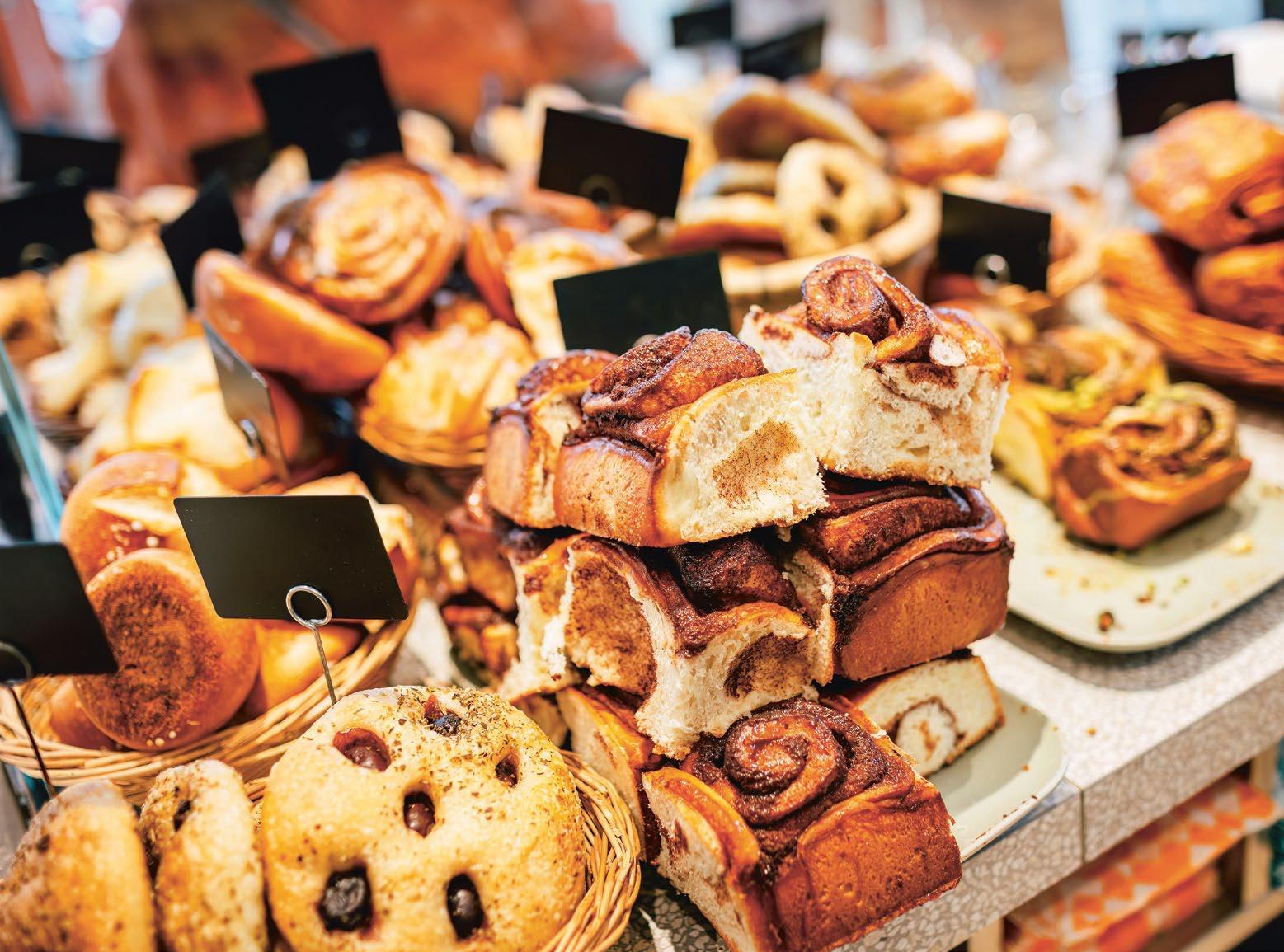
Das Kulturgut Brot im Scheinwerferlicht
Was für Private nach viel Tüftelei klingt, ist in der Gastronomie normal. An einer Rezeptur wird so lange gefeilt, bis das Ergebnis stimmt. Auch beim Kulturgut Brot. Die Herausforderung ist, die neue Rezeptur so über das gesamte KMU auszurollen, dass es regelmässig, konsistent und in ansprechenden Mengen produziert werden kann. Dafür muss nicht nur der Prozess stimmen, sondern auch das Knowhow des Teams. Das ist ein weiterer Teil der Betriebsseele: Die Mitarbeitenden funktionieren miteinander. Ein Vorteil ist, dass viele im selben Alter sind. Da ist ein junges, erfahrenes Team am Werk.
Zum Beispiel Guillaume. Er ist an diesem Freitag mit der Schneckenproduktion beschäftigt. Seine Arbeitsstube ist deutlich abgesetzt von dort, wo der Ofen steht – ein räumlicher Vorteil am Voltaplatz, der genutzt sein wollte, wie Lukas sagt: So kann man optimale Temperaturen für den Teig und auch die Butter schaffen. Wäre ein Ofen in der Nähe, würde die Qualität eher leiden.

1 / Riehentorstrasse 18 – baeckereikult.ch
Die Fronten sind verglast, entsprechend hat Guillaume immer wieder Zuschauerinnen und Zuschauer, wenn er den Teig aus der Ausrollmaschine zieht, flink die selbst hergestellte Pistazienpaste verteilt, den Teig rollt, schneidet und die Portionen aufs Blech legt; immer und immer wieder. Die Verglasung ist in doppelter Hinsicht Absicht: Einerseits sollen die Gäste und die Vorbeiflanierenden zuschauen können, «das ist quasi unser Bildungsauftrag», wie Lukas sagt. Andererseits haben die Bäckerinnen und Bäcker damit möglichst viel Tageslicht zum Arbeiten. Den Zuschauerinnen und Zuschauern gefällt das. Die Kita von nebenan hat sich davon zu Zeichnungen inspirieren lassen, die nun im Lokal hängen.
Wie es nun weitergeht? Erst einmal wird gefeiert. 2026 steht das 10-Jahre-Jubiläum der Bäckerei Kult an, gleichzeitig aber auch das 300-JahreJubiläum der Ur-Backstube im Kleinbasel. Das braucht so seine Vorbereitungen, besonders in einem Geschäft, das mit Umsicht zugange ist. In der Zwischenzeit versüsst man sich die Zeit mit dem neu entwickelten Vollkornbrot. Dessen Teig wird vor dem Backen selbstverständlich auch die nötige Ruhe erhalten.
VISITING THE BAKEHOUSE OF THE KULT BAKERY
Where the bread is left to rise in peace. The Kult bakery has moved to the Voltaplatz. The new location showcases its passion for craftwork – and in the meantime its birthplace in Klein-Basel is preparing for a celebration.
How to write about a bakery the name of which has already achieved cult status – but where the proprietors have no desire whatsoever for any kind of personality cult? You approach the whole thing in terms of company culture.
At the Kult bakery, this approach works exceptionally well. It is one of the most recently established but also most successful bakeries in Basel. The enterprise started out in the Riehentorstrasse in 2016 but expanded very soon after: Just a year later the second site was opened in the St. Johann quarter, and at the end of 2024 this part of the bakery moved to a larger and brighter location at the Voltaplatz.
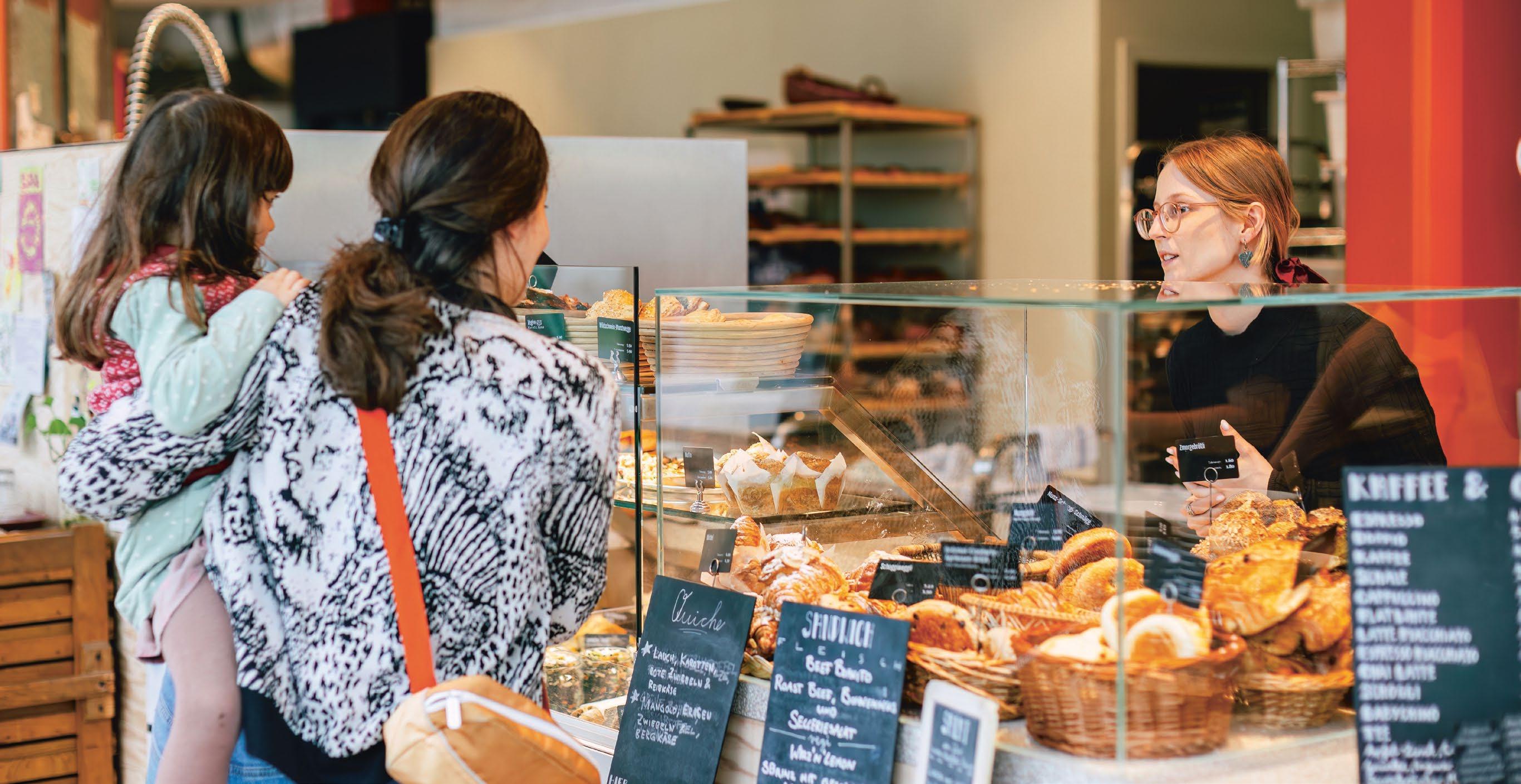
It is there that Lukas Schertenleib now sits down with me for a chat; he is tall, friendly, and alert. He is the most recent co-owner of the Kult bakery, all of whom are less than 40 years old. Schertenleib – or rather Lukas, because calling everyone by their first names is how things are done here – is happy to provide us with information, but when it comes to taking photos, he points us towards the bakehouse. A portrait of him alone would be untoward.
Voltaplatz
The bakehouse is the heart of the company, and not just in terms of the production process – at the Voltaplatz with its glass walls, it is deliberately transparent – it also embodies the entire identity of the enterprise. Or as Lukas puts it: “We are all individual elements in the whole here.” This is not the sort of branding talk from an employer, so popular in large enterprises nowadays, intended to talk up a semantic group identity. In this bakery, the statement is the product of a flourishing company culture and not simply a wish for one.
But let’s start where all the best stories begin: with food, or in this case, bread. The Kult bakery did not reinvent bread per se, when they took over the oldest, still-operating bakehouse in the north west of Switzerland. But the original team did first take it back to its roots and then developed things from there. The ingredients are local; the methods are traditional and executed with care. The dough alone is a slow process: once it has been prepared it is left to rest. Only later is it baked.

This laborious procedure may sound almost counterproductive in an economy that focusses on growth, but it is actually an essential element of the enterprise’s success. Expansion per se is anyway not one of the bakery’s aims. “We grow naturally,” says Lukas. “Or to put it another way: we bake as much as is needed, without whipping up demand. Our customers like it like that: the bakery makes most of its turnover from the sales on its own premises. Deliveries to hotels and restaurants represent a far smaller segment.
The Kult bakery is not aiming to establish an extensive network of subsidiaries; that would be too overblown. The principle is: the dough has to rest until it is just right. And the same applies to how the enterprise develops. This was what made it possible to open the pop-up bakery currently running in the Bruderholz district, as Lukas explains: the opportunity arose, they were ready and could take advantage of the moment. But it will not develop into a forced expansion.
A neighbourhood bakery of city stature
In effect, the Kult bakery is more of an old-fashioned Basel neighbourhood bakery, simply suited to the city, than a large-scale bakery capable of supplying a large network of outlets. The Kult team has hit the proverbial “sweet spot” where they can produce at a high level of craftsmanship, but also function as a small-mid-size enterprise with around 50 employees.
For example? Their new wholemeal bread, which they are just in the process of developing. “Each year we set out to rework one sort of bread,” says Lukas. “And currently that is our wholemeal loaf: our sourdough expert Sebastian has tinkered around with the recipe and improved it, now we have a fluffy yet firm bread that just has to be finalised with the finishing touches.” He points out a loaf that has already been wrapped up behind the counter: “That’s it.” The coworkers are asked to taste it and give Sebastian their feedback. He will use the feedback to finalise the recipe for the bread. It should be ready by May.
The cultural asset of bread in the spotlight
What sounds like an awful lot of fiddling around to a non-professional is actually quite normal in the catering trade. A recipe is worked on until the desired result is achieved. Even with something as traditional as bread. The challenge is to roll out the new recipe in the whole enterprise while ensuring it is produced regularly, consistently, and in the quantities required. To achieve this, the process has to be right, but the team’s knowhow is also crucial. Which is also vital to the company’s spirit: the co-workers function in harmony. One advantage they have here is that a lot of them are the same age. The team at work is young but experienced.
For example, Guillaume. On this particular Friday he is busy making twisted buns. His workspace is situated well away from the area where the oven is located – this was a particular advantage offered by the Voltaplatz location, just begging to be taken advantage of, as Lukas points out: “It means we can ensure the optimal temperatures for the dough as well as for the butter. If there was an oven too close the quality would probably suffer.”
The outer wall is fully glazed, so every now and then Guillaume has an audience as he pulls the pastry out of the rolling machine, swiftly spreads the in-house pistachio paste, rolls out the pastry, cuts it into portions and lays them out on the baking tray; again and again. The glass front was chosen deliberately for two reasons: For one, the customers and passers-by should be able to watch: “That is kind of our educational duty.” is how Lukas puts it. But it also means the bakers have as much daylight as possible to work by. The bystanders enjoy the view. And the children in the daycare centre next door were so inspired that they made drawings of the bakery that are now on display in the café area.
So what’s next? First come the celebrations. In 2026 the Kult bakery will be celebrating its 10th anniversary, but also the 300th anniversary of the original bakehouse in Klein-Basel. This will all take some preparation, especially in an establishment that pays such attention to detail. In the meanwhile, they are whiling their time with the newly improved wholemeal bread. And of course, its dough will be allowed all the time it requires before it is baked.
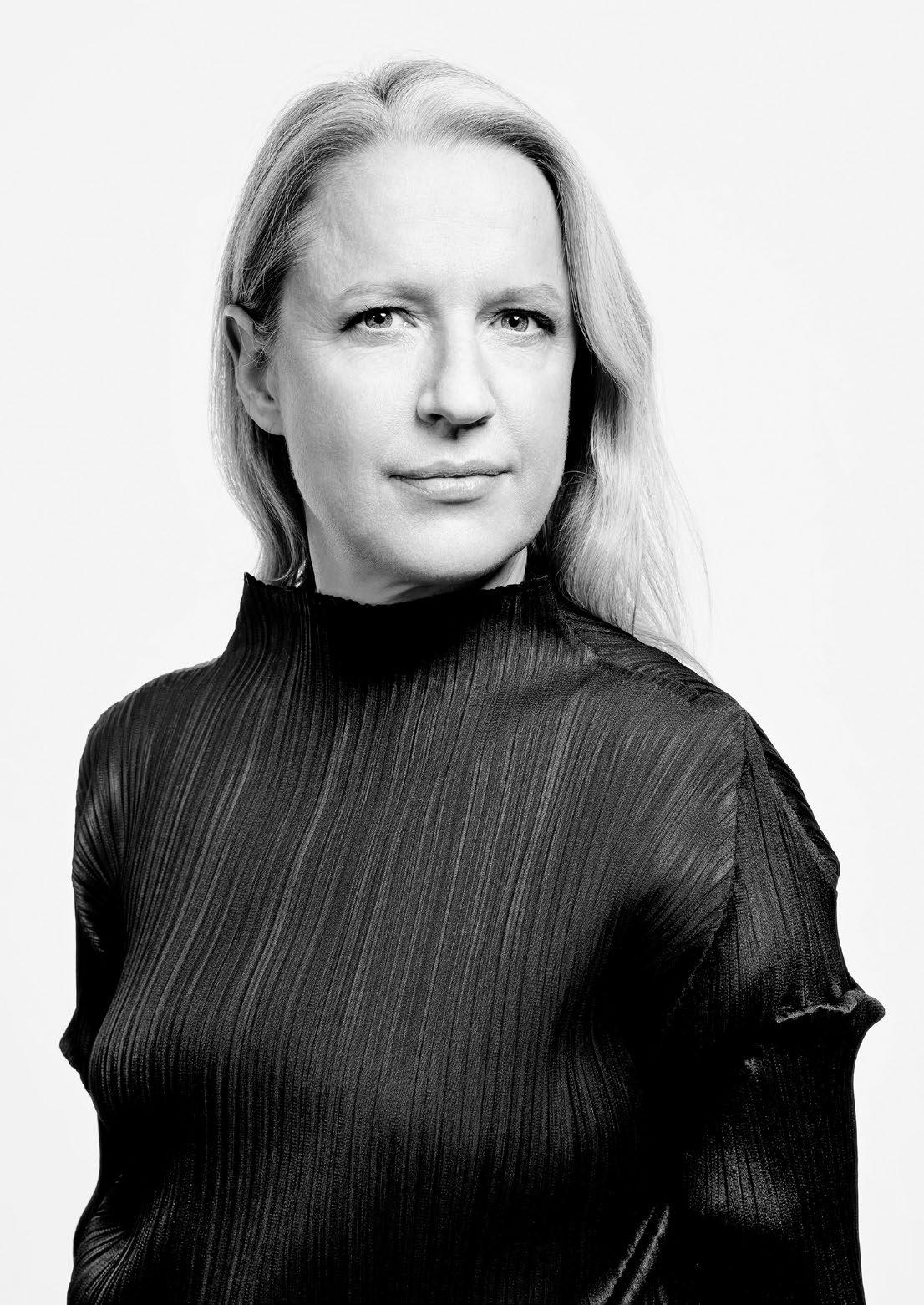

Maike Cruse
FÜR LANGANHALTENDE FREUDE
SCHÖNES GESCHENK!
Du brauchst noch ein Mitbringsel, ein Geburtstagspräsent oder möchtest dich selber wieder einmal beglücken? In diesen Stores findest du kreative, coole und hübsche Geschenke, die garantiert lange Freude bereiten.

Gerbergässlein 10 + 12 – japanischwohnen.ch
One-Way-Ticket nach Japan gefällig? In diesem Concept Store verschmelzen Bücher Antiquitäten, Futons, jahrhundertalte Handwerkskunst und moderne Lifestyleartikel zu einem harmonischen kleinen Paradies.
Looking for a one-way ticket to Japan? In this concept store, books, antiques, futons, centuries-old handicraft pieces and modern lifestyle articles fuse into a harmonious oasis.

Streitgasse 5 – feinedinge.ch
Arven-Duschgel aus Aesch, Monotypien aus Basel, Papeteriewaren aus Bern, Cocktailgläser aus dem Wallis oder Gewürze aus Herisau; Feinedinge verkauft handwerklich hergestellte Produkte mit Herz und Seele. Garantiert aus der Schweiz.
Swiss pine shower gel made in Aesch, monotypes from Basel, stationery from Bern, cocktail glasses from the Valais and seasonings from Herisau; Feinedinge sells handcrafted products with heart and soul. Guaranteed made in Switzerland.
St. Alban-Graben 8 – kunstmuseumbasel.ch
Auch ohne Eintrittsticket kannst du hier Plakate, Postkarten, Wohnaccessoires, Spiele und coole Designprodukte shoppen. Zudem natürlich exklusive Künstlereditionen. Ein Ort der Inspiration und ein Geheimtipp für alle, die besondere Geschenke suchen.
You can shop here for posters, postcards, interior design accessories, games, and cool design products even without paying for admission to the museum. Also on offer, of course, are exclusive artist’s editions. An inspirational place and an insider’s tip for anyone looking for a special gift.
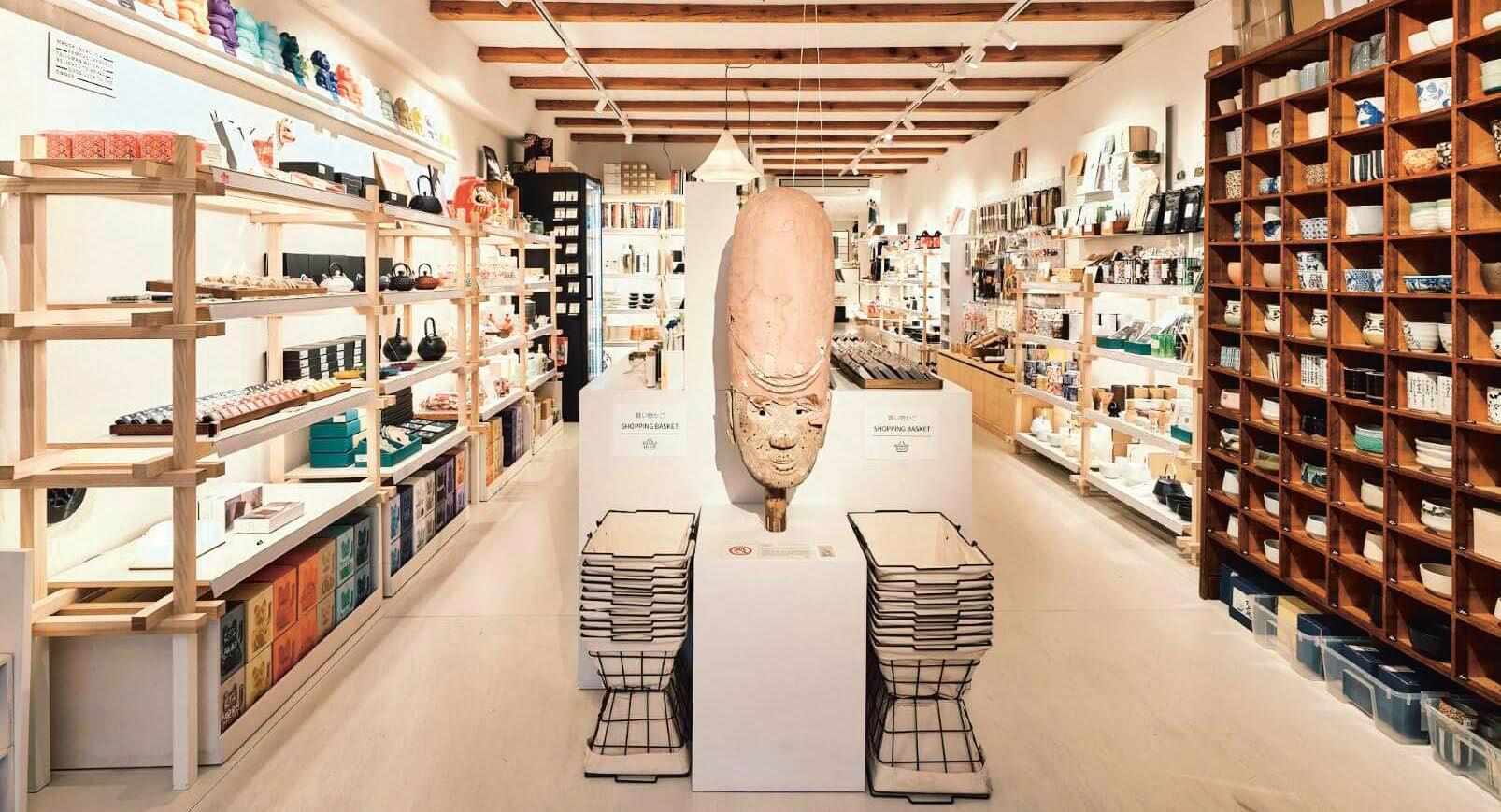
Rebgasse 41 – saalhof1123.com
Zwischen Kunst, Handwerk und Design bewegen sich die Produkte in diesem Concept Store, der von einem ehemaligen Galeristen geführt wird. Hier findest du Schmuck, Taschen, Damenmode, Wohnaccessoires, Bücher und mehr – davon zahlreiche Unikate und handgemachte Kleinstauflagen.
The products in this concept store, run by a former gallery owner, range between art, craftwork, and design. You will find jewellery, bags, ladies’ fashion, interior design pieces, books and more here – including numerous unique pieces and handmade limited editions.
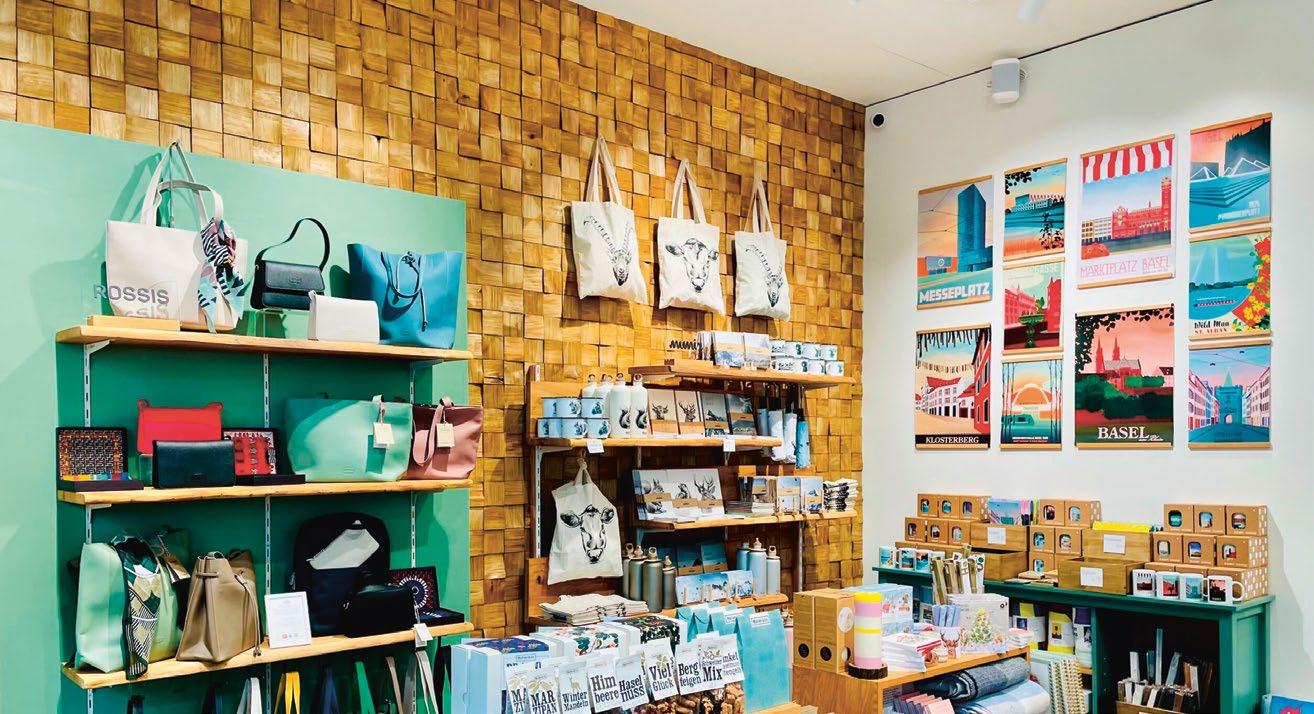
SHOP IM KUNSTMUSEUM BASEL
SAALHOF 1123
HŌMU
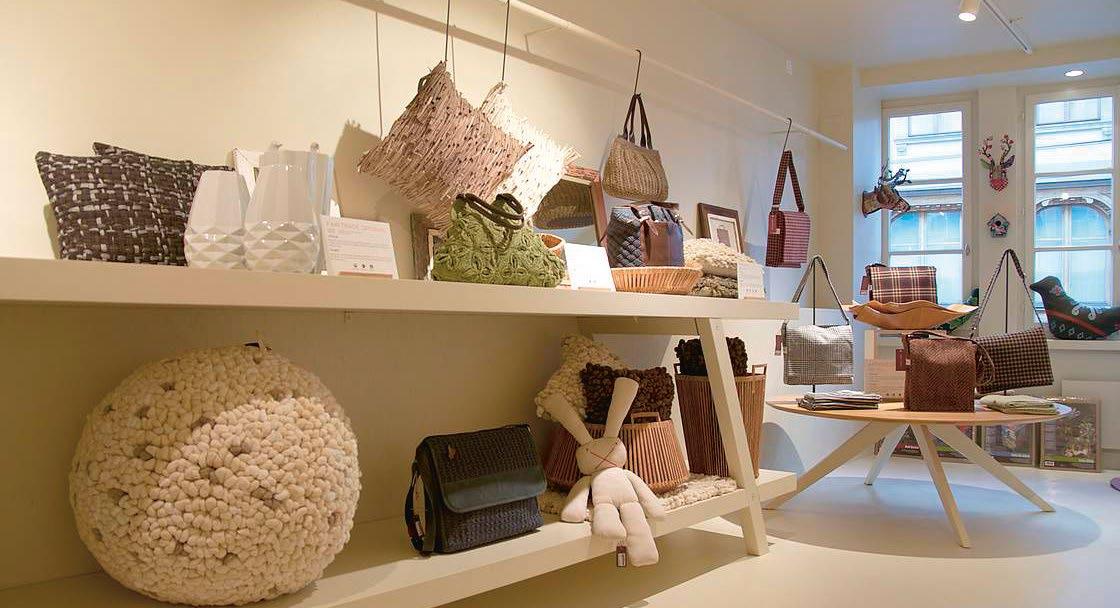
Ahornstrasse 7 – oddsandends.ch
Achtung: Liebe-auf-den-ersten-Blick-Gefahr! An den sanft restaurierten Kleinmöbeln, den Vintage-Wohnaccessoires, den nordischen Inspirationen und den unzähligen hübschen Geschenkideen kann man sich kaum sattsehen.
Danger warning: risk of love at first sight! We just can’t get enough of the carefully restored pieces of small furniture, the vintage interior design pieces, the Nordic inspirations, and the countless, cute gift ideas.

Schnabelgasse 3 – womenart-basel.com
Für alle, die das Besondere lieben: Hier bekommst du ausgesuchte, feine Dinge, sorgfältig designt und in kleiner Stückzahl produziert. Wunderbare Produkte, die dein Herz erfreuen, Lieblingsstücke für dich und deine Liebsten.
For anyone who loves the special things in life: what you will find here are fine, carefully selected objects, meticulously designed and produced in limited quantities. Wonderful products to delight the heart, destined to be favourite pieces for you and your loved ones.
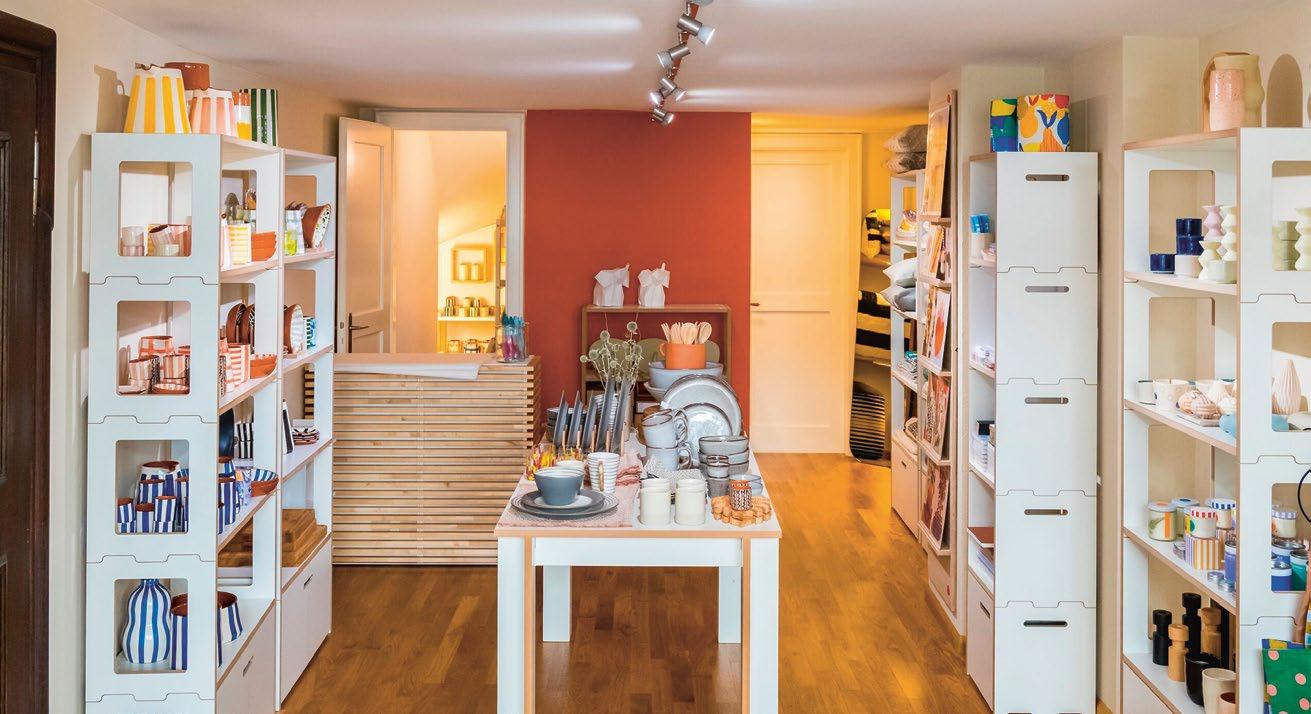
CHANGEMAKER
Marktgasse 16 – changemaker.ch
Die Yogamatte aus Naturkautschuk, das natürliche Badesalz, das Armband aus Kolumbien, der rezyklierbare Lautsprecher, die Aufbewahrungsdose aus Birkenrinde, der Pinguin aus Naturfasern; hier hat alles einen nachhaltigen und sozialen Hintergrund.
Yoga mats made from real rubber, natural bath salts, wristbands from Columbia, recyclable loudspeakers, storage boxes made of birch bark, a toy penguin made from natural materials; everything here has an ecological and socially fair background.
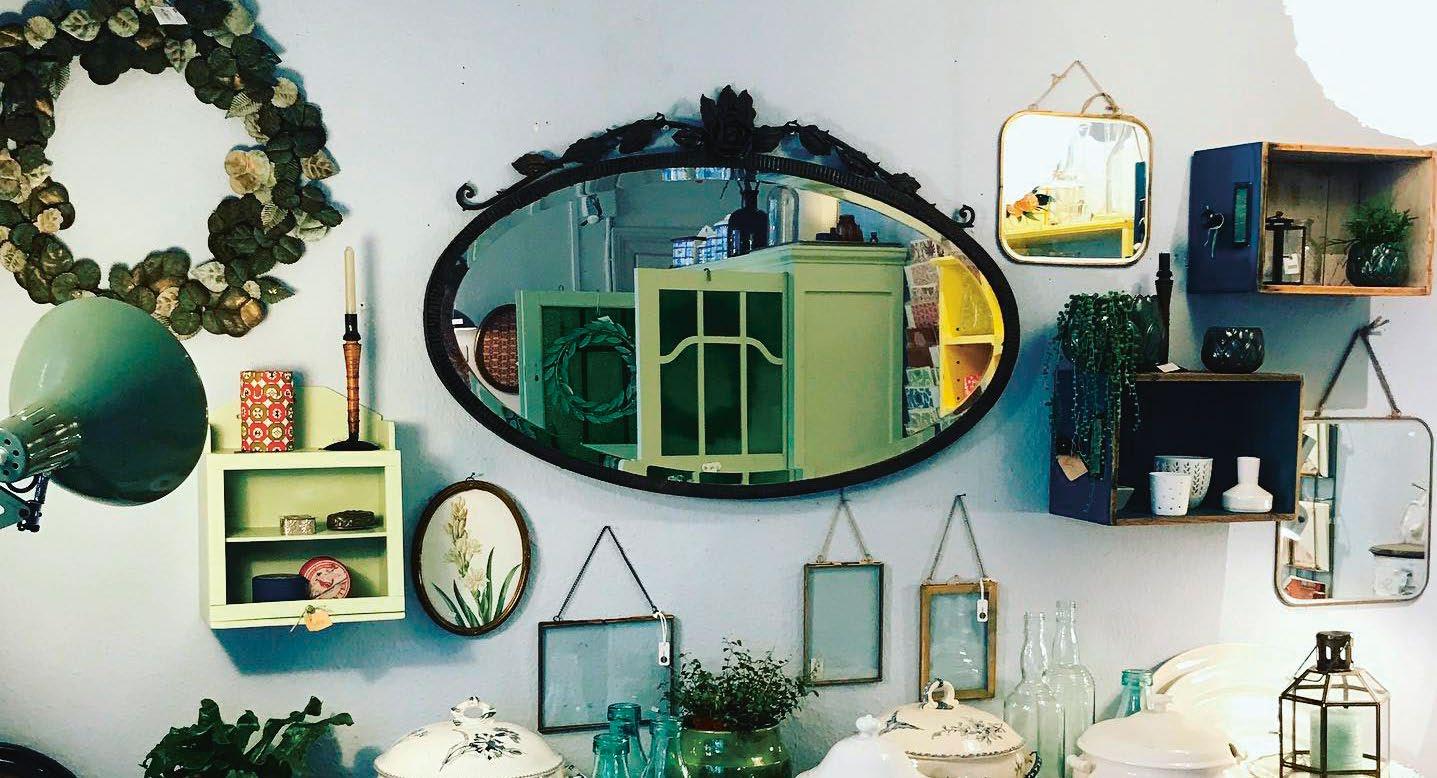
MUSEUMSSHOP DER FONDATION BEYELER
Baselstrasse 101, Riehen – fondationbeyeler.ch
Nicht nur Kunstpublikationen, sondern überdies Schönes und Handgemachtes aus aller Welt findet man hier: Vasen, Schmuck, Lampen, Gläser, Küchentücher und auch das eine oder andere signierte Ausstellungsplakat. Es lohnt sich, genügend Zeit einzuplanen!
It’s not just art publications you’ll find here, but also beautiful handmade items from all over the world: vases, jewellery, lamps, glasses, tea towels; every now and then even a signed poster from an exhibition. It’s worth planning in enough time for a visit to the shop too!

Rosshofgasse 5 – boabestofall.com
Formschöne Accessoires, Geschirr, Teppiche und Kissen – alles nachhaltig und qualitativ hochwertig in Europa handgemacht; das ist BOA. Auf Portugiesisch bedeutet «boa» Gutes, Schönes, Angenehmes. Oder abgekürzt auf Englisch: best of all.
Beautifully designed accessories, tableware, carpets, and cushions – all sustainably produced and manufactured to the highest quality in Europe; that is BOA. In Portuguese, “boa” means, good, beautiful, pleasant. Or to put it simply in English: the best of all.
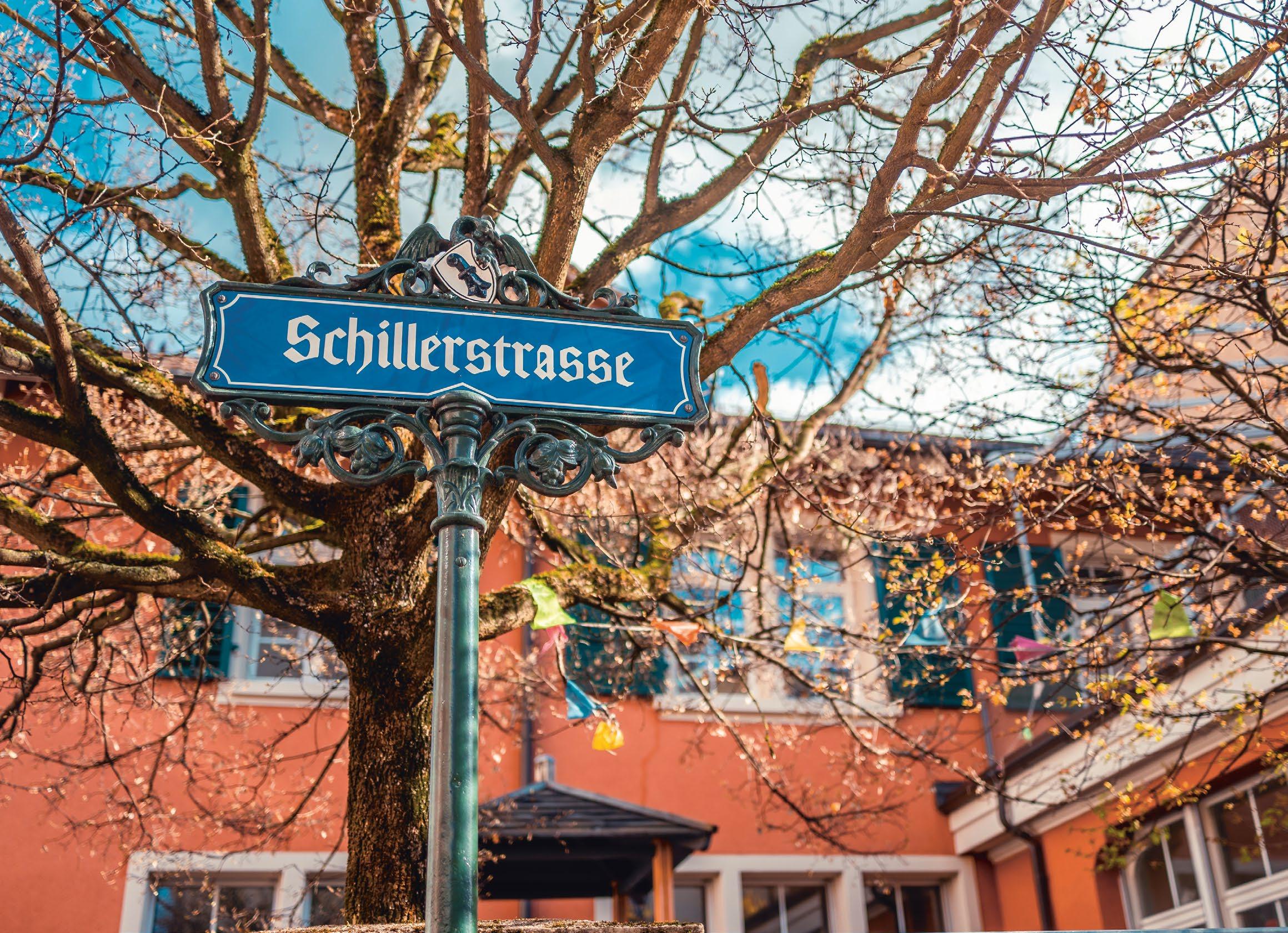
BASLER GESCHICHTE
VERPACKT IN STRASSENNAMEN
Lokalpatriotismus, Nationalstolz, Weltkultur. Die Strassennamen von Basel sind gespickt mit spannenden Anekdoten zur Basler Geschichte und bedeutenden Persönlichkeiten. Ein Spaziergang durch die Stadt gleicht einer Zeitreise durch Jahrhunderte von bewegenden Ereignissen.
Wer sich mit der Geschichte Basels auseinandersetzen möchte, zieht am besten ein paar bequeme Turnschuhe an und unternimmt einen Spaziergang durch die Stadt. Seit 2017 enthalten sämtliche Strassenschilder Erklärungen zur Namensgebung der rund 1000 Basler Strassen. Ein immenser Rechercheaufwand, an dem auch der Basler Lokalhistoriker André Salvisberg massgeblich beteiligt war. Er ist ein wandelndes Basler Lexikon und begleitet meinen Stadtspaziergang mit spannenden Anekdoten.
Die Stadt dehnt sich aus Bis zu den beschilderten, mit Erklärungen versehenen Strassennamen war es ein weiter Weg. Als mittelalterliche Stadt war auch Basel lange Zeit von einer Stadtmauer umgeben. Das dahinter umschlossene Strassennetz war typischerweise verwinkelt, schmal, kurvenreich – wirr. Die Strassen hatten zwar auch schon Namen, diese reduzierten sich jedoch auf inoffizielle Bezeichnungen, welche ihnen die Bevölkerung gegeben hat. Als um 1860 die Stadt aus allen Nähten zu platzen drohte und die mittlerweile rund 50'000 Einwohner an Platzmangel, unhaltbaren hygienischen Zuständen sowie Dichtestress litten, beschloss die Regierung, die Stadtmauern abzubrechen und den Stadtraum auszudehnen. In diesem Zuge wurde erstmals eine Kommission eingesetzt, welche die Stadt neu planen – und mit offiziellen Strassennamen versehen sollte. Heute ist dafür die Nomenklaturkommission verantwortlich, zu deren Mitglieder André Salvisberg gehört.
Text & Bilder: Nicola Mathis
«Jeder
Strassenname
kann
Geschichte
bieten. Vielleicht nicht immer selbst, aber im Verbund mit anderen Strassennamen.»
André Salvisberg, Lokalhistoriker
«Die älteste, urkundlich erwähnte Basler Strasse ist übrigens die Eisengasse», erzählt Salvisberg gleich zu Beginn unseres Stadtspaziergangs mit ansteckender Begeisterung. Dieser Eintrag reicht bis ins 12. Jahrhundert zurück. Überhaupt haben fast alle Strassen, die wir heute kennen, ihren Namen behalten. Eine der seltenen Ausnahmen bildet die heutige General Guisan-Strasse. «Diese hiess früher Militärstrasse und stammte aus einer Zeit von überbordendem Nationalismus, als die Armee um 1900 noch in der Mitte der Gesellschaft verankert war», klärt mich Salvisberg auf. «Mit General Guisan, der als Oberbefehlshaber die Schweiz durch den Zweiten Weltkrieg führte und zum Nationalhelden wurde, erhielt die Militärstrasse einen neuen würdigen Namensgeber.»
Jeder Strassenname ein Stück Geschichtsunterricht
Hat man erstmal damit angefangen, die Kurzerklärungen auf den Strassenschildern zu studieren, kann man gar nicht mehr damit aufhören. Die Basler Strassennamen orientieren sich an geografischen Merkmalen, an Auffälligkeiten in der Natur, sind Zeugnisse von spürbarem Lokalpatriotismus, viel Nationalstolz und einer Prise Weltkultur – und sie sind nie zufällig gewählt. Der Bundesplatz wurde 1901 benannt und ist der 400-jährigen Zugehörigkeit Basels zur Eidgenossenschaft gewidmet, der Wielandplatz ehrt eine bedeutende Basler Juristen-, Politiker- und Offiziersfamilie und der Fischerweg gibt einen Hinweis auf die nahe gelegenen Fischfangplätze am Rhein. Der Picassoplatz würdigt den weltberühmten Maler, der eine besondere Rolle in der Geschichte der Kulturhauptstadt Basel spielte und dem Kunstmuseum Basel vier seiner Werke schenkte. Die Mittlere Strasse bezeichnet hingegen schlicht und einfach die mittlere von drei ursprünglichen Zugangsstrassen, die in die historische Innenstadt führten: Auf der Achse zwischen Spalentor und St. Johanns-Tor liegt die Mittlere Strasse nämlich in der Mitte.

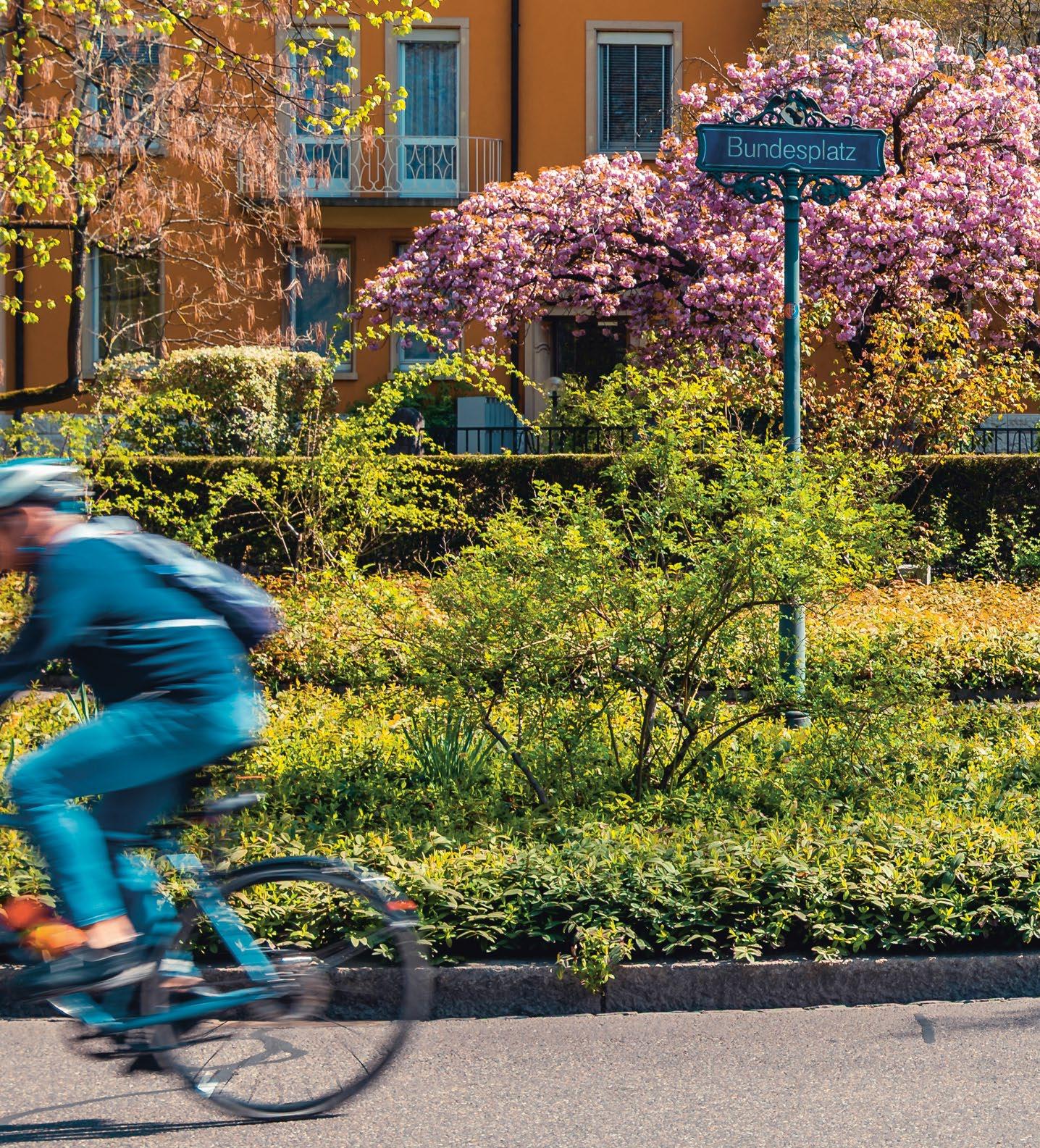
«Jeder Strassenname kann Geschichte bieten», schwärmt Salvisberg und fügt an, «vielleicht nicht immer selbst, aber im Verbund mit anderen Strassennamen.» Wir befinden uns im Gundeli und blicken auf das historische Strassenschild der Schillerstrasse. Friedrich Schiller – ein Basler? «Nein, aber», holt Salvisberg aus, «die Schillerstrasse ist Teil eines Ensembles von Strassennamen. Die benachbarte Tellstrasse sowie der Tellplatz sind nach dem Schweizer Nationalhelden Wilhelm Tell benannt. Friedrich Schiller hat wiederum das gleichnamige Drama geschrieben, Ludwig Uhland –Namensgeber der Uhlandstrasse – widmete Tell eine Ballade.» Zusammen bilden sie einen in sich geschlossenen Mikroverbund an verwandten Strassennamen, welche allesamt den Helden mit der Armbrust ehren und Basels Nationalstolz zum Ausdruck bringen.
Beim genauen Hinschauen offenbart jedes Basler Stadtquartier solch spannende Geschichten. Das Iselin-Quartier umfasst einen Verbund von elsässischen Strassennamen (Colmarerstrasse, Hegenheimerstrasse, Strassburgerallee), die Altstadtgassen verweisen auf alte Berufe und Zunfttätigkeiten (Gerbergasse, Schneidergasse, Hutgasse), das St. Johann greift seine Geschichte als bedeutendes Industriequartier auf und fasziniert mit energiegeladenen Strassennamen (Wattstrasse, Lichtstrasse, Gasstrasse).
Für ein Gefühl von Zuhause
Am Ende meines Stadtspaziergangs habe ich ein völlig neues Bild der Stadt im Kopf. Zweifelsohne: Wer sich mit Basels Strassennamen befasst, versteht die Stadt besser. Neben den offensichtlichen Sehenswürdigkeiten wie dem Münster oder dem Rhein sind es ebenso die kleinen Dinge des Strassenraums, die für Freude sorgen und die Stadt so spannend machen. Kleine Dinge wie die Tatsache, dass das Strassenschild zum Elftausendjungfern-Gässlein extra so weit oben hängt, damit es aufgrund seines besonderen Namens nicht mehr gestohlen werden kann. Kleine Dinge, wie die Überraschung, dass es zwar keine Frühlingsgasse gibt, aber eine Lenzgasse, welche die Herbstgasse, die Sommergasse und die Wintergasse perfekt komplettiert. Und kleine Dinge, wie die alten, schönen, nostalgischen Basler Strassenschilder aus Gusseisen, welche an verschiedenen Ecken der Stadt aufgrund ihrer Seltenheit und Einzigartigkeit herausstechen und dir sagen: Hier bist du in Basel, hier bist du zu Hause.
Du möchtest mehr zu den Basler Strassennamen wissen? Im Buch «Die Basler Strassennamen» von André Salvisberg wird dir geholfen –erschienen im Christoph Merian Verlag. Ausserdem findest du alle Erklärungen der Basler Strassennamen auf dem Digitalportal des Kantons Basel-Stadt.
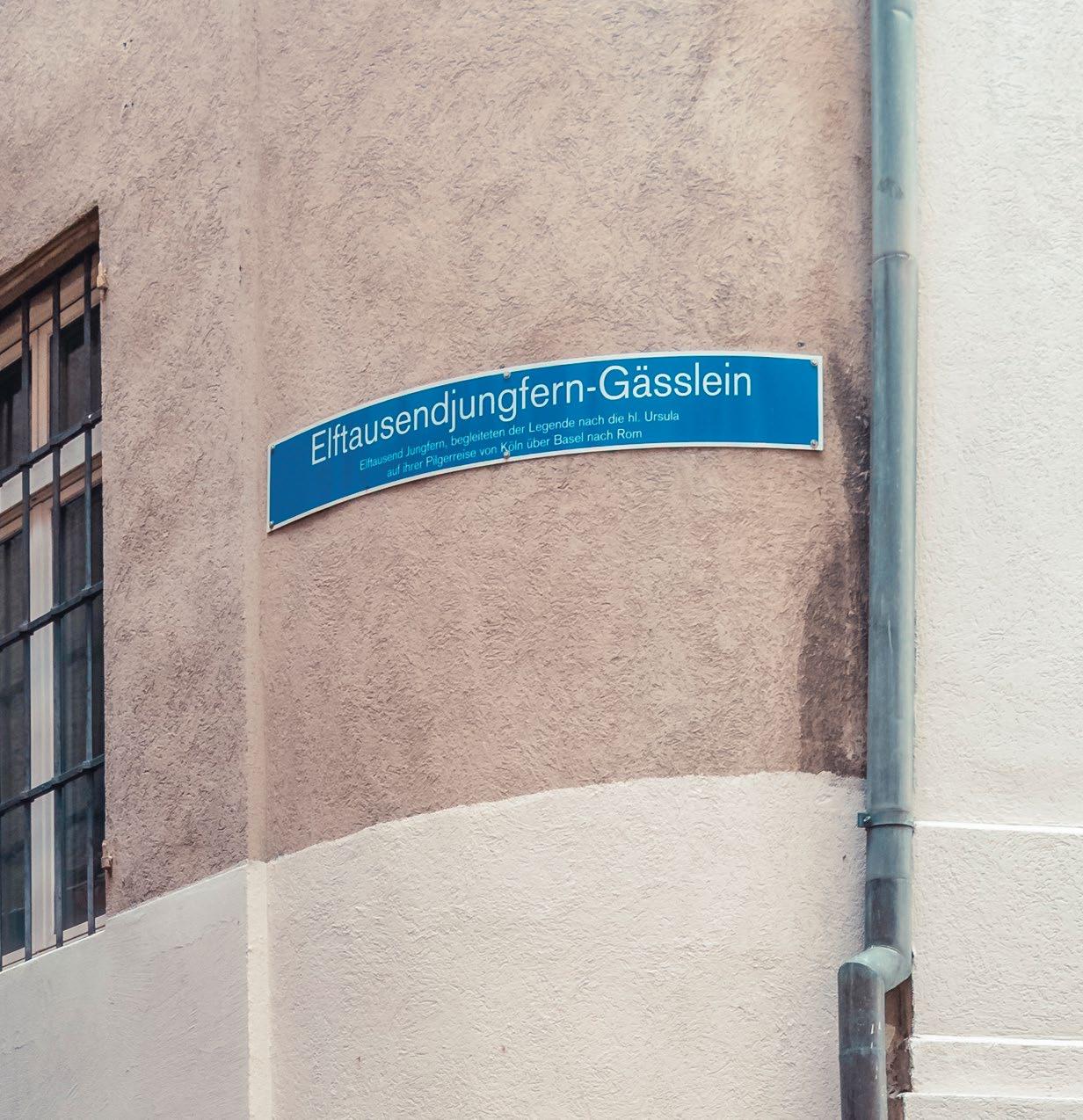
The city expands

BASEL’S HISTORY PACKED INTO STREET NAMES
Local patriotism, national pride, global culture. Basel’s street names are riddled with fascinating anecdotes from the city’s history and about its prominent public figures. Taking a stroll through the city can transform into a journey through time and centuries of stirring events.
There is no better way to delve into Basel’s history than to pull on a pair of comfortable gym shoes and take a walk through the city. Since 2017, the road name signs of around a thousand streets in Basel, have included short explanations of where the name came from. This required a huge amount of research, in which Basel’s local historian André Salvisberg played a leading role. He is a walking encyclopaedia on everything to do with Basel, and he accompanies my walk through the city with fascinating anecdotes.
It was a long road travelled till the city was signposted with street signs bearing not just the names of the roads, but an explanation of them too. Like most medieval cities, Basel was, for a long time, enclosed by a city wall. The network of roads and alleys it protected was typically twisted, narrow, full of bends – like a maze. Although the roadways already had names, they were not official, but rather popular designations bestowed upon them by the general populace. Then, around 1860, when the city was bursting at the seams and its inhabitants, who now numbered around 50,000 were suffering from a shortage of space, intolerable hygienic conditions and the stress of overpopulation, the city council decided to demolish the city walls and expand the perimeter of the city. As part of this process, for the very first time, a commission was established with the purpose of planning the city anew – and with establishing official names for the roads. Nowadays this responsibility falls to the Nomenclature Commission, of which André Salvisberg is a member.
“By the way, the earliest documented road name in Basel is the Eisengasse (Iron Alley)," is the first thing Salvisberg tells me with infectious enthusiasm, right at the start of our tour of the city. The record of its name dates back to the 12th century. Generally speaking, almost all the roads as we know them today have retained their old names. One of the few exceptions is the road now known as General Guisan Street. “It used to be called Militärstrasse (Military Street) a name given during an era of excessive nationalism, around nineteen-hundred, when the army was still thoroughly embedded in the very heart of society.” is how Salvisberg explains it to me. “General Guisan, was commander-in-chief of the army, guided Switzerland through the Second World War and became a national hero, so Military Street was renamed after this worthy new namesake.”

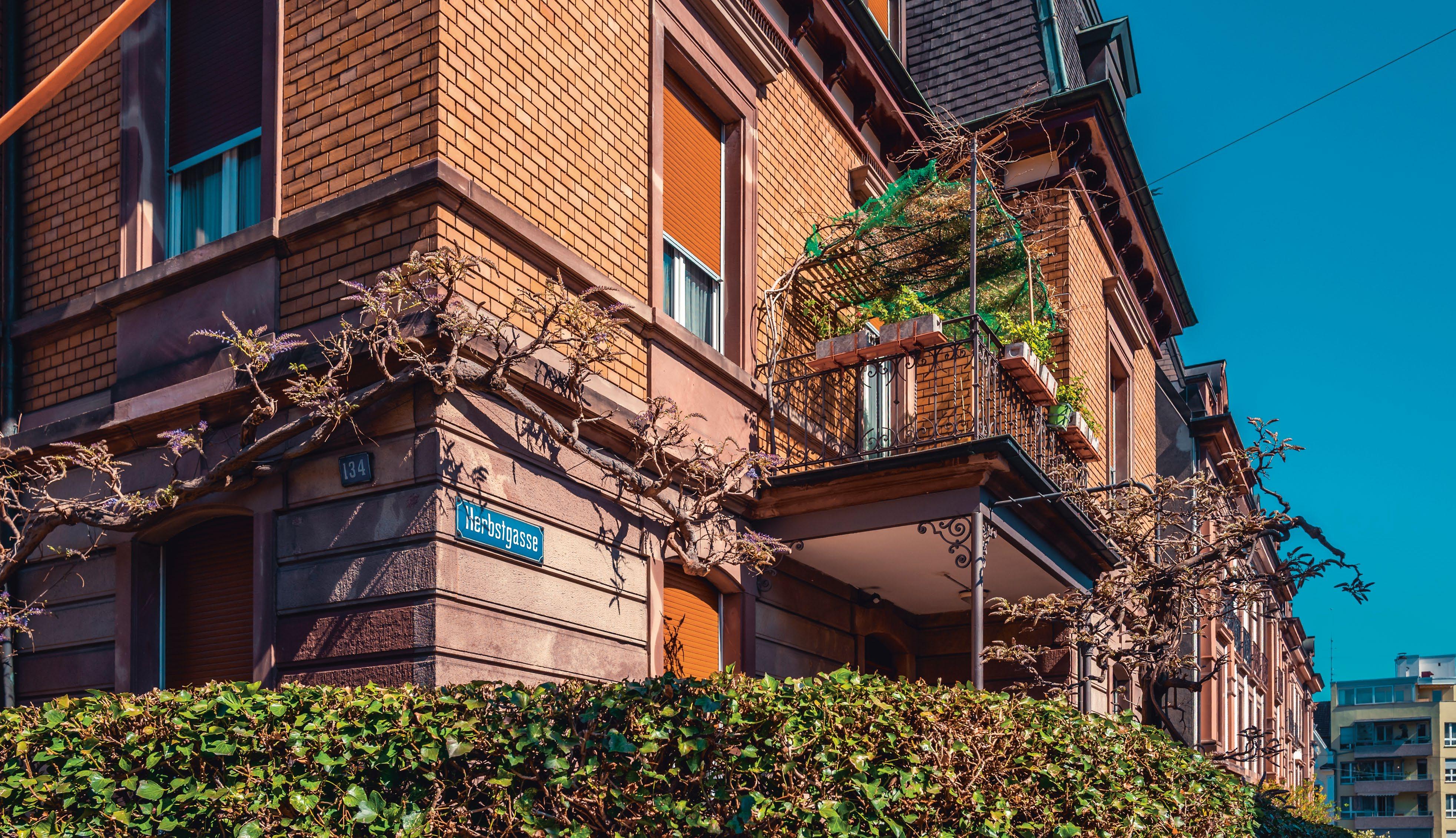
Each road name is a history lesson in itself
Once you start paying attention to the brief explanations below the names on the road signs, you will not be able to stop. Basel’s road names are taken from geographical features, striking places in the natural landscape, are a testimony to a tangible strain of local patriotism, a great deal of national pride and a dash of global culture – and none of them are random choices. The Bundesplatz (Confederation Square) was named in 1901 to commemorate the 400-year anniversary of Basel joining the Swiss Confederation, the Wielandplatz (Wieland Square) was named in honour of an influential Basel family of lawyers, politicians, and army officers and the Fischerweg (fisherman’s path) was the way to the fishing spots just down below along the Rhine. The Picassoplatz (Picasso Square) was named as a tribute to the world-famous painter, who played a significant role in Basel’s development as a cultural capital and who donated four of his paintings to the city’s art museum, the Kunstmuseum Basel. The Mittlere Strasse (Middle Street) on the other hand, refers quite simply to the central road of the three original thoroughfares leading into the historical centre of the city: because the Mittlere Strasse transects the axis between the Spalentor (Palisade Gate) and the St. Johanns Tor (St. John’s Gate) at its midpoint.
“Each road name offers some kind of historical information;” Salvisberg explains enthusiastically and then adds: “Perhaps not always in and of itself, but in conjunction with other road names.” We are now in the Gundeldingen quarter, the “Gundeli” and are perusing the historical road sign for the Schillerstrasse. Friedrich Schiller – was he from Basel? “No, but," Salvisberg explains, "the Schillerstrasse part of an ensemble of street names. The next road and neighbouring square, the Tellstrasse and the Tellplatz are named after the Swiss national hero William Tell. Friedrich Schiller wrote a play about Tell while Ludwig Uhland – after whom the Uhlandstrasse was named – dedicated a ballad to Tell.” Together they form a self-contained mini-network of interrelated road names, each of them honouring the hero with the crossbow and serving as an expression of Basel’s pride in Switzerland as a nation.
If you look carefully, there are equally fascinating stories to be found in every quarter of Basel. The Iselin quarter includes a network of streets named after places over the border in the Alsace, e.g. Colmar, Strasbourg and Hegenheim (Colmarerstrasse, Hegenheimerstrasse, Strassburgerallee); the alleyways in the old town refer to ancient crafts and the trade guilds that operated there, Gerbergasse (tanneries), Schneidergasse (tailors), Hutgasse (milliners); while the St. Johann quarter harks back to its past as an important manufacturing area with fascinating energy-packed names such as Watt, light and gas (Wattstrasse, Lichtstrasse, Gasstrasse).
Feel at home
At the end of my tour through Basel I have a completely new image of the city in my head. No doubt about it: if you spend some time studying Basel’s road names, you will understand much more about the city. In addition to the most obvious landmarks, like the cathedral and the Rhine, there are also plenty of smaller details to be found in the streets that are a pleasure to discover and make the town so fascinating. Small details, such as the fact that the road sign for the Elftausendjungfern-Gässlein (St. Ursula’s ‘eleven thousand holy virgins’ alleyway is deliberately hung so high, to save it from being stolen again, because it is such an unusual name for a road.
Other surprising details, for example that there is no road named for Spring, but that the quartet of seasons, autumn, winter, and summer (Herbstgasse, Sommergasse, and Wintergasse) are perfectly rounded off with the Lenzgasse, Lenz being an old poetical name for springtide. And little things like the nostalgic, beautiful old road signs wrought in cast iron, which will catch your eye in various corners of the city, thanks to their rarity and unique character, telling you: you’re in Basel here, you’re at home here.

You want to learn more about Basel’s road names?
You will find what you are looking for in André Salvisberg’s book “Die Basler Strassennamen”– published in German by the Christoph Merian Publishing House. You can also find the explanations of the city’s street names on the digital portal of Canton Basel-Stadt (also in German).
Local historian André Salvisberg © Kathrin Schulthess / Christoph Merian Stiftung
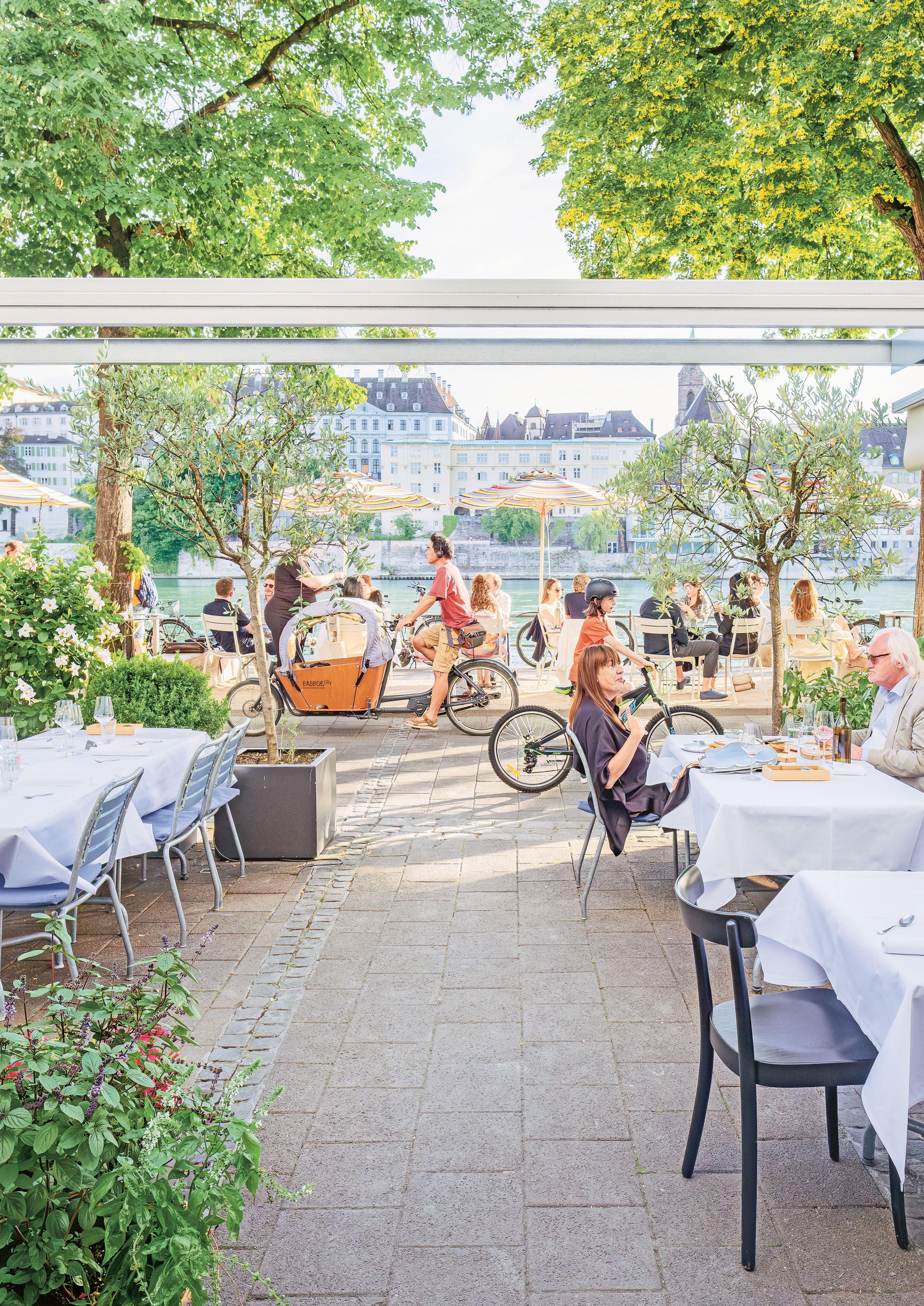
CHEERS, PROST & CIN CIN! BARS, DIE GLÜCKLICH MACHEN
Blick auf den Rhein, flackernder Kamin, Promi-Faktor und hervorragende Drinks: Die Basler Barszene ist bunt und wunderbar. Hier ein paar ausgewählte Ideen für deinen fröhlichen Feierabend – oder die wilde Nacht.

Steinenberg 7 – restaurant-kunsthalle.ch
Sie gehört offiziell zu den besten Bars der Schweiz und überdies zum Basler Kulturgut: Die Bar der Kunsthalle ist draussen unter den Kastanien und drinnen unterm Kronleuchter gleichermassen beliebt, so dass es zum Feierabenddrink auch mal nur noch Stehplätze gibt – dafür sieht man hin und wieder ein prominentes Gesicht.
The Campari Bar is officially recognised as one of the best bars in Switzerland and is also part of Basel’s cultural heritage: the bar, which belongs to the Kunsthalle, is just as popular outside, under the shade of the chestnut trees as it is inside lit by chandeliers, so popular that sometimes if you go there for a drink after work you have to stand – made up for by the fact that you may well catch a glimpse of a prominent face.
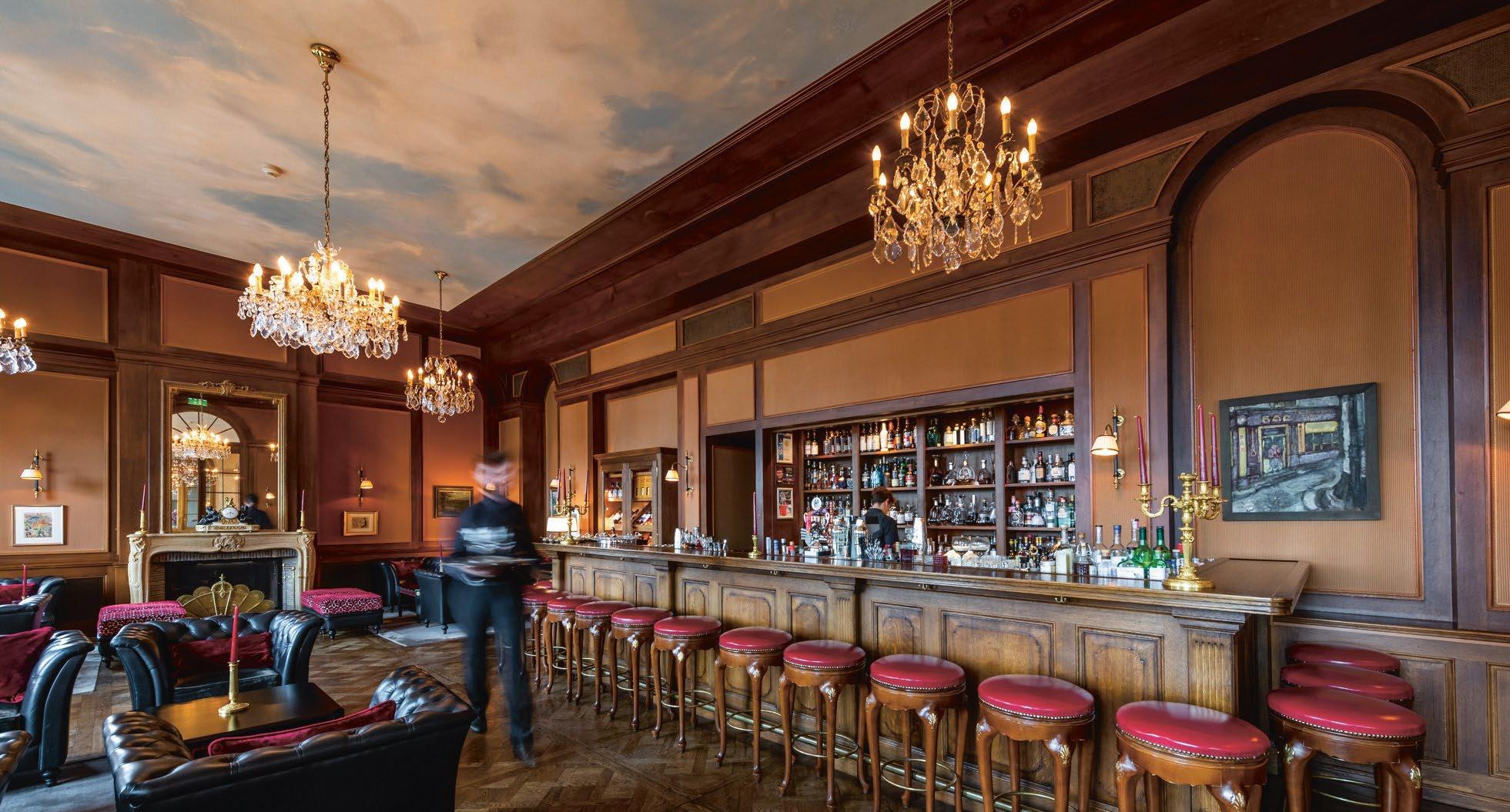
Rheingasse 19 – consumbasel.ch
Nicht nur das stadtbekannte Volta Bräu, hausgemachte Spritzer und eine Karte mit über 100 verschiedenen Weinen erwarten dich in dieser gemütlichen Weinbar, sondern überdies eine Käse- und Salami-Theke, von der dir reichhaltige Plättli serviert werden. Kein Wunder, wird der Apéro hier unverhofft auch mal bis zum Absacker verlängert.
It is not just the city’s famous brew, the Volta Bräu, homemade spritzer and a wine list with over 100 wines which await you in this relaxed wine bar, but also a cheese and salami buffet from which you will be served hearty platters. Small wonder when the aperitif you had been planning to drink here is unexpectedly prolonged until you find yourself sipping on a nightcap.
Kasernen-Hauptbau / Südturm, 4. Stock – amber-bar.ch
Kasernen-Hauptbau, Südturm, 4. Stock: Hier findest du einen der angesagtesten Orte der Stadt. Die stimmungsvolle Bar wurde mit viel Gespür für ausgefallene Looks gestaltet. Die Dachterrasse mit Aussicht auf den Rhein und die Stadt ist einmalig, die Drinks sind es auch – lass dich vom Bartender mit einer Eigenkreation überraschen!
Main building of the old barracks, the Kaserne, south tower, 4th floor: this is where you’ll find one of the most popular spots in town. The atmospheric bar was designed with a strong flair for an unorthodox look. The roof terrace which overlooks the Rhine and the city is unparalleled, as are the drinks – get the bartenders to surprise you with one of their own creations!
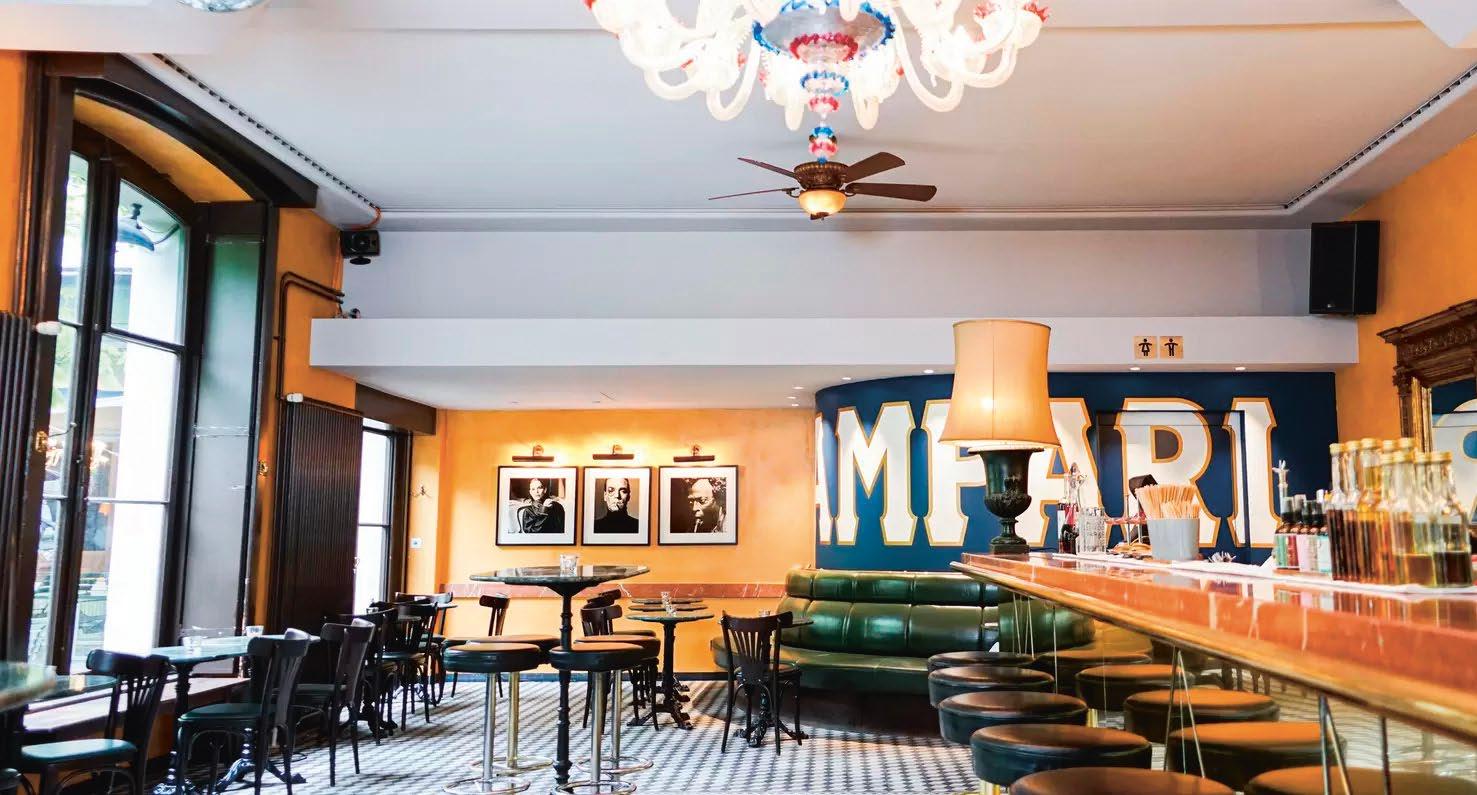
Blumenrain 8 – lestroisrois.com
Das knisternde Feuer im Kamin, die opulenten roten Vorhänge, der Blick auf den Rhein, die Kristallleuchter an der Decke und das Klackern der Eiswürfel im Glas; im Les Trois Rois fühlst du dich ganz und gar königlich. Dafür sorgen auch die raffiniert komponierten Drinks und die exquisiten Häppchen aus der Küche.
With a fire crackling in the fireplace, opulent red curtains, a view of the Rhine, crystal chandeliers suspended from the ceiling, and ice cubes clinking in your glass: at Les Trois Rois you will feel completely and utterly regal. The artfully composed drinks and exquisite appetizers from the restaurant kitchen contribute to that feeling.
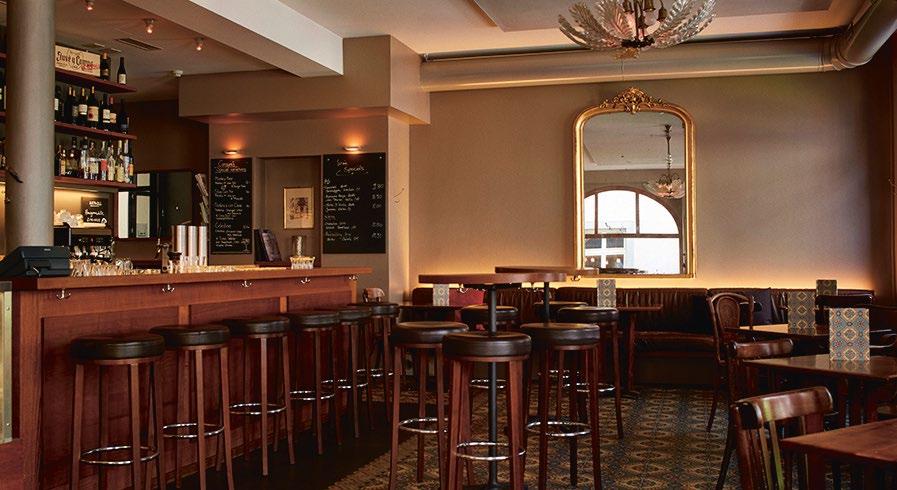
AMBER BAR
BAR LES TROIS ROIS
CAMPARI BAR
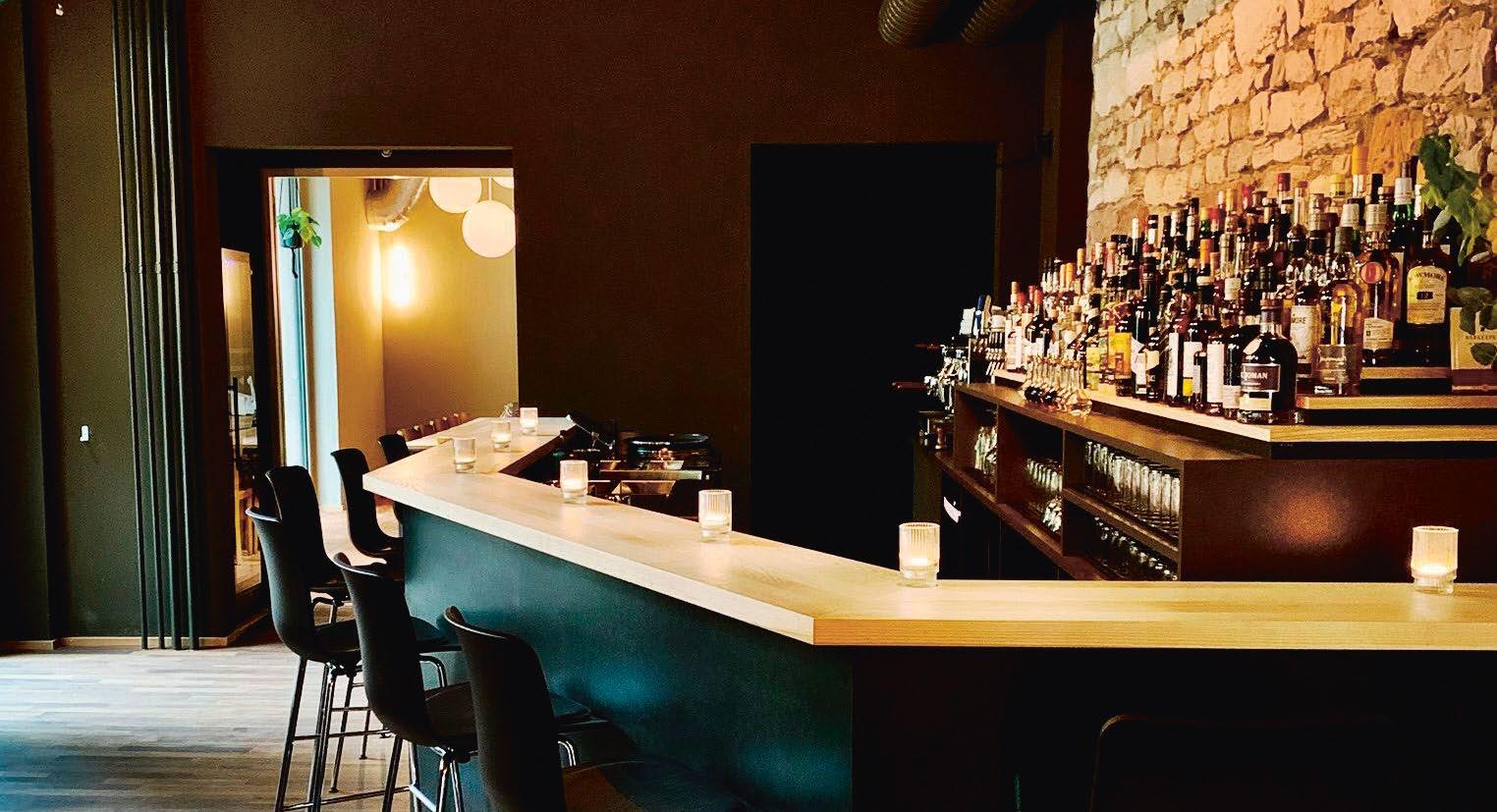
Dornacherstrasse 192 / Gundeldingerfeld – werkacht.ch
In der Halle einer ehemaligen Maschinenfabrik vermischen sich Industrie-Charme und Gemütlichkeit. Die imposante Bar bietet hausgemachte Infusionen, Sirups und selbst kreierte Cocktails, auch das alkoholfreie Sortiment wird hier nicht vernachlässigt. Hinter dem Tresen stehen die besten Barkeeper, um dir den Feierabend zu verzaubern.
Industrial charm and a comfortable ambience are combined in the lofty hall of what was once an engineering works. The imposing bar offers a range of in-house infusions, syrups and cocktails, and the alcohol-free range is not neglected here either. The best barkeepers are lined up behind the bar to make your evening magical.
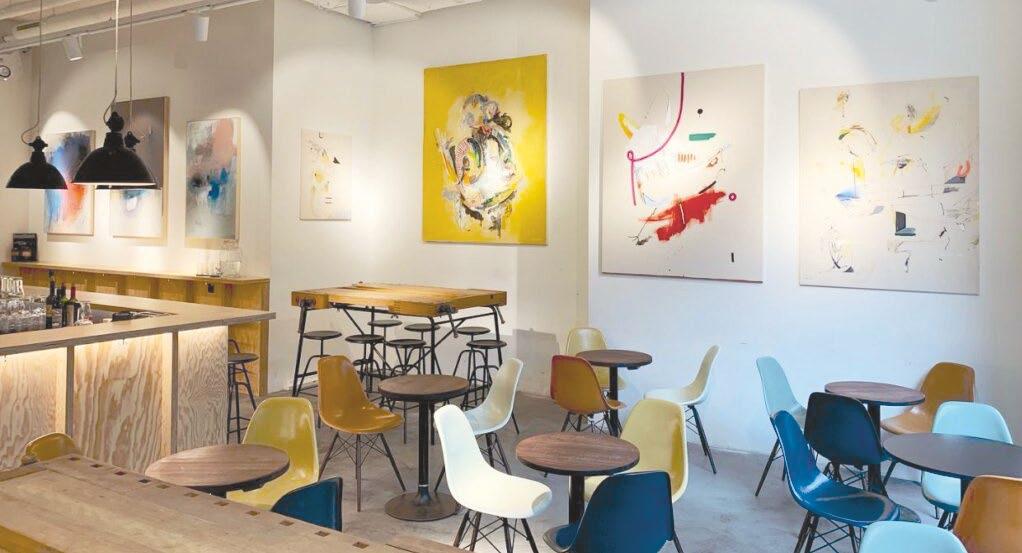
Spalenberg 53 – spale-bar.ch
Wer schon am Mittag gerne mal ein Glas Wein, einen Moscato oder Prosecco trinkt, ist hier genau richtig: Auf dem Gipfel des Spalenbergs wird in dieser Bar im Jugendstil-Look ganztägig die Apéro-Kultur zelebriert. Für den kleinen Hunger gibt es Käse, Oliven, Aufschnitt und Brot auf schönen Holzplatten serviert.
If you enjoy sipping on a glass of wine, a Moscato or a prosecco at lunchtime, this is just the place for you: at the top of the Spalenberg, this bar, with its Art Nouveau décor, celebrates a culture of all-day aperitifs. If you are feeling peckish, you can order cheese, olives, cold cuts and bread, all served on beautiful wooden platters.
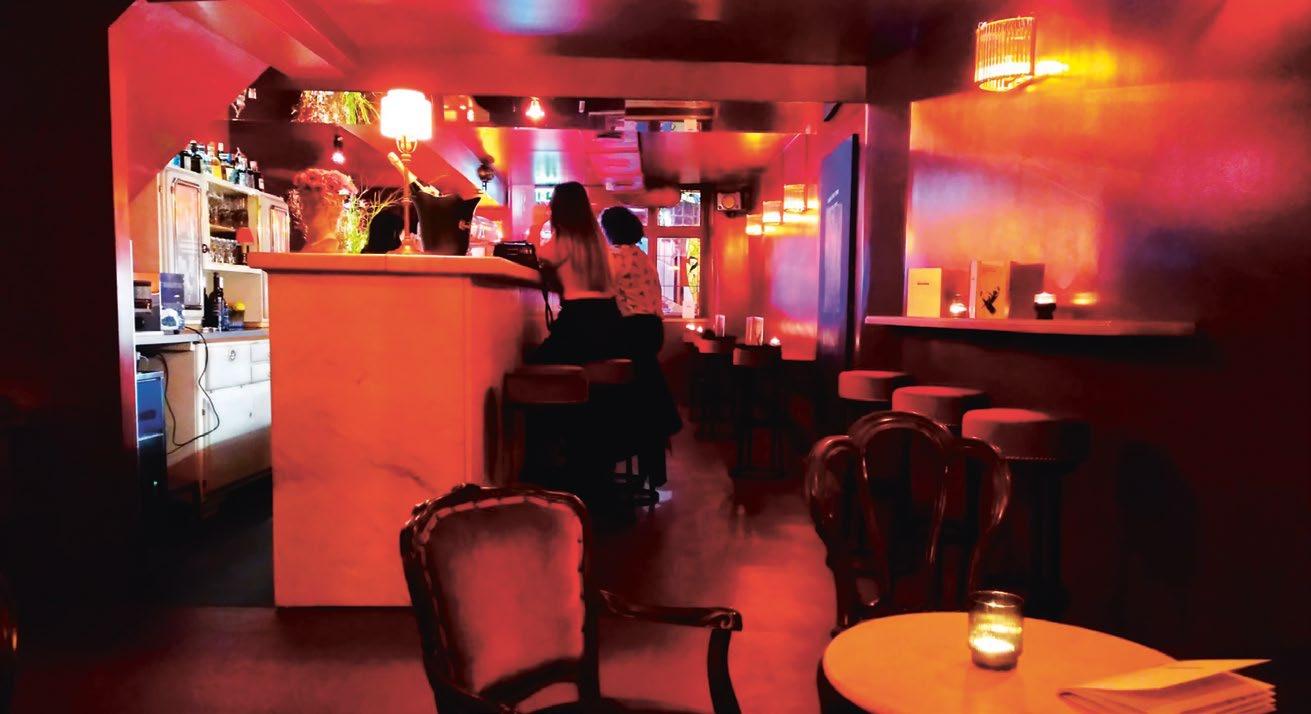
Clarastrasse 11 – herzbasel.com
Es ist nicht schwer, hier einen über den Durst zu trinken, denn die Kreationen (und ihre Namen!) sind verführerisch. Mit der Stadtbrennerei im Hinterhof hat die Bar einen nahen Lieferanten, grundsätzlich wird hier mit möglichst vielen regionalen Zutaten gearbeitet. Die Kunst der Mixologie in sympathisch nachbarschaftlicher Atmosphäre – das ist Herz!
It is not hard to end up drinking one too many here, because the creations (and their names!) are so enticing. With the city distillery in its own backyard, the bar has an extremely local supplier and the cardinal rule here is to source as many of the ingredients as possible from the vicinity. The fine art of mixology in a friendly, neighbourly atmosphere – that’s the Herz!

Elisabethenstrasse 15 – latelierbasel.ch
Poke Bowls und Signature Drinks: Bei L’Atelier ist alles hausgemacht und frisch. Du sitzt am alten Werkbank, schaust auf die Elisabethenstrasse, wähnst dich zeitweise im New Yorker Soho und geniesst das charmante Ambiente bei einem Jamaican Mule, einem Basil Smash oder einer alkoholfreien Limonade mit Gurke und Pfefferminzblatt.
Poke bowls and signature drinks: at L’Atelier everything is produced in-house and fresh. You sit at an old workbench, look out at the Elisabethenstrasse, and it feels a bit like the Soho district of New York as you enjoy the charming atmosphere over a Jamaican mule, a basil smash or an alcohol-free lemonade with cucumber and mint leaf.
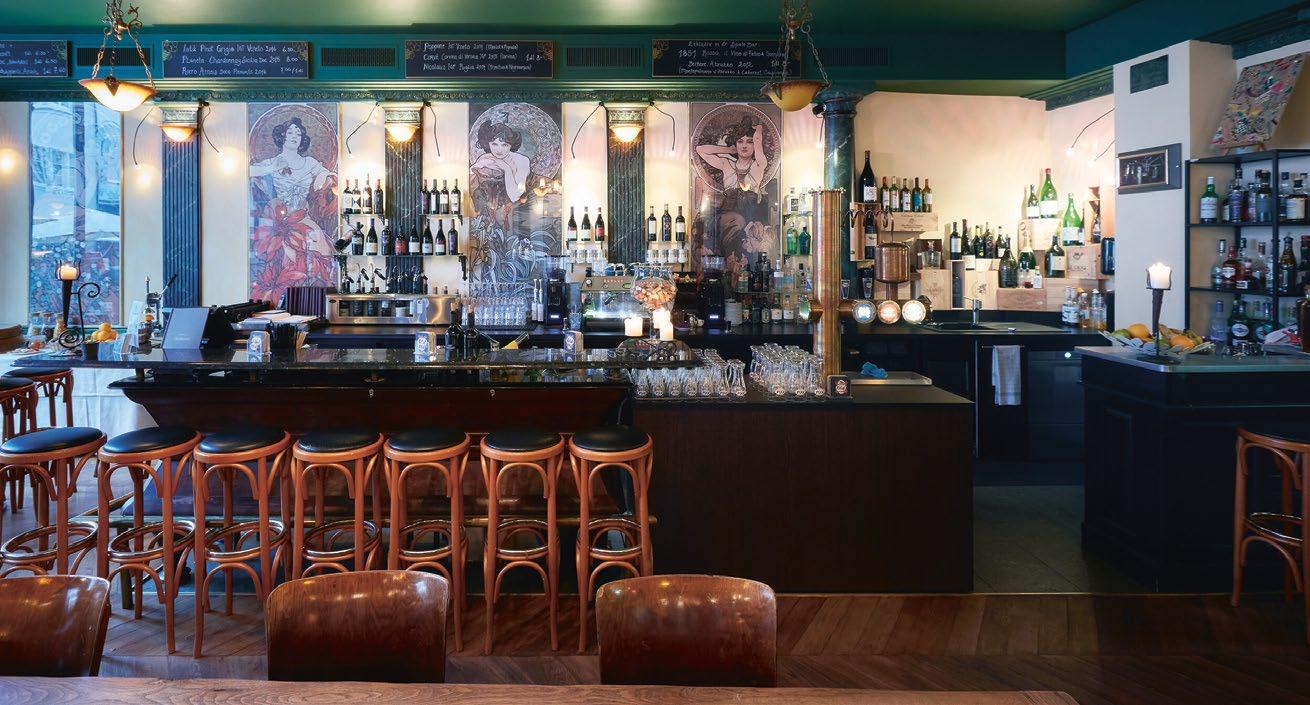
Ochsengasse 18 – derriere.ch
Wer es etwas verrucht mag, begibt sich ins Kleinbasler Rotlichtviertel und kehrt im ehemaligen Moulin Rouge ein. Das heisst heute Derrière und erinnert ein wenig an Paris. Zauberhaft-minimalistische Einrichtung, bequeme Sitzmöglichkeiten und herrliche Getränkekreationen erwarten dich. Einlass gibts nur auf Knopfdruck – grrrr!
If you like things a little more disreputable, you should head to Basel’s red-light district in Klein-Basel and stop off at what used to be the Moulin Rouge. It is now known as Derrière and has a touch of the Parisienne about it. Enchantingly minimalistic furnishings, comfy seating and splendidly imaginative drinks await you. You have to push the button if you wish to enter here – grrrr!
HERZ
L’ATELIER DERRIERE
WHERE BASEL VIBES
SEE YOU AT MQ

The MesseQuartier is a vibrant meeting place for everyone – with events, leisure activities, and gastronomy in a warm and welcoming atmosphere. A place for experiences, emotions and shared memories.
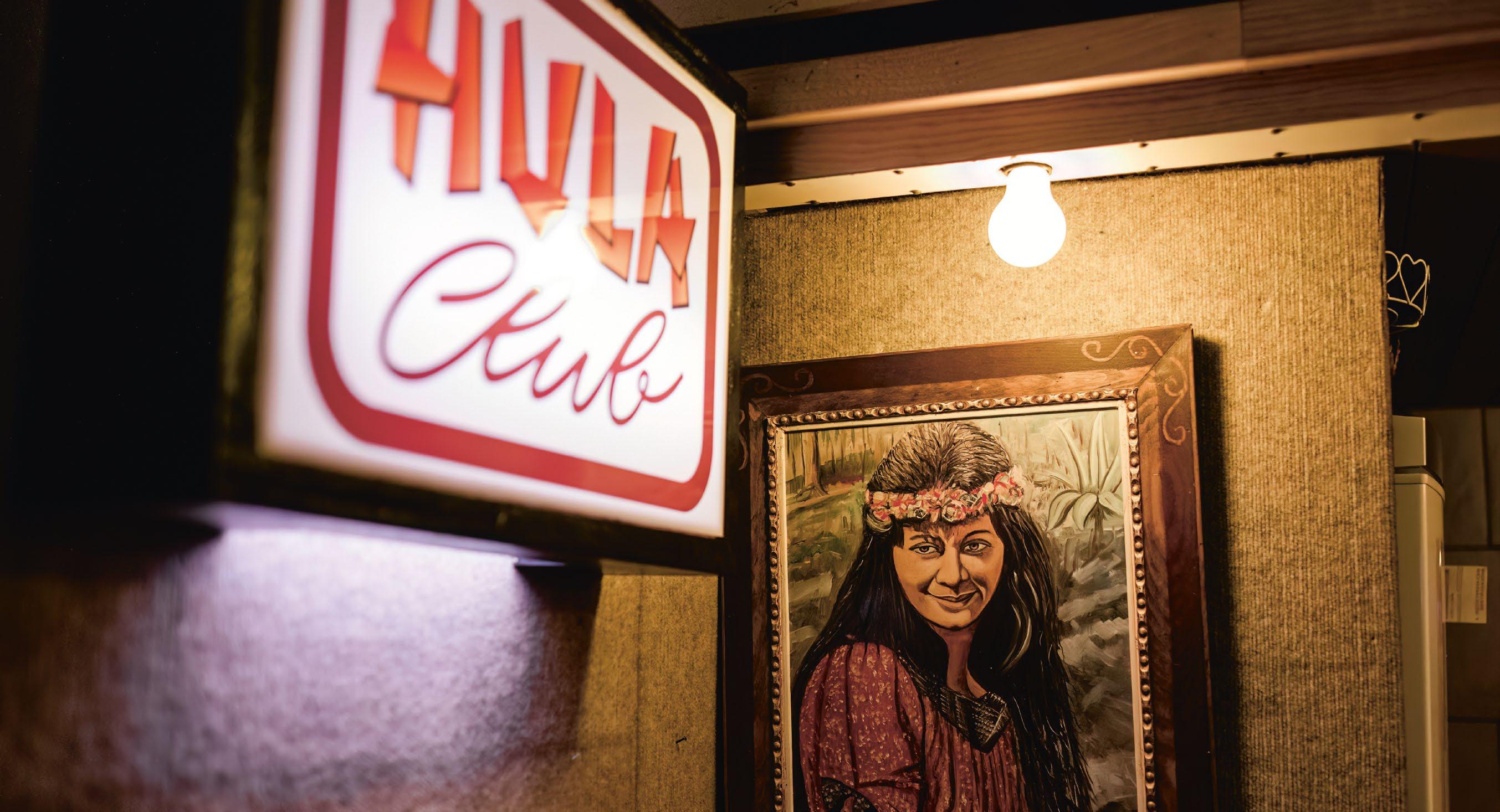
FRÜHER BANDKELLER, HEUTE KULT-LOCATION
DIENSTAGABENDS IM HULA CLUB
Der nostalgische Club in einem Hinterhof gilt als Kleinbasler Geheimtipp.
Doch wer ihn kennt, schwelgt in Musik und Gemütlichkeit.
Text & Bilder: Andreas Schwald
Little Chevy schüttelt sich den Petticoat zurecht. Dann lacht sie zu den Gästen im Publikum und greift zum Mikrofon. Die Basler Rockabilly-Sängerin, sonst von vier Männern ihrer Band begleitet, tritt an diesem Abend nur mit ihrem Gitarristen Markus Werner auf, «quasi mal was Neues», wie sie kurz darauf in der Begrüssung ins Publikum sagt. Das Lokal dieses Abends lädt zur Intimität ein: Little Chevy, die eigentlich Evelyne Péquignot heisst, tritt im Hula Club auf.
Ah, der Hula Club: Ewiger Geheimtipp an der Basler Sperrstrasse 97, ein Traumort, zumindest für die Eingeweihten, die ihn kennen, und ein grosses Fragezeichen für jene, die ins Stutzen kommen, wenn man vom gemütlichen, ganz in Hawaii-Stil gehaltenen Hinterhofkeller dieses grauen Kleinbasler Mehrfamilienhauses schwärmt.
Tatsächlich hat die Location Kult-Status. Einerseits Relikt eines verblassten Zeitgeists, wo man noch unschuldig vom Pazifik träumte und Fotos von traditionell gekleideten Einheimischen das Fernweh beflügelten. Andererseits lebt dort unten, zwischen Ketten aus Plastikblumen, fröhlicher Palmdeko und heute fast schon rührselig anmutendem Täfer die Seele jener Zeit weiter.
Erinnerungen ans Hawaii-Fieber der 1950er-Jahre
Das Lokal im Hinterhof gibt es seit 1979 – und zwar als Bandkeller der Basler «Hula Hawaiians». Die Gruppe ging aus den «Okinawa Hawaiians» hervor, die wiederum ihren Ursprung als «Basler Strizzi» hatten, eine Gruppe von drei Basler Jungs, die in den 1940er- und 1950er-Jahren vom Hawaii-Musikfieber gepackt wurden, ein Gefühl, das sie über Jahrzehnte nicht mehr loslassen sollte. Im Keller an der Sperrstrasse wurde geprobt, konzertiert, und es entwickelte sich ein harter Kern, der laufend weitere Gäste und Vereinsmitglieder anlockte.
Heute wird der Hula Club mit seiner Originaldekoration von neuen Leuten geführt. Seit Dezember 2024 ist der «Verein Hula Club» aktiv, der auf seiner Website das Wirken der Vorgänger würdigt. Dort steht: «Nach über 28 Jahren haben sich am 17. Dezember 2024 Esther Soland und Heinz Haag an einem festlichen Konzertabend im Hula Club verabschiedet.»
Heute sind es die Musik- und Kulturbegeisterten Pascal Biedermann, Bruno Kopp, Benjamin Rüdy, Christoph Peter und Thomas Keller, die das Weiterleben des Hula Clubs sichern. Am Dienstagabend – es ist im Hula Club unten immer Dienstagabend – steht Thomas Keller hinter der Bar und grüsst herzlich. Der Innenarchitekt ist stadt- oder zumindest szenebekannt, auch in der Gastronomie. Im Hula Club ist er für die Bar zuständig. Immer wieder klingelt es, dann wird hinter der Bar die Türe des grauen Mehrfamilienhauses aufgedrückt. Der Hula Club ist ein Mitgliederclub, und finanziert sich über deren Beiträge, wie Kellers Vorstandskollege Bruno Kopp sagt, der ebenfalls an der Bar steht, allerdings auf der anderen Seite, und gerade ein Formular für Neumitglieder improvisiert. «Mal schauen, wie viele heute kommen», sagt er und schmunzelt. Kopp rechnet mal mit 30 Leuten an diesem Abend. «Ja, das wäre ein gutlaufender Abend.»
Schummerlicht, Postkarten und ganz viel Atmosphäre
Das Schummerlicht der gelben und roten Glüh_ birnen an der Bar unterstreicht die Ausführungen vom Herzblut, das seit nunmehr 46 Jahren in diesen Keller gesteckt wird. Linker Hand liegen zwei Bücher über die «Hula Hawaiians», am Eingang hängen unzählige Postkarten, Fotos und Zeitungsausschnitte von vergangenen Auftritten, von Freunden, von lokalen Musikgrössen.
Man muss nicht mal zweimal hinschauen, um Pink Pedrazzi zu entdecken, einen Basler Musiker, der dem Hula Club eng verbunden ist. Und irgendwie ist es auch kein Wunder, dass Pedrazzis Musikerkollege Pascal Biedermann eine treibende Kraft im neuen Verein ist. «Pascal ist auch der, der mich in den Vorstand gebracht hat», sagt Barchef Keller und lacht. «Der Hula Club ist schon eine tolle Sache: So viel Atmosphäre, Geschichte und ein super Stammpublikum.» Dann unterbricht er, denn es kommen grad neue Gäste durch den Eingang: «Habt ihr reserviert? Nein? Super, ja, nein, das ist überhaupt kein Problem!»
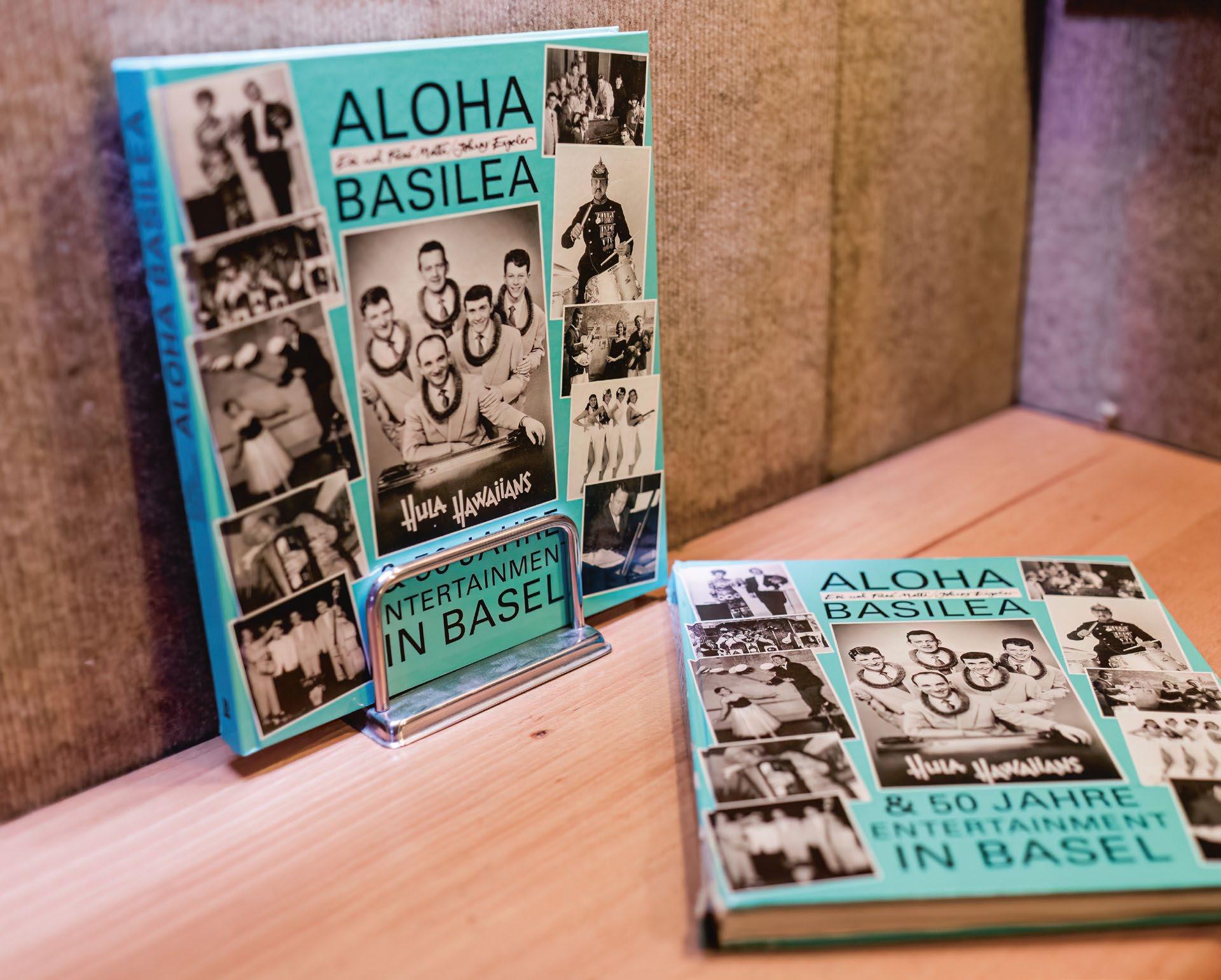
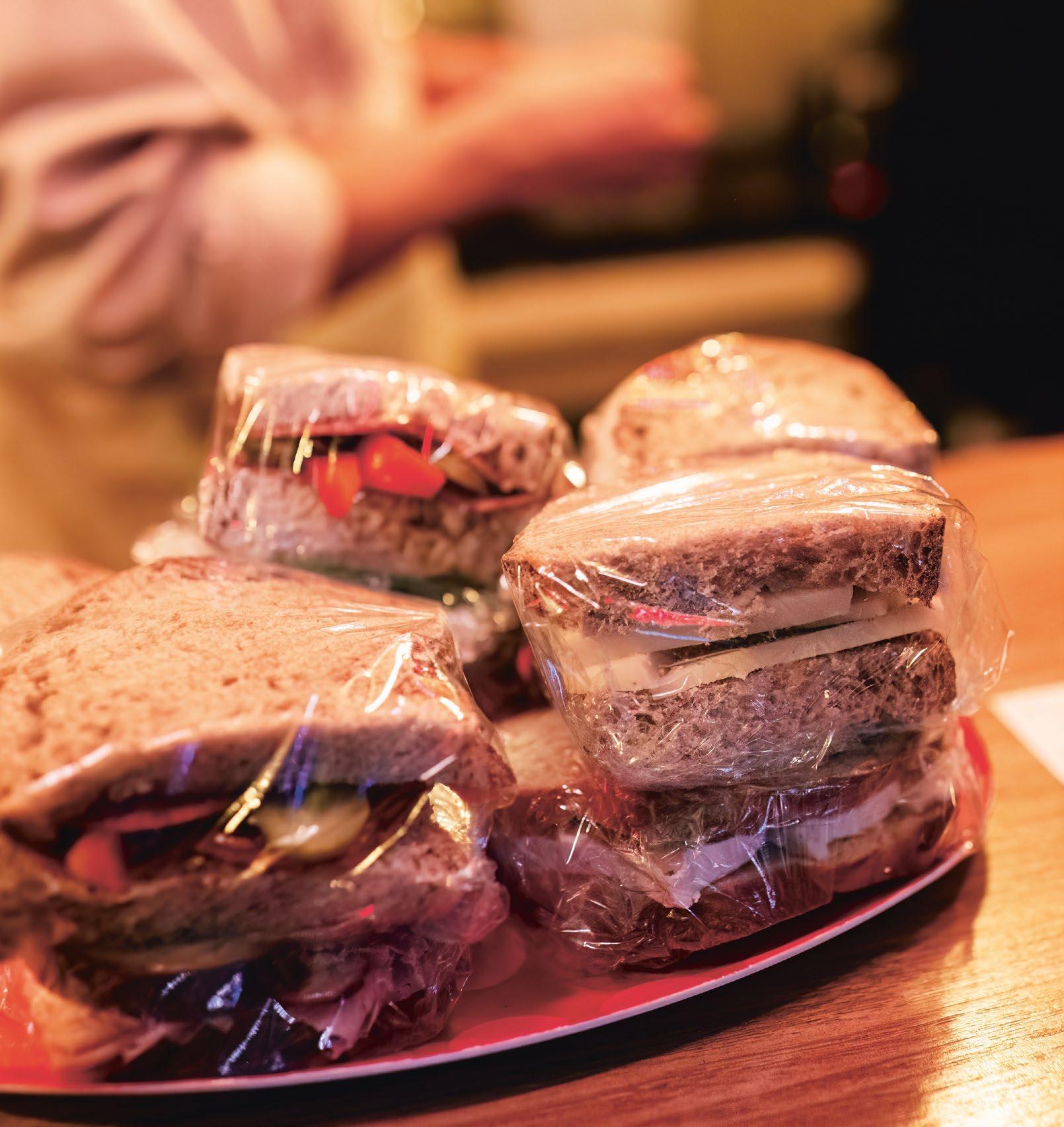
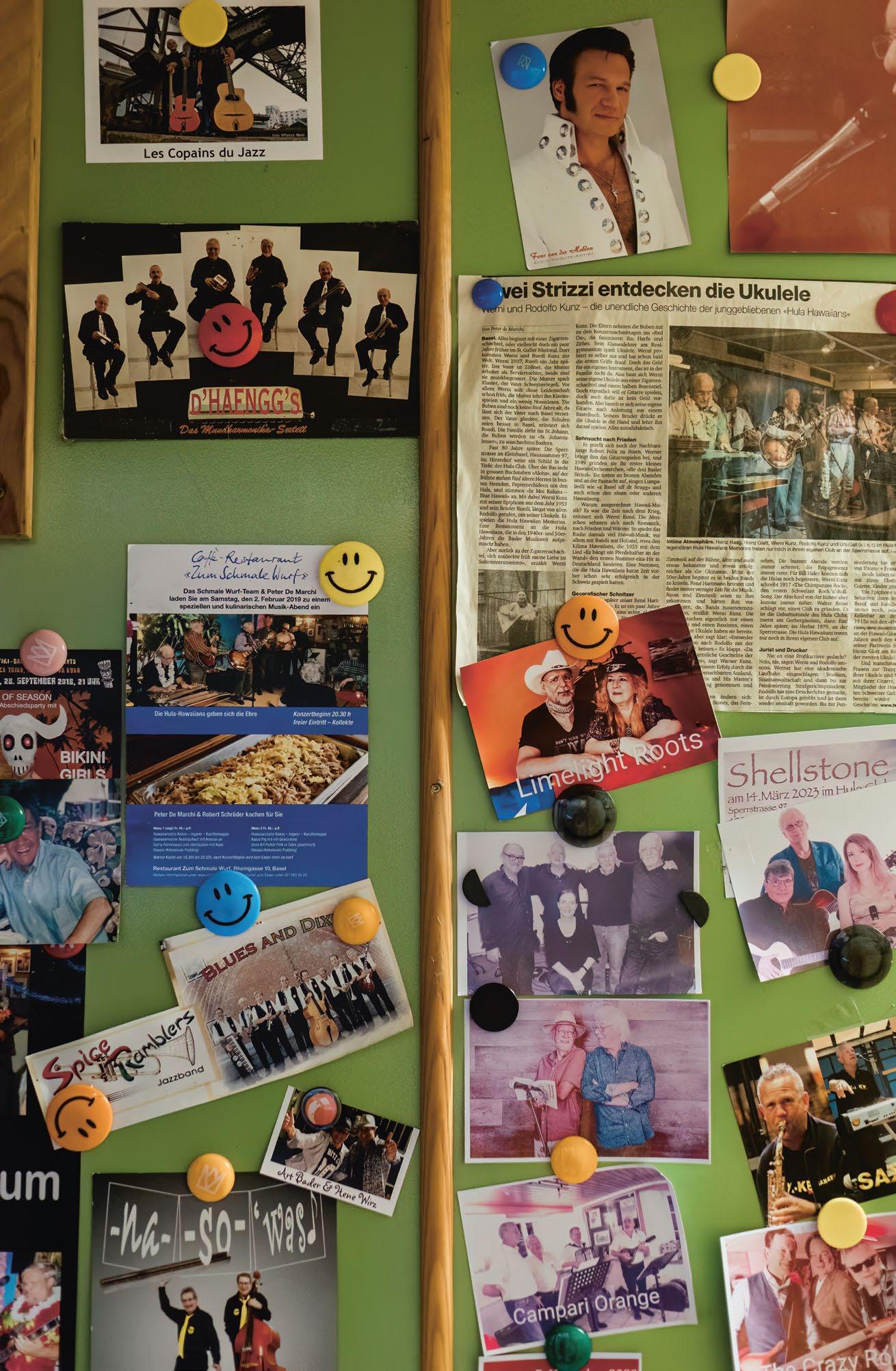

Eine Reservation ist keine Pflicht, aber auch nicht unangebracht, besonders wenn man als Gruppe in den zwar hübschen, aber nicht riesigen Keller steigen will. Oft handelt es sich um Mitglieder oder Angehörige der Bands, die hier spielen, aber Neuankömmlinge sind jederzeit willkommen.
Geöffnet hat der Hula Club immer dienstags und immer dienstags wird aufgetreten. Country, Folk, Singer-Songwriter, Blues – so siehts aus. Und, wie der Verein auf seiner Website schreibt: «Auch die Hula Memories werden regelmässig Abende bestreiten, Heinz-Peter Glatt und Rudi Maggi werden Euch mit weiteren Musikern und Gastmusikern unterhalten.» Klänge aus Hawaii dürfen auch in Zukunft nicht fehlen.
Das hat sich auch Little Chevy vorgenommen. Natürlich heizt sie der Klientel mit gehörig Seele und zwischendurch satten Basler Sprüchen ein, zumal ihre «jüngste Freundin, älteste Freundin und die langjährigste Freundin» im Publikum sitzen. Aber sie unterlässt auch nicht die Reverenz an Pink Pedrazzi, der sie zu ihrem heute ersten Auftritt im Hula Club motiviert hatte – und ordnungsgemäss auf den Einsatz einer Ukulele hinwies. Zwischen Anekdoten greift Markus Werner hinter sich, nimmt ein glänzendes Exemplar zur Hand. «Das klingt ja fast schon... nach indischen Einflüssen!», scherzt Little Chevy ob der Harmonien, die spontan entstehen. Dann legen sie erneut los. Zwischen schmachtend und fetzend, zwischen Show und Intimität.
So geht es in den Abend hinein, während Angelika und Colin hinter der Bar aushelfen, Getränke nachschenken und die Verpflegung reichen, wie sie in Basler Vereinskellern bestens bekannt ist: Sandwiches oder eine warme Wurst. Keller und Kopp zeigen sich beide zufrieden: Das Publikum ist gut gelaunt, Little Chevy fühlt sich sichtlich wohl, die Neumitgliederliste füllt sich. Wo die Reise mit dem neuen Verein hinführt? «Ach, das wissen wir noch gar nicht so genau», sagt Keller. «Wir sind da ganz offen und schauen dann, was es noch braucht.» Denn irgendwie ist es ja schon ein wenig wie auf Hawaii: Erst mal treiben lassen, mit dem Rhythmus mitgehen – und, wenn es dann anzieht, die Welle reiten. So lange es eben passt.
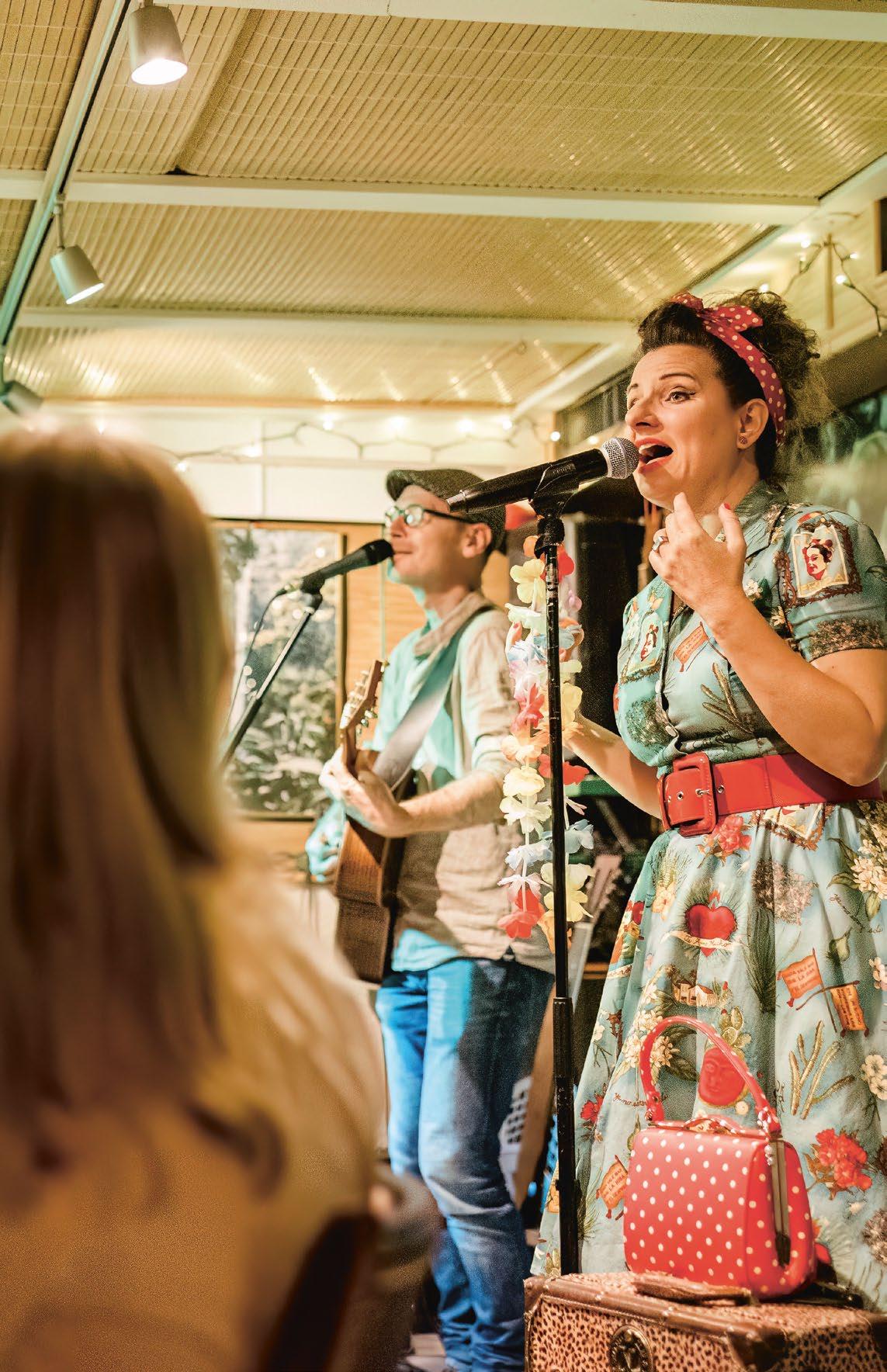
Sperrstrasse 97, 4057 Basel – hula-club-basel.ch
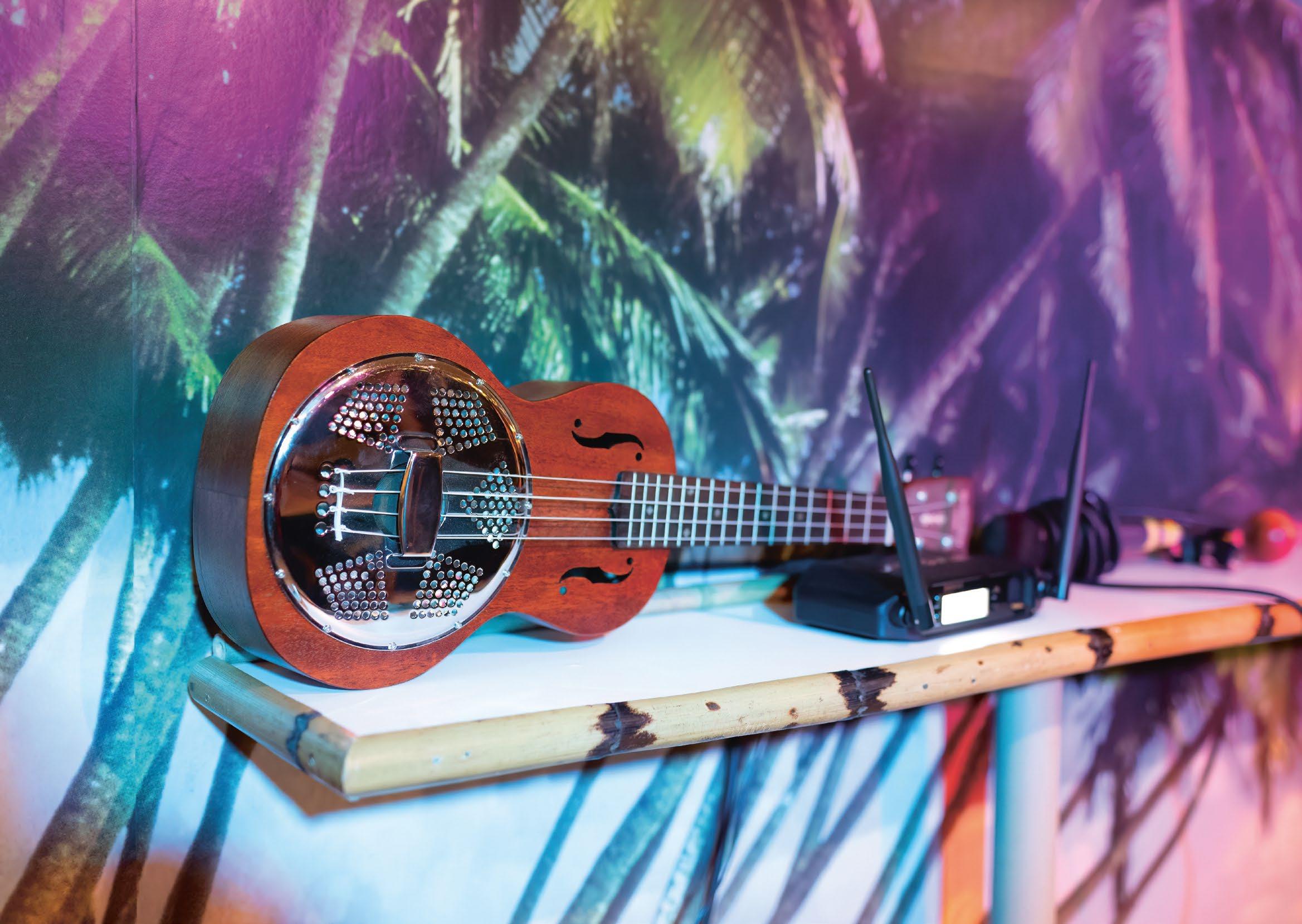
HULA CLUB BASEL

Jewelry that captivates the eye and touches the heart, offering a timeless testament to individuality and connection.
Schmuck, der das Auge verzaubert und das Herz berührt - ein zeitloses Zeugnis für Individualität und Verbundenheit.
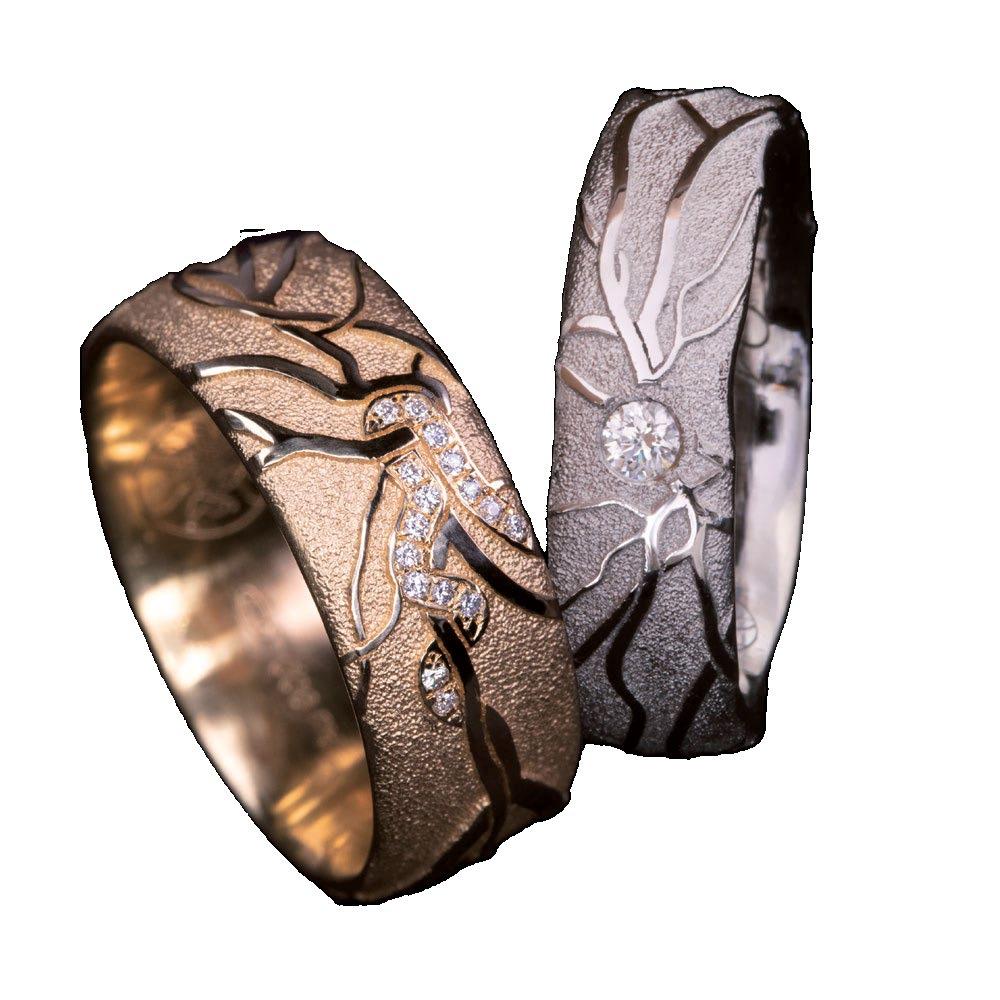

TUESDAY EVENINGS AT THE HULA CLUB
This nostalgic club in a rear courtyard in something of an insider tip in Klein-Basel. But those in the know luxuriate in the music and convivial atmosphere they find here.
Little Chevy shakes out her petticoat. Then she laughs to the guests in the audience and grabs the microphone. She is a rockabilly singer from Basel who is usually backed by the four men of her supporting band, but this evening she is performing accompanied by just her guitarist, Markus Werner, “kinda something new” as she points out a minute later, as she greets the audience. The venue this evening invites intimacy: Little Chevy, whose real name is Evelyne Péquignot, is performing at the Hula Club.
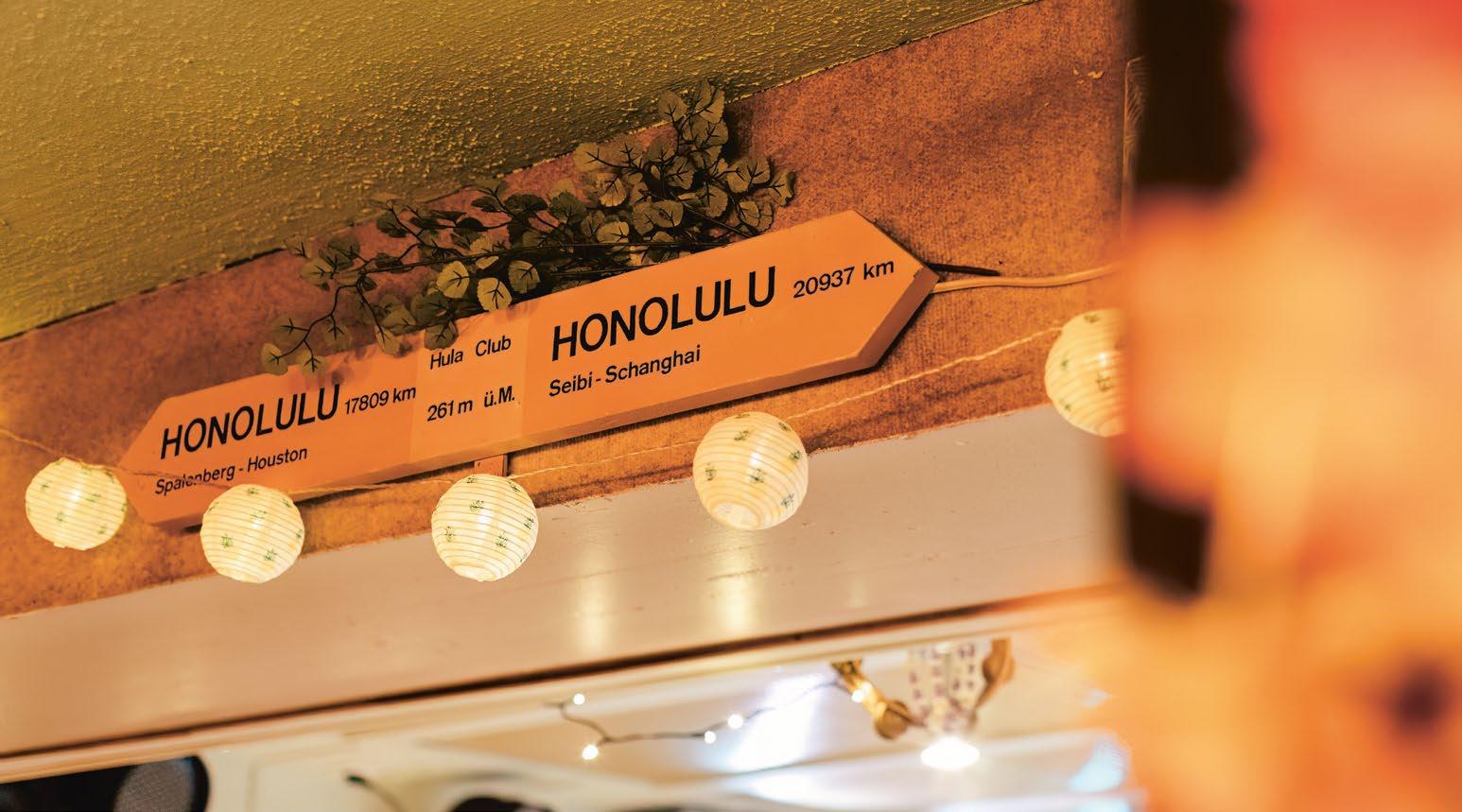
Ah, the Hula Club: a perennial insider tip at Sperrstrasse 97 in Basel, a dream of a place − at least for the initiated, those familiar with it – but a huge question mark for those who have no idea what you are talking about when you start raving about this relaxed, Hawaiian-style club in the cellar of a courtyard, tucked away behind a grey apartment block in Klein-Basel.
As it happens, the location has cult status. For one thing, it is one of the last remnants of a gradually disappearing spirit from another time, when people still revelled in innocent dreams about the Pacific and photos of the locals there in traditional dress inspired a desire to visit faraway places. But down in this cellar, among its festoons of plastic flowers, cheerful palm tree décor and now almost touching wood panelling, the spirit of that era lives on.
Memories of the Hawaii fever of the 1950s
The venue in the rear courtyard has been used since 1979 – when it came into being as the rehearsal rooms of the Basel band, the “Hula Hawaiians”. This group emerged from its predecessor, the “Okinawa Hawaiians,” which itself had grown out of the “Basler Strizzi” band, a group of three lads from Basel who had caught the Hawaii fever in the nineteen forties and fifties, a vibe they never lost over the decades to come. It was in the cellar in the Sperrstrasse that they rehearsed, held concerts and where a hard core of fans developed, but where they also continuously attracted new patrons and club members.
The Hula Club is now being run by a new group of people but with the original décor. The “Hula Club Association” sprang into action in December 2024 and you can read a tribute to the work of its predecessors on its website. It states: “On the 17th Dezember 2024, after more than 28 years here, Esther Soland and Heinz Haag bid farewell to the Hula Club with a celebratory evening of concerts.”
Nowadays it is the music and culture aficionados Pascal Biedermann, Bruno Kopp, Benjamin Rüdy, Christoph Peter and Thomas Keller, who are making sure the Hula Club continues to flourish. On Tuesday evening – down at the Hula Club it is always Tuesday evening – Thomas Keller mans the bar and greets everyone heartily. An interior designer by trade, he is a well-known figure in the city, certainly in own his milieu, but also in the restaurant trade. At the Hula Club he manages the bar.
The doorbell rings repeatedly, and behind the bar they press the automatic opener to the entrance door of the grey apartment building. The Hula Club is a members’ club financed by membership fees, as Bruno Kopp, Keller’s fellow manager, who is behind the bar with him, tells me, while explaining they are also designing a membership form and hoping to attract new members. “Let’s see how many people come today,” he says and grins. Kopp is expecting around 30 people this evening. “Well, that would be a good evening.”
Subdued lighting, post cards and plenty of atmosphere
The dusky light from the red and yellow bulbs around the bar illuminates evidence of the heartfelt passion that has been poured into this cellar for more than 46 years now. To the left are two books about the “Hula Hawaiians,” the entrance is hung with countless postcards, photos, and newspaper cuttings about gigs in the past, from friends and local names in the world of music.

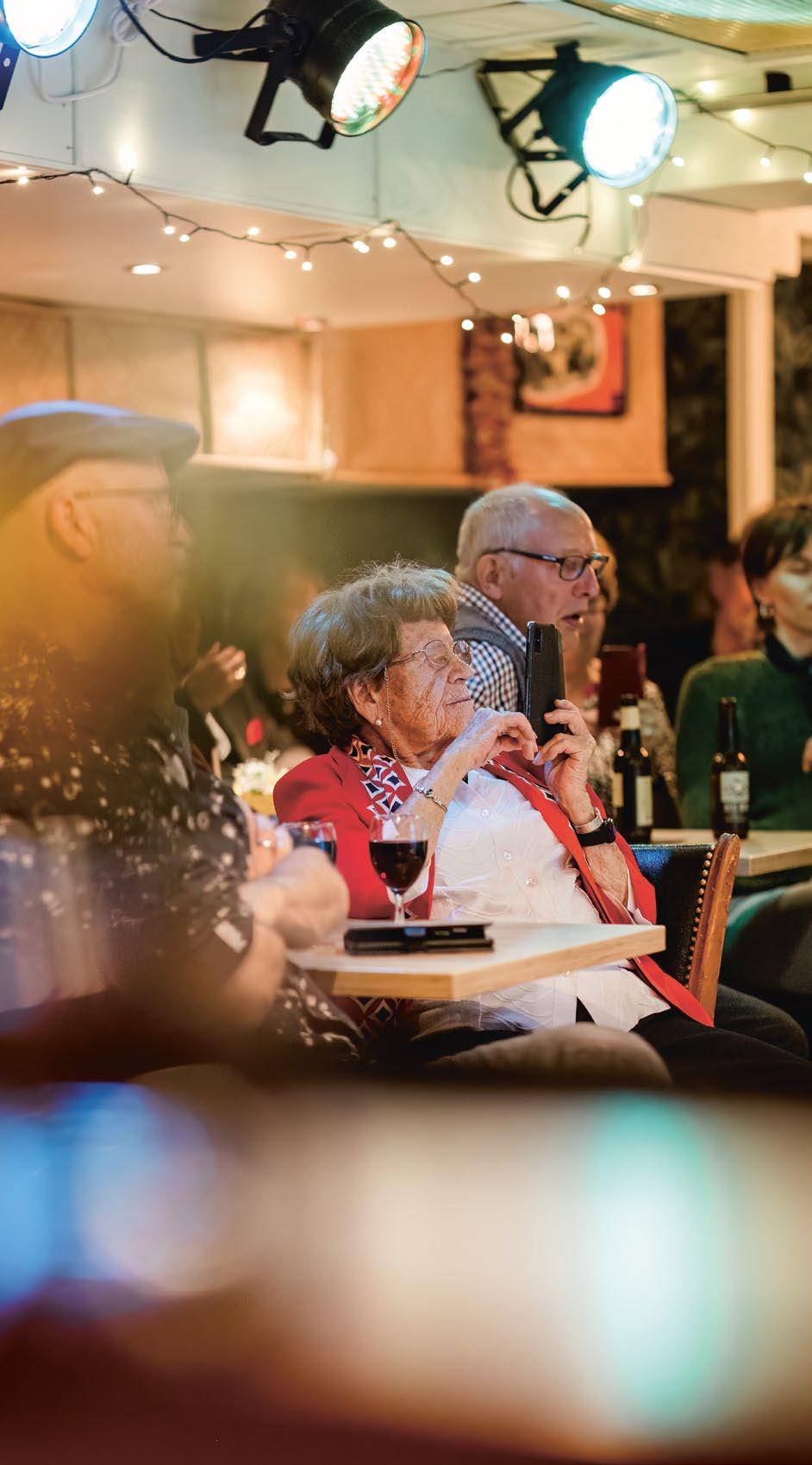
At first glance you can spot Pink Pedrazzi, a musician from Basel with very close ties to the Hula Club. And it is not particularly astonishing that Pedrazzi’s fellow musician, Pascal Biedermann, is one of the driving forces behind the club’s new association. “It was Pascal who brought me onto the committee;” says Keller, the bar manager and laughs. “The Hula Club really is a great institution: So much atmosphere, history and a great crowd of regulars.” But then he stops because a new group of guests is just arriving through the entrance: “Have you reserved a table? No? Great, yeah, no, that is no problem at all!”
You don’t have to make a reservation, but it’s not a bad idea, especially if you are planning to come as a group; the cellar is great, but not exactly huge. The audience usually consists of the members and friends of the bands who are playing, but newcomers are always welcome.
The Hula Club is always open on Tuesday and musicians perform here every Tuesday. Country, folk, singer-songwriters, the Blues – that’s what’s happening. And as the association writes on its website: “The Hula Memories will also be performing regularly, Heinz-Peter Glatt and Rudi Maggi will entertain you with other musicians and guest musicians.” The sounds of Hawaii are an integral part of the future too.
Little Chevy has this in mind too. Of course, she first fires up the audience with plenty of spirit, interspersed with some salty banter in the local Basel dialect, the more so because her “youngest friend, oldest friend and longest-standing friend” are all in the audience. But she then takes the opportunity to pay tribute to Pink Pedrazzi, who encouraged her to perform at the Hula Club for the first time this evening – and duly pointed out that a ukelele will be played. Between her anecdotes, Markus Werner reaches back and grabs a wonderful specimen. “That almost sounds like... well, like Indian influences!” Little Chevy jokes about the harmonies emerging spontaneously beside her. Then they get going again. From soulful to thrilling, showy to intimate.
The evening continues, while Angelika and Colin help out behind the bar, pouring drinks and serving the kind of food absolutely typical for Basel’s club cellars: sandwiches or a hot sausage. Keller and Kopp are both well contented: the audience is in a good mood, Little Chevy is obviously enjoying herself, and the list of new members is filling up. Where is this escapade with the new association going to lead them? “Oh, we don’t really know at the moment;” says Keller. “We are keeping an open mind and watching out for what else we have to do.” Because in a way, it is a bit like being in Hawaii: first go with the flow, with the rhythm – and, then when the swell picks up, ride the wave. For as long as it suits you.
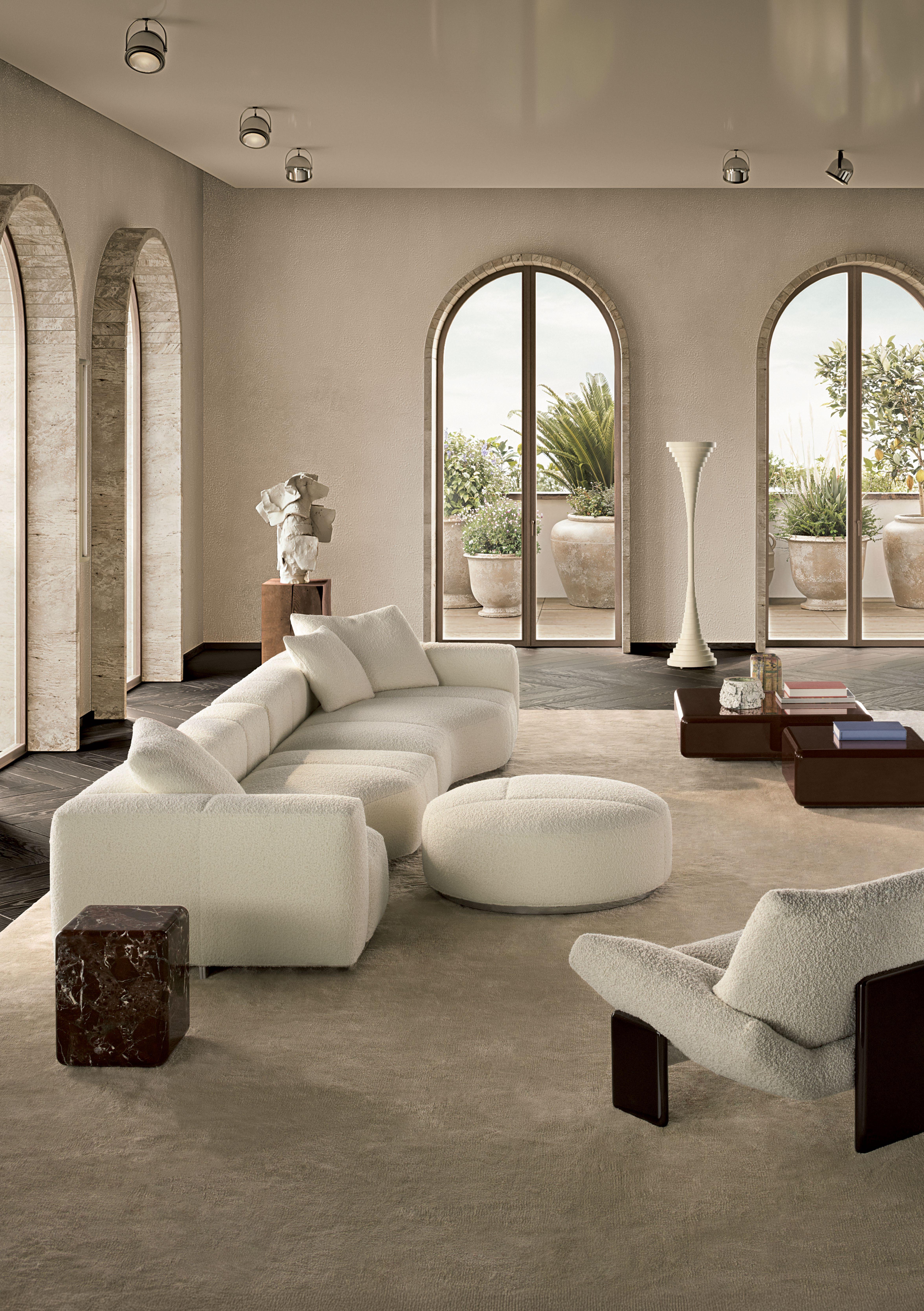

SORGLOS NASCHEN ERWÜNSCHT! SÜSSES BASEL
Warum die Lust auf Schokomandeln, Nougat oder Fruchtgummis unterdrücken? Lieber bewusst die richtig guten Sünden auswählen und diese dann hemmungslos geniessen. Hier ein paar Tipps fürs traumhaft süsse Vergnügen.

Spalenberg 15 – creamcakery.ch
Zart auf der Zunge, süss, aber nicht zu sehr und unfassbar crèmig –Claudia Schillings Cheesecakes pumpen Glückshormone ins Gehirn. In zahlreichen herrlichen Varianten kannst du sie entweder im gemütlichen Café geniessen oder mit nach Hause nehmen.
They melt on the tongue, are sweet but not overly so and unbelievably creamy –Claudia Schilling’s cheesecakes will pump your brain full of serotonin. You can enjoy them in a whole range of delicious variations, sitting in the cozy café or you can take them home with you. You can also order entire cheesecakes online.

Andreasplatz 17 – bakedbymilo.com
Dieses kleine Keksuniversum sorgt mit seinen kreativen Sorten für pure Glückseligkeit: Ob Peanut Caramel Cookie, Apple Cinnamon Cookie oder Leckerly Cookie – jedes einzelne Stück wurde von den beiden Inhaberinnen Laura und Sandra mit viel Liebe kreiert. Namensgeber ist übrigens Lauras schnurrender Kater.
This miniature universe of cookies conjures up pure bliss with its creative varieties be they peanut caramel cookies, apple cinnamon cookies or Leckerly (an ancient Basel recipe) cookies – every single one has been created with great love by the two proprietors, Laura and Sandra. The shop’s namesake, by the way, is Laura’s purring tomcat.
SCHIESSER
Marktplatz 19 – confiserie-schiesser.ch
«Bisch e Gniesser – gosch zem Schiesser» heisst es in Basel – und das seit 1870. Im ältesten Kaffeehaus der Schweiz bekommst du mit Blick auf den Marktplatz hausgemachte Patisserie, Pralinés und Schokoladenstücklein serviert. Natürlich kannst du dir auch einfach eine kleine Leckerei mit auf den Weg nehmen.
“Bisch e Gniesser – gosch zem Schiesser” (if you’re a gourmet, go to Schiesser) as the saying goes in Basel – and has done since 1870. In Switzerland’s oldest coffee house, with a view over the market square, you will be served in-house patisseries, pralines, and little chunks of chocolate. It goes without saying that you can simply take a little treat away with you too.

Gerbergasse 57, Greifengasse 2, Bahnhof SBB Passerelle – laeckerli-huus.ch
Kein Besuch in Basel ohne Läckerli: Hier gibt es das Original – seit über 120 Jahren. Mit etwas Glück kannst du ein Läckerli frisch aus dem Ofen degustieren; Suchtgefahr! Die Klassiker gibt es auch mit Schokolade und in diversen Geschenk-Varianten.
No visit to Basel is complete without Läckerli: this is where you'll find the original –for over 120 years. With a bit of luck, you might even get to taste a freshly baked one straight from the oven – highly addictive! The classic version is also available with chocolate and in a variety of gift options.
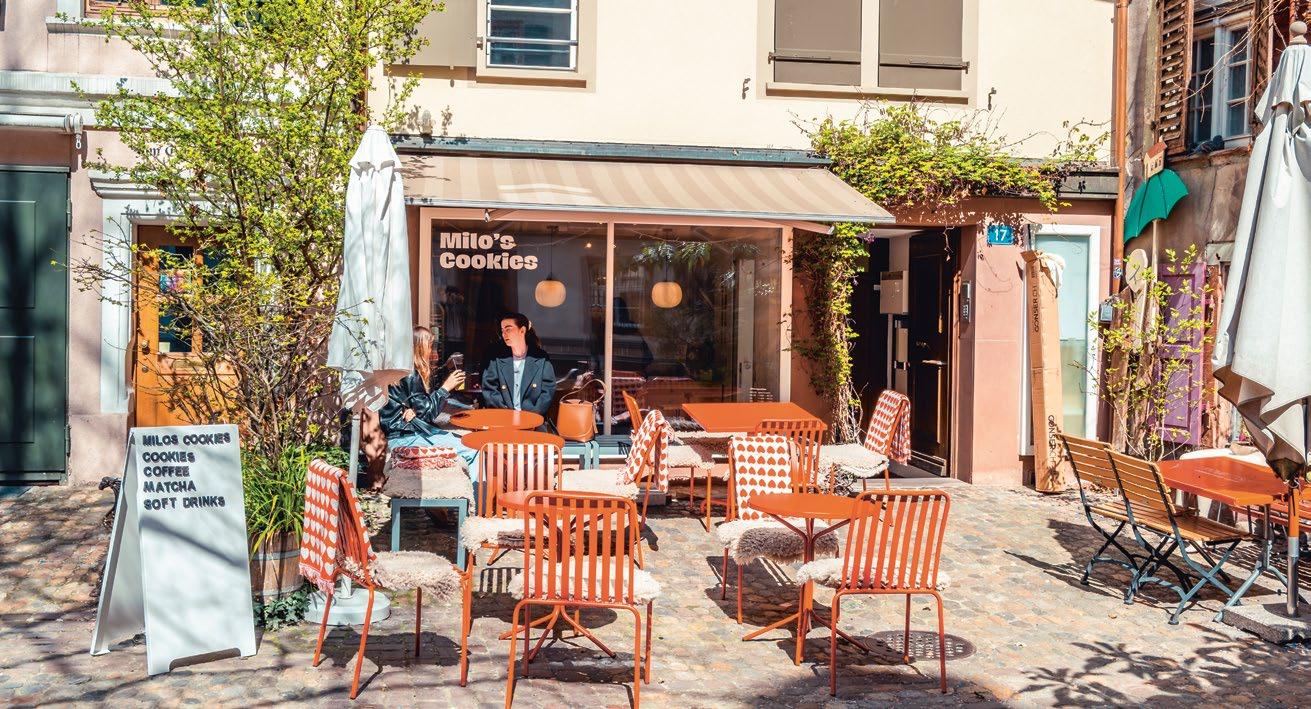
LÄCKERLI HUUS
CREAM CAKERY
MILO’S COOKIES
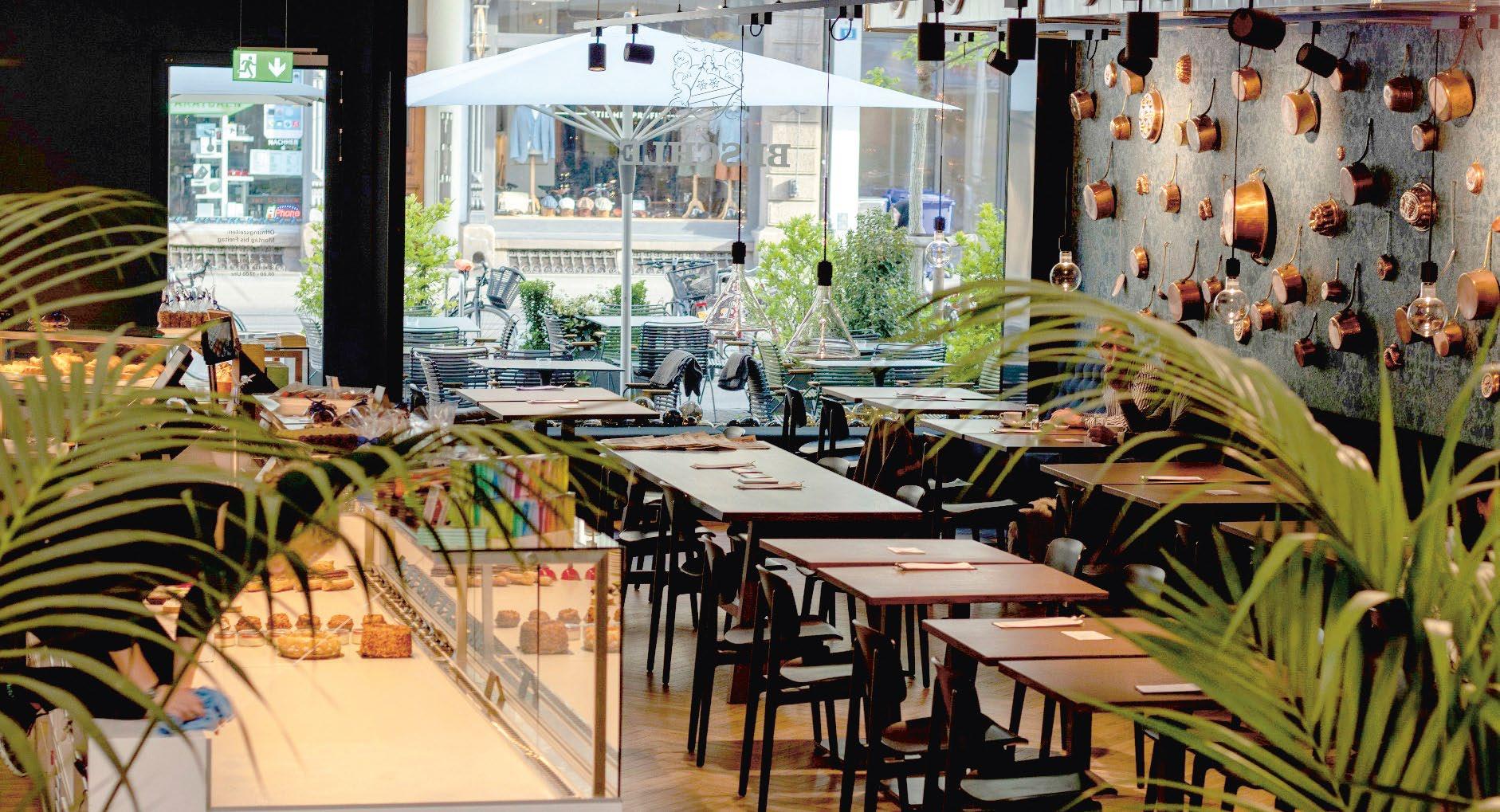
Greifengasse 16 – lolipop.ch
Candies in allen Formen und Farben, Snacks und Drinks aus fremden Ländern – hier findest du kunterbunte Produkte und süsse Innovationen. Zum Beispiel Fruchtgummis mit Wassermelonen-/Chili-Geschmack, Marshmallow-Donuts oder asiatische Schokokekse gefüllt mit Klebreis.
Candies in every shape, colour, and form; snacks and drinks from other countries –you will find multi-coloured products and sweet innovations here. For example, fruit gums with watermelon/chilli flavour, marshmallow donuts, and Asian chocolate cookies filled with sticky rice.

Rheingasse 4 – mystifry.com
In diesem kleinen Laden am Rheinsprung musst du schnell sein; die hier angebotenen Donuts sind nämlich sehr oft ausverkauft. Das liegt daran, dass die veganen Herrlichkeiten mit viel Liebe von Hand hergestellt werden. Zimt-Zucker, Apfel-Miso-Karamell oder Vanille-Lavendel – die Sorten wechseln laufend.
You have to be quick if you want to enjoy the donuts sold at this tiny store on the Rheinsprung, because they are often sold out. This is no wonder, the vegan donuts are handmade with a great deal of loving care. Cinnamonsugar, apple-miso-caramel, or vanilla-lavender – the varieties change constantly.
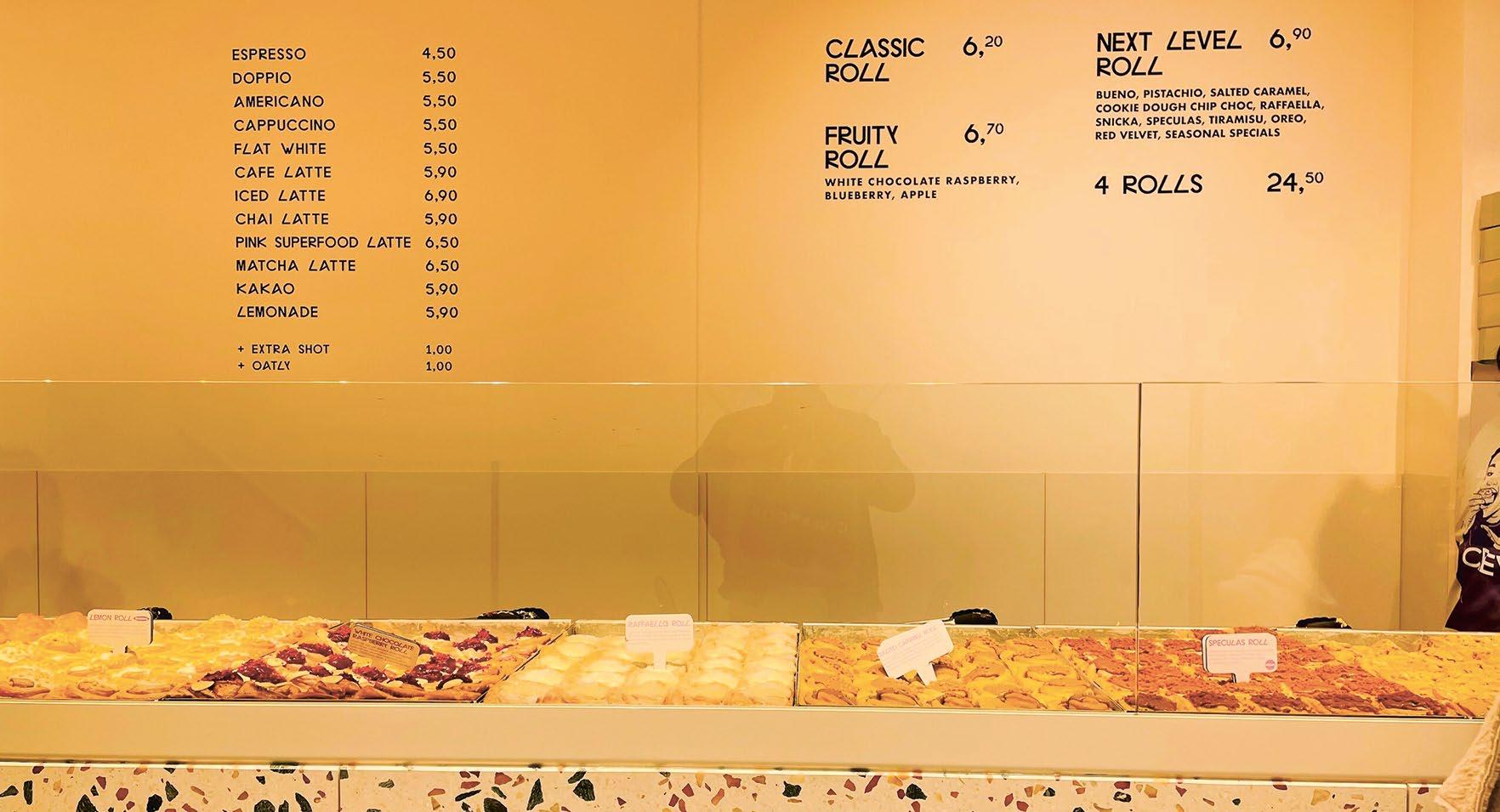
BESCHLE
Scheidergasse 21 / Clarastrasse 4 / Aeschenvorstadt 56 – beschle.ch
Das Basler Traditionsunternehmen steht seit 1898 für hochwertige Confiserieund Schokoladenkreationen. Den stadtbekannten Beschle-Ring, die Eclairs, Schoggi-Makrönli und Zitronen-Tartelettes bekommst du an drei Standorten in der Stadt – an der Clarastrasse sogar mit Blick in die Backstube.
This long-established Basel company has been synonymous with top-quality confectionery and chocolate creations since 1898. The famous Beschlé ring, the eclairs, chocolate macaroons, and lemon tartlets – are all available at the city’s three Beschlé stores – in the Clarastrasse you can even peer into the bake room.
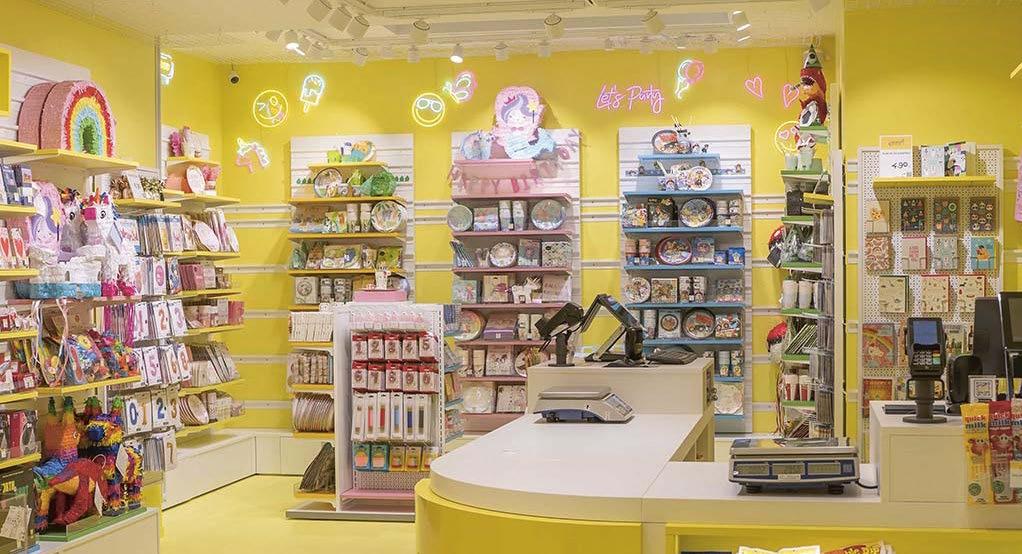
Marktgasse 6 – xocolatl.ch
Handgemachte Tafelschokoladen aus über 40 Manufakturen dieser Welt, Trinkschokoladen, Kakao-Likör oder Kakaobohnen-Schalen-Tee – das alles und noch viel mehr bekommst du in diesem Schokoladen-Schlaraffenland, das besonderen Wert auf nachhaltige Produktion und fairen Handel legt.
Bars of chocolate handmade by over 40 manufacturers from all over the world, drinking chocolates, cocoa liqueurs and tea made from cocoa bean husks – you’ll find all this and plenty more at this paradisical chocolate shop, which places great store on sustainable production methods and fair trade.
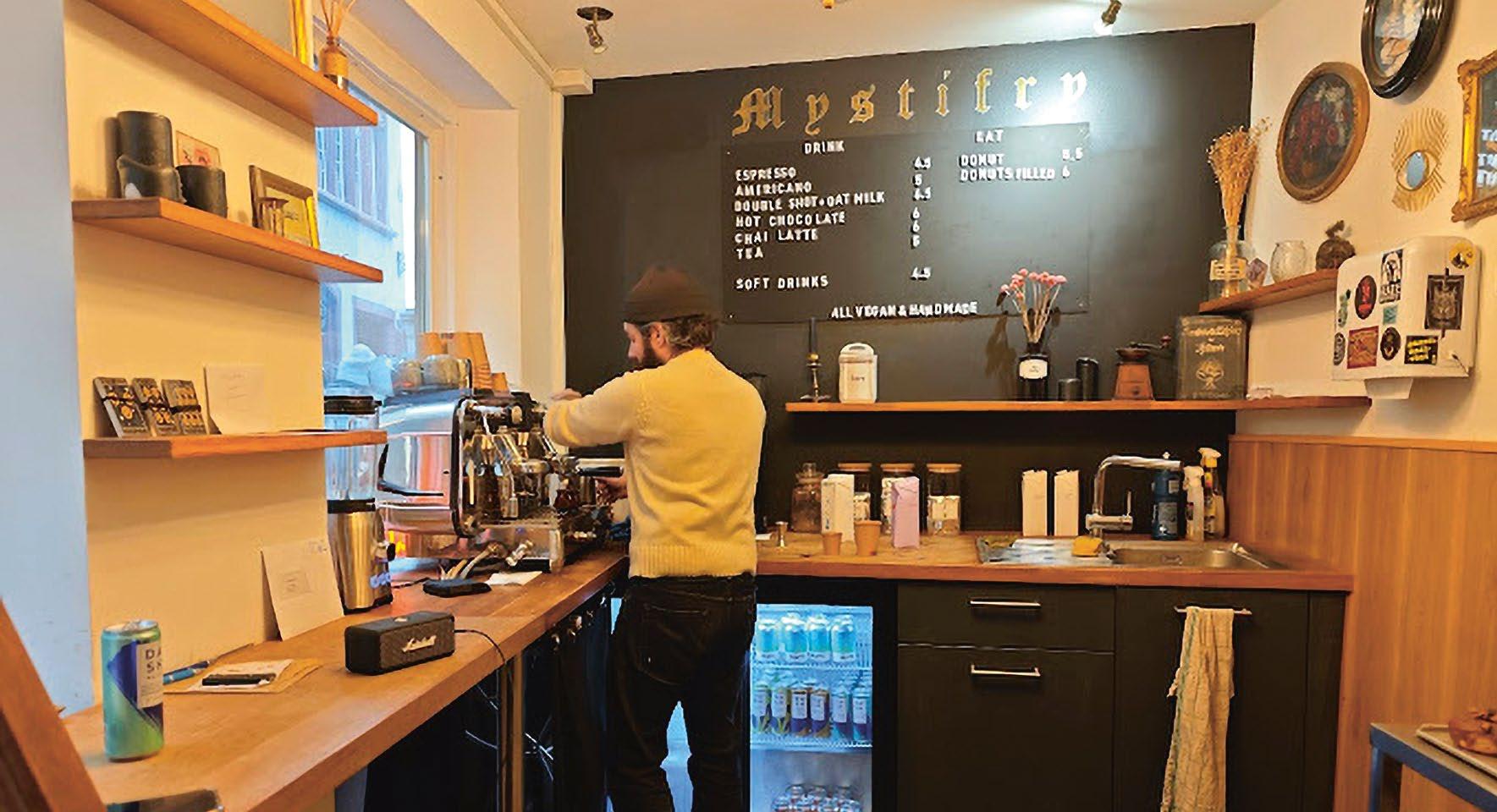
Freie Strasse 93 – cinnamood.de
Ein Bissen reicht und du verstehst den Hype um die Zimtschnecken von Cinnamood: Sie sind nicht nur fluffig-weich, saftig und werden dir in halbwarmem Zustand serviert, sondern es gibt sie auch noch in fancy Geschmacksrichtungen. Ob mit Pistazien-, Mascarpone-, oder Kokoscrème gefüllt – diese Kalorien lohnen sich!
One bite is already enough to explain the hype about the cinnamon buns by Cinnamood: They are not just fluffy squashy and moist and served slightly warm, they also come in fancy flavours. Filled with pistachio, mascarpone, or coconut cream – the calories are worth the bad conscience!
XOCOLATL
CINNAMOOD LOLIPOP
MYSTIFRY
NOUVEL ÉTÉ
KREATIV BEFLÜGELT, IM SCHÖNEN VEREINT
Fine Art Prints, Pflanzen, Fotokameras und Schallplatten; bei Nouvel Été wirst du von der Vielfalt analoger Schönheit überwältigt. Nina Sommer und Daniel Infanger haben ihre Erfahrungen, Leidenschaften und gestalterischen Ideen in einem einzigartigen Shopkonzept im St. Johann miteinander verwoben.
Eine Schallplatte von Patti Smith, Run-DMC oder Marvin Gaye, eine Pusteblume im Glas, filigraner Ohrschmuck, eine gesprenkelte Obstschale, Sojawachs-Kerzen, eine Polaroidkamera, ein Daumenkino, ein Bretagne-Reiseführer, Postkarten, Notizbücher, edle Foto-Drucke und Blumensamen – wer den Concept Store Nouvel Été an der St. Johanns-Vorstadt betritt, entdeckt eine Welt voller Fundstücke und Geschichten. Doch wie passen all die bunten Teile zusammen?
Ganz einfach: Nina Sommer und Daniel Infanger, die gemeinsam den Laden sowie den dazugehörigen Webshop betreiben, haben in ihrer beider Leben viel Buntes erlebt. Daniel ist in den Bergen aufgewachsen, lernte zunächst Automechaniker, war Skilehrer.

Nach mehreren Jahren als Assistent bei verschiedenen Fotografen gewann er einen Fotopreis, investierte das Preisgeld in eigenes Equipment und machte sich selbstständig. Seit 30 Jahren arbeitet er nun als selbstständiger Fotograf und Filmer. Nina hat sich nach einer kaufmännischen Ausbildung bei der Post zur Marketingfachfrau weitergebildet und später zur Floristin. Sie gründete und führte einen eigenen Laden, leitete den Museumsshop im Kunstmuseum Basel, arbeitet heute als Unternehmerin, Floristin und Fotografin und hat sich in den letzten Jahren intensiv der Cyanotypie gewidmet. Der Blick in Ninas und Daniels vielseitigen Laden ist also auch ein Blick auf ihr vielseitiges Leben und auf das, was sie beide verbindet: die Liebe für das Schöne. Für Reisen (immer wieder und am liebsten nach Paris), für analoge Fotografie, Musik auf Vinyl, für Design, Literatur und Kunst.

Text & Bilder: Janine Wagner
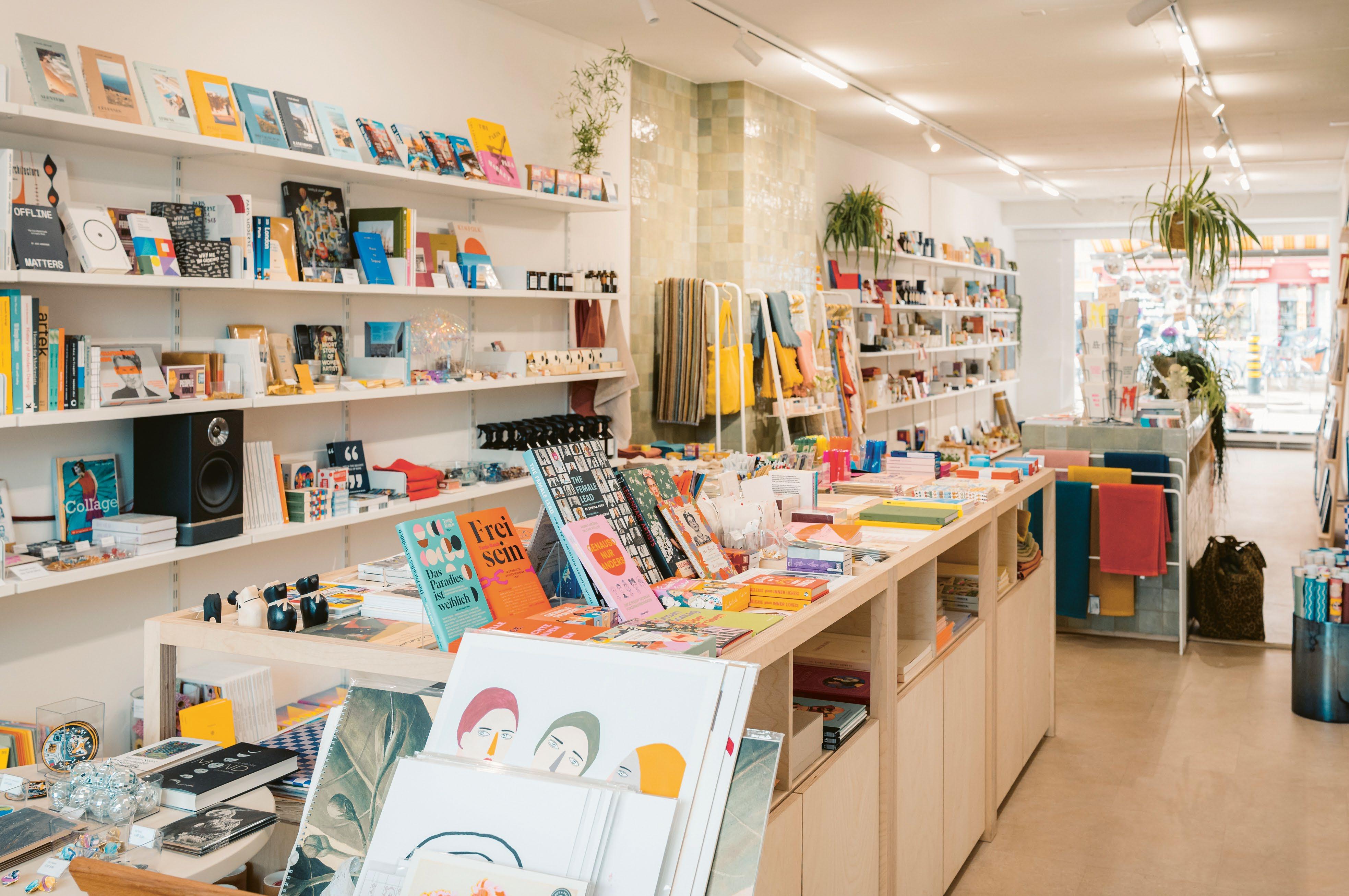
Von der Auszeit in Paris zum Laden im St. Johann Dass sich das Leben der beiden heute auch um Nouvel Été dreht, hat mit einer kreativen Auszeit vor drei Jahren zu tun. Die beiden wohnten und arbeiteten in einem Künstleratelier in Paris, als die Ideen zu sprudeln begannen. «Wir hatten Lust, uns auszuprobieren, wollten herausfinden, ob sich unsere Leidenschaften in einem Online-Shop vereinen lassen», erzählt Nina. Obwohl beide nur wenig Erfahrung im E-Commerce hatten, entwarfen sie ein eigenwilliges, aber überaus authentisches Konzept; Nouvel Été war geboren.
Wieder zu Hause, beschäftigten sie sich intensiv mit dem Aufbau des Webshops – wohlgemerkt neben allen anderen Projekten und Aufträgen. Daniel arbeitet bis heute hauptberuflich als Fotograf, Nina fertigt floristische sowie fotografische Arbeiten im Kundenauftrag und entwirft und fertigt die Schmuckkollektion von Nouvel Ete. Ihr Anspruch, zu jedem eigenhändig fotografierten Produkt eine individuelle Geschichte zu erzählen, bedeutete viele lange Stunden am Computer und im Fotostudio. Ende 2023 ging nouvel-ete.com online. «Und dann passierte erst einmal genau gar nichts», lacht Nina. Doch im Wissen darum, dass aller Anfang schwer ist, bissen sie sich durch.
«Unsere Work-Life-Balance?
Intensiv, aber erfüllend.»
Daniel Infanger
«Kurze Zeit nach dem Launch der Website sah ich das Ladenlokal im St. Johann. Zwar war ein physischer Laden nicht so schnell geplant, aber ...» Nina zuckt ergeben mit den Schultern. «Es gehört einfach zu mir, dass ich auf mehreren Hochzeiten gleichzeitig tanze.» Also steht sie heute, neben allen weiteren Projekten, auch im Laden, bedient Kundschaft, kümmert sich um den Einkauf, um das Marketing sowie um die Gestaltung des Sortiments. Sie bewirtschaftet die Social MediaKanäle und ist ebenso zuständig für Buchhaltung und Führung des Personals. Daniel fotografiert die Produkte, erstellt Content für Social Media und kuratiert das musikalische Sortiment mit einer feinen Auswahl an Schallplatten und Plattenspielern. Ausserdem ist er Ansprechperson für Fragen rund ums analoge Fotografieren.
«Arbeiten wir jetzt oder ist das Freizeit?» Es ist eine Fülle an gut designten, stimmigen und seltenen Produkten, die einem bei Nouvel Été ins Auge springen. Hübsche Keramik, dekorative Seife, hochwertige Bildbände oder coole Socken. Wenn sie gut schmeckt und gut gestaltet ist, findet sogar eine simple Tomatensauce den Weg ins Sortiment. Donnerstags, freitags und samstags gibts zudem frische Blumen – sofern es die Kapazitäten erlauben. «Dann fahren wir morgens um sechs zur Blumenbörse…», sagt Daniel. «Ein schöner Teil unserer Arbeit», ergänzt Nina, die jeweils die Sträusse bindet. Auch Postkarten drucken die beiden selbst auf einer alten japanischen Druckmaschine, einem Risografen. Sie sind wie Ninas Schmuck und die fotografischen Drucke im Laden erhältlich. Um die Magie der Cyanotypie weiterzugeben, bieten die beiden überdies an ausgewählten Wochenenden Workshops in ihrem Fotostudio an. «Wir haben unsere ganzen Leidenschaften und Kompetenzen in Nouvel Été gepackt», bringt es Daniel auf den Punkt.
Doch neben all der Freude und Inspiration – es ist auch ein Kraftakt. «Nouvel Été steht nie still, fordert uns jeden Tag aufs Neue heraus», beschreibt es Nina. «Unsere Work-Life-Balance? Intensiv, aber erfüllend», schmunzelt Daniel. «Oft fragen wir uns; arbeiten wir jetzt oder ist das Freizeit?» «Wir beflügeln uns gegenseitig kreativ», findet Nina. Die Leidenschaft und Authentizität der beiden ist ihr Erfolgsrezept. Dem Charme der kunterbunt gemischten, aber stets akkurat und liebevoll präsentierten, nützlichen, kuriosen und zauberhaften Dingen im Laden und im Webshop kann man sich kaum entziehen.


70 – nouvel-ete.com
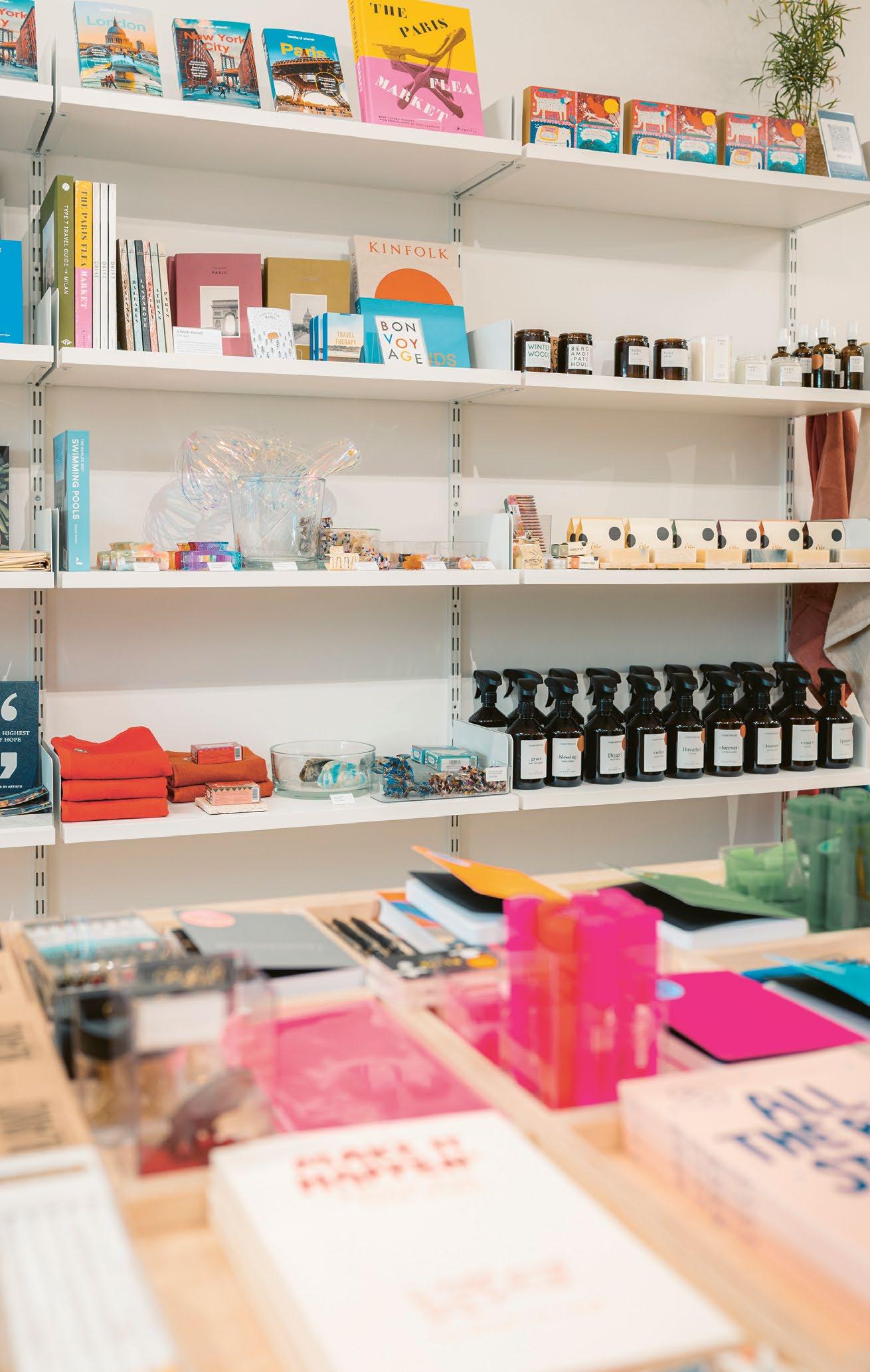
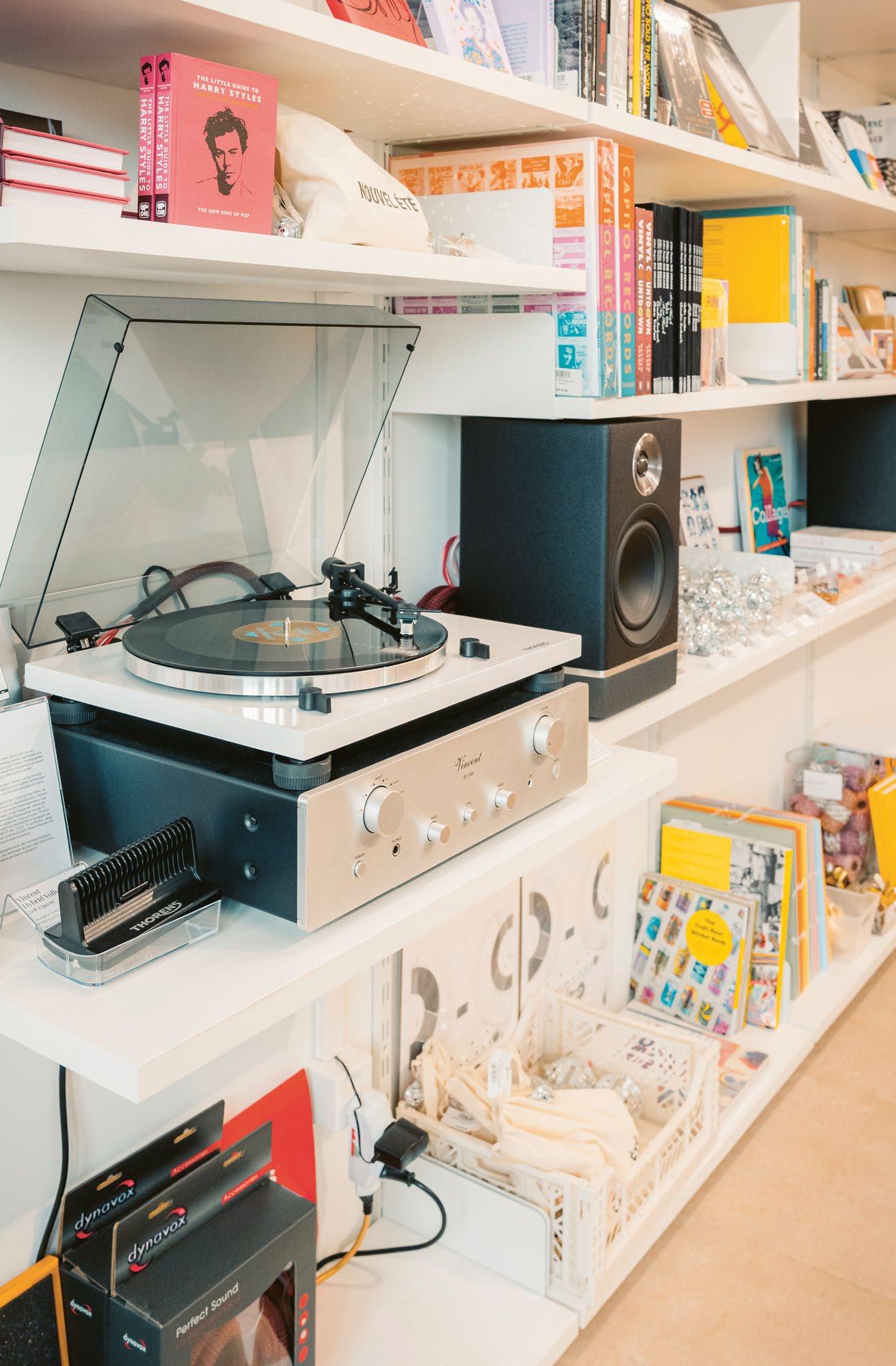
St. Johanns-Vorstadt

VIJA CELMINS
15. 6. – 21. 9. 2025
YAYOI KUSAMA
12. 10. 2025 – 25. 1. 2026
PAUL CEZANNE
25. 1. – 25. 5. 2026
Photo: Mark Niedermann
“Our
work-life balance? Intense,
but fulfilling.”
Daniel Infanger
INSPIRATIONAL CREATIVITY, BEAUTIFULLY COMBINED
Fine art prints, plants, cameras, and vinyl records; you will be stunned by the sheer variety of analogue delights at Nouvel Été. Nina Sommer and Daniel Infanger have interwoven their experiences, passions, and creative ideas in an inimitable concept store in St. Johann.
A record by Patti Smith, Run-DMC or Marvin Gaye, a dandelion in a glass, filigree earrings, a mottled fruit bowl, soy wax candles, a polaroid camera, a kineograph, a travel guide to Brittany, postcard, notebooks, fine photographic prints, and flower seeds – visitors entering the concept store Nouvel Été in the St. Johanns-Vorstadt will discover a world of lucky finds and stories. But how do all these multifarious pieces come together?
The answer is simple: Nina Sommer and Daniel Infanger, who together run the store and the online shop that goes with it, have enjoyed a pretty colourful life. Daniel grew up in the mountains, and originally trained as a car mechanic; he was also a ski instructor. Then, after several years working as an assistant to various photographers, he won a photography prize himself, used the prize money to buy his equipment and set up on his own. He has been working as a freelance photographer and filmmaker for 30 years now. Nina first completed a commercial apprenticeship with the Swiss Post as a marketing specialist and then later trained as a florist. She opened and ran her own shop; was the manager of the museum shop at the Kunstmuseum Basel; now works as an entrepreneur, florist, and photographer; and has dedicated herself intensively to the art of cyanotypes over the last few years. A glimpse into Nina and Daniel’s multifaceted store is also an insight into their varied lives and to what unites them: a love of beauty. A love of travel (again and again to their favourite destination, Paris); of analogue photography; music on vinyl; of design, literature, and art.
From a break in Paris to the store in St. Johann
The fact that this couple’s lives now also revolve around Nouvel Été is the result of a creative break three years ago. The two of them were living and working in an artist’s studio in Paris when new ideas began form. “What we wanted to try out, to find out, was whether our passions could be combined in the form of an online-shop," Nina tells me. Although neither of them had much experience in e-commerce, they drafted an idiosyncratic but deeply authentic concept; Nouvel Été was born.
Back home again, they concentrated intensively on building up their online store – in addition to all their other projects and assignments, it should be noted. Daniel’s main job is still as a photographer, even now. Nina designs her own jewellery collection, arranges floral displays, and makes photographic prints. Her aim of telling the individual story of every single product that has been photographed, requires many long hours at the computer and in the photographic studio. At the end of 2023, nouvel-ete.com went online. “And then for a while at the beginning there, nothing happened at all," laughs Nina. But knowing full well that things are always difficult at the beginning, they decided to grin and bear it.
“Not long after we launched the website, I noticed the empty shop in St. Johann. We hadn’t planned to have an actual store so quickly but ...” Nina shrugs her shoulders. “It’s just part of my nature that I like to have more than one iron in the fire.” So now, in addition to all her other projects, she mans the store, takes care of the purchasing and arranging the product lines. Daniel photographs the products, creates content for social media and curates the musical items with a fine selection of vinyl records and record players. He is also the person to ask about anything to do with analogue photography.
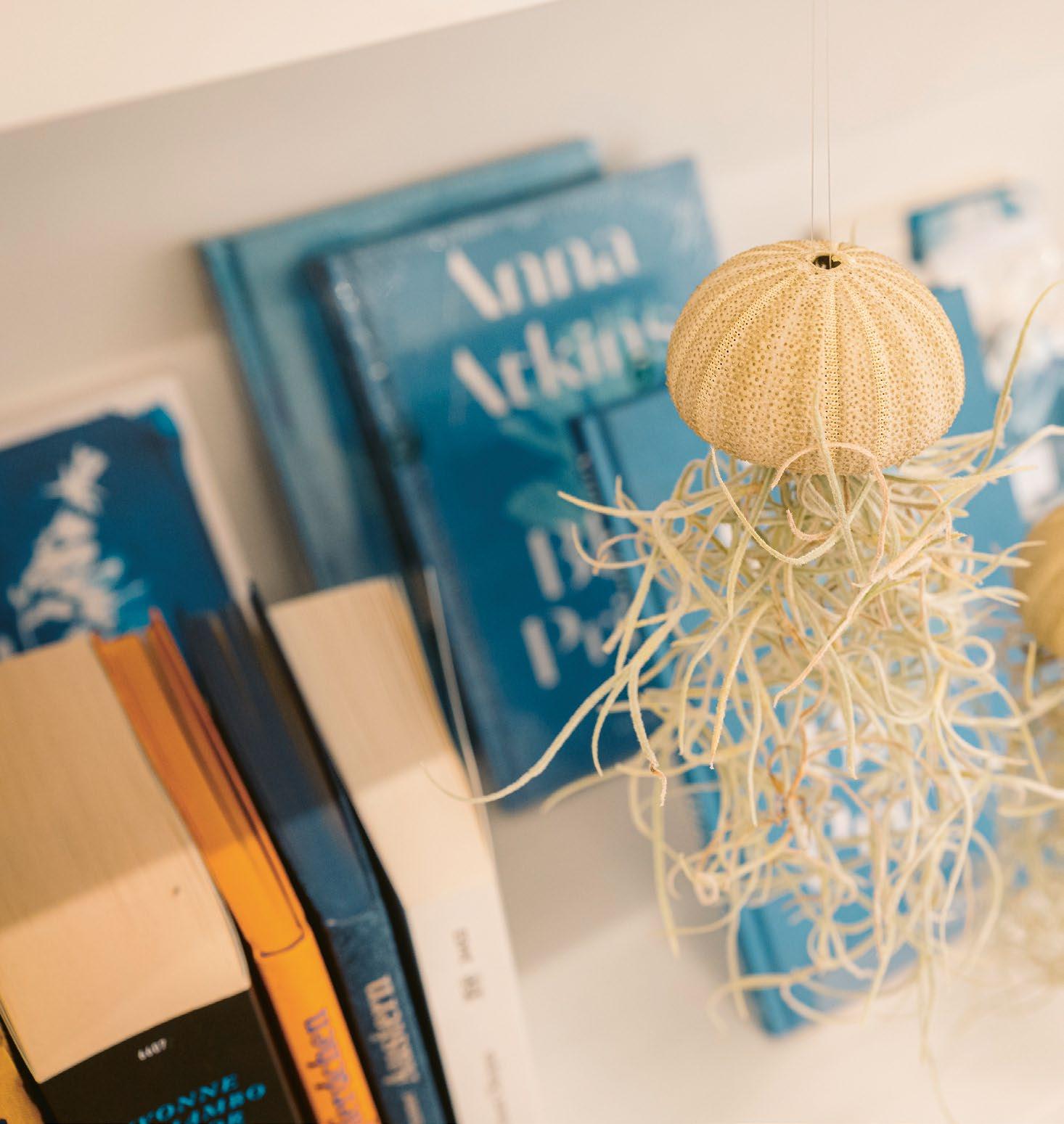

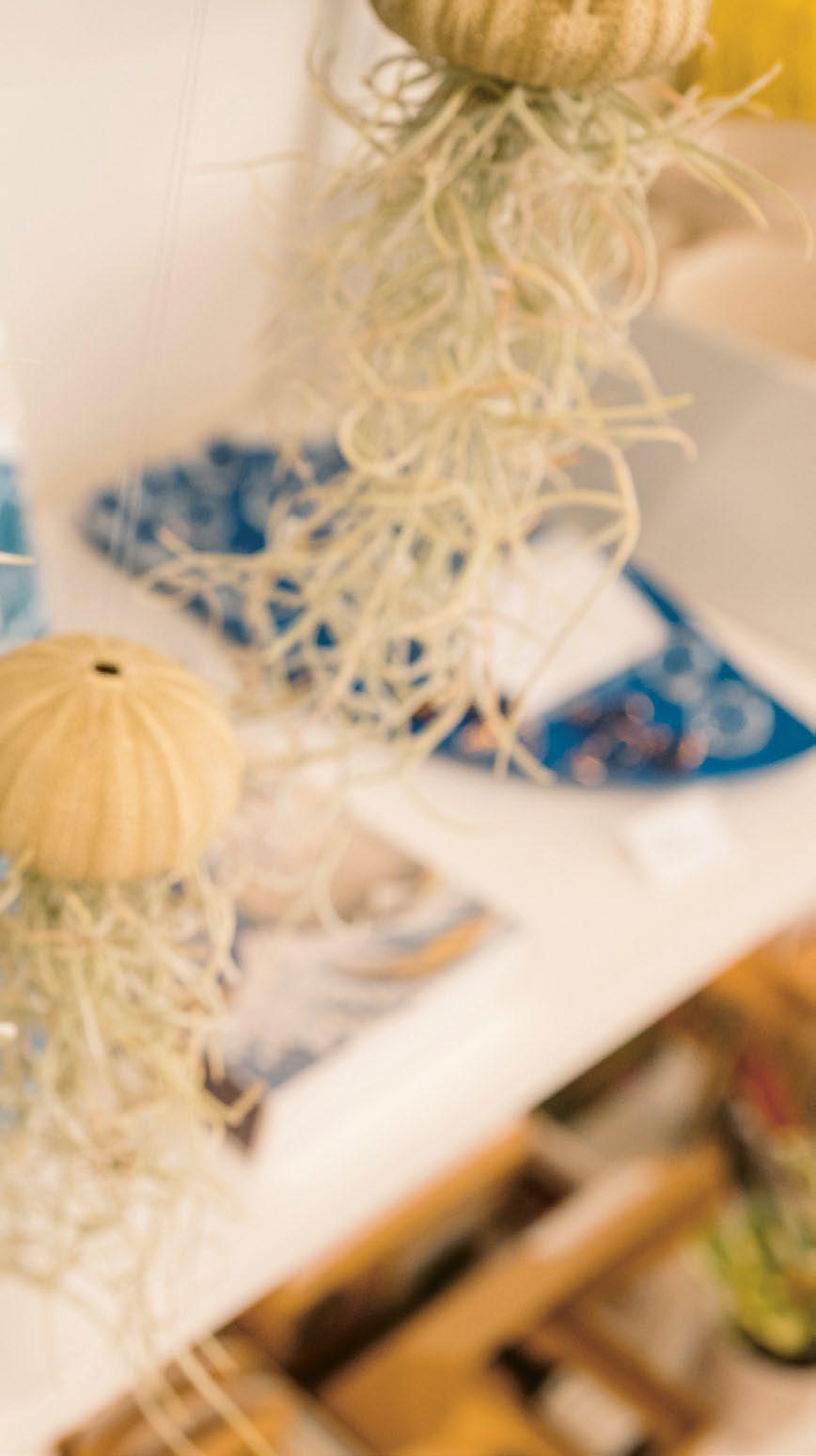
“Are we working now or is this pleasure?” What catches the eye as you enter Nouvel Été is its wealth of well-designed, harmonious, and uncommon items. Beautiful pottery, decorative soaps, exquisite illustrated books, and cool socks. If it tastes good and is artfully packaged, a simple tomato sauce can even make its way into the array of products. On Thursdays, Fridays, and Saturdays they also have fresh bouquets of flowers on offer – if they have the time. “In that case, at 6 o’clock in the morning we drive to the flower market…” says Daniel. “It’s a lovely part of our job.” adds Nina, who arranges the bouquets. They both print their own postcards as well, on an old Japanese printing press, a risograph. You can buy them in the shop, along with Nina’s jewellery and the photographic prints. On selected weekends, the two of them also run workshops in Daniel’s photo studio to share the magic of the cyanotype. “We have crammed all our passion and skills into Nouvel Été,” is how Daniel sums it up.
But all the joy and inspiration aside – it is also a feat. “Nouvel Été never stops, it challenges us anew every day,” is how Nina describes it. “Our work-life balance? Intense, but fulfilling," grins Daniel. “We often ask ourselves, are we working now or is this pleasure?” “We inspire each other creatively," is how Nina sees it. Their passion and authenticity are the essential ingredients of their success. And it is impossible to resist the charm of the eclectic variety of wares, which are nonetheless always precisely presented with care; useful, unusual, and enchanting objects in the shop and the workshop.
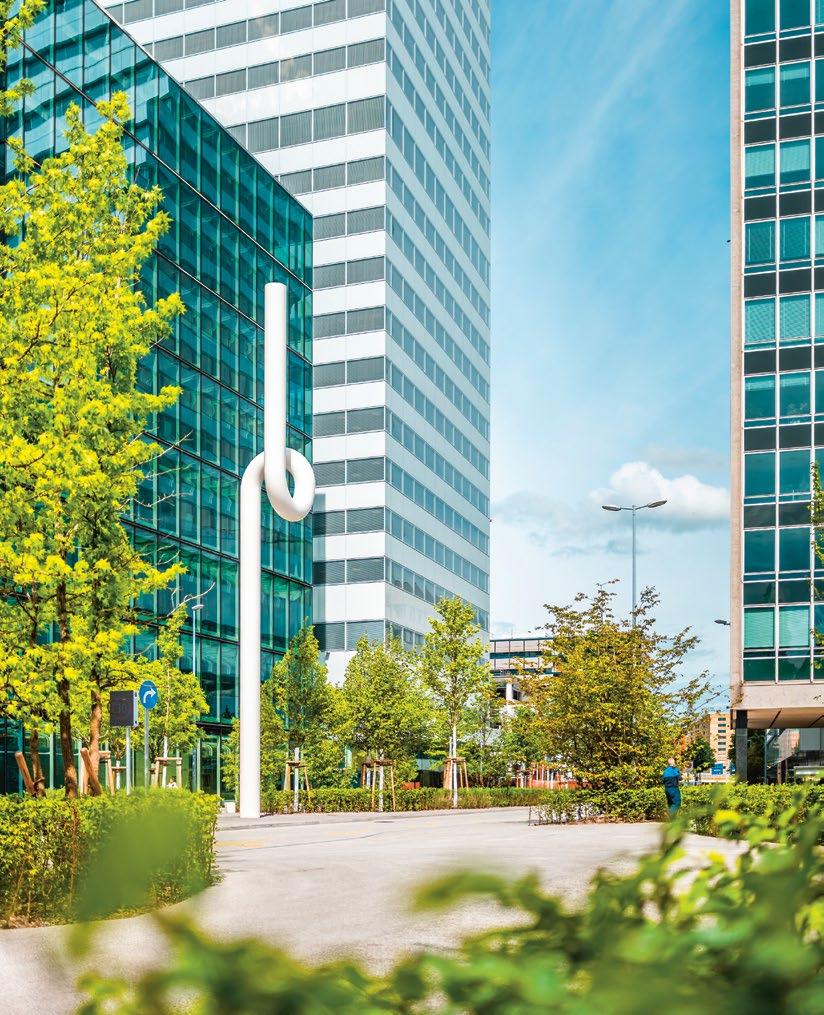
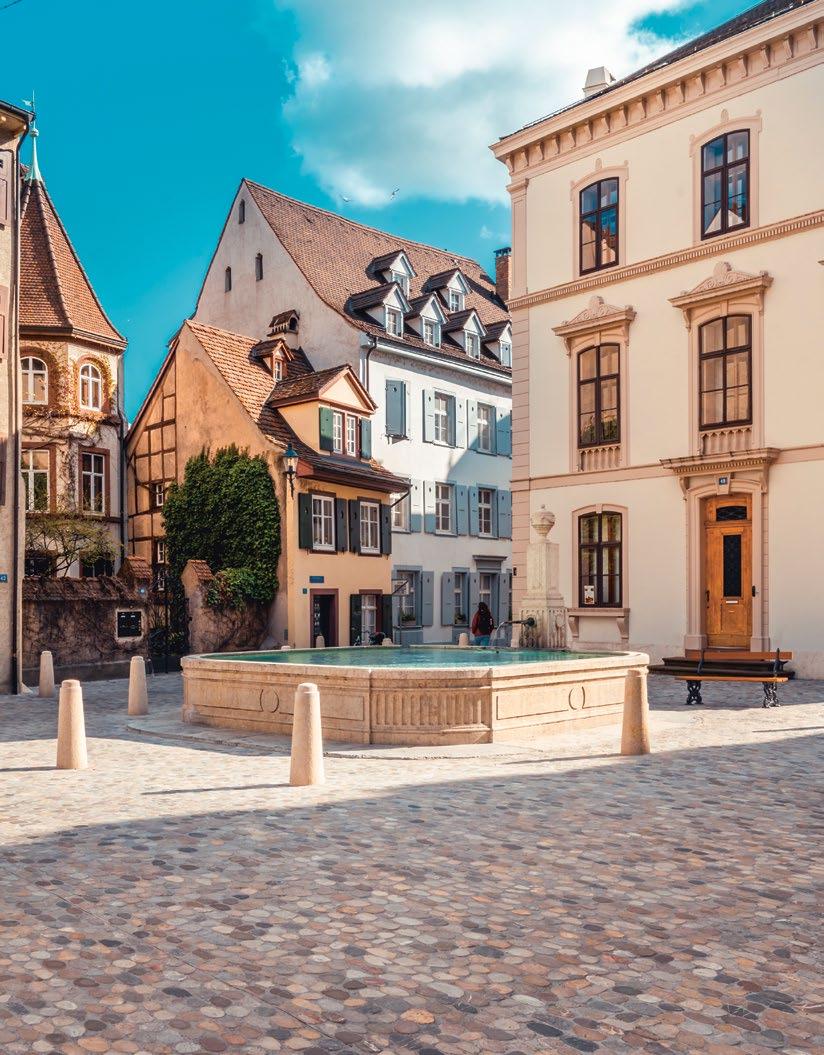

SHARE YOUR MOMENTS
#L OVEYOURCITY
Aus Liebe zur Basler City entstanden, mit Leidenschaft und Gefühl für unsere Stadt kreiert und durch authentische und emotionale Geschichten bereichert.
Born out of love for Basel City, created with passion and devotion to our town and enriched with authentic and emotional stories.
IMPRINT
PUBLISHER
StadtKonzeptBasel Grenzacherstrasse 79 4058 Basel
Printed in Switzerland Birkhäuser+GBC AG
GET YOUR INSPIRATION stadtkonzeptbasel.ch basellive.ch loveyourcity.ch
CONTENT
StadtKonzeptBasel / BaselLive
Translation: Jane Wolff
Proofreading: Friedrich Reinhardt Verlag
DESIGN
Das Atelier Basel dasatelier-basel.com

